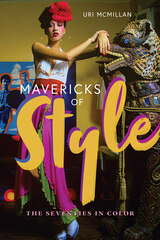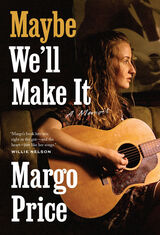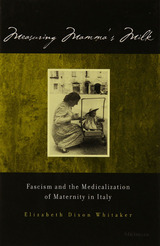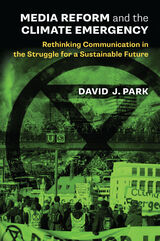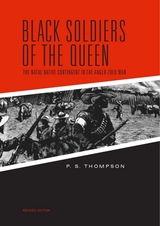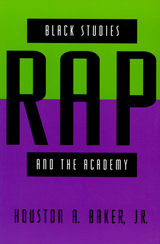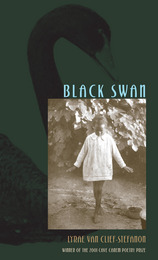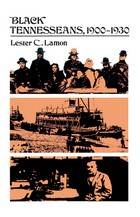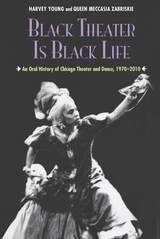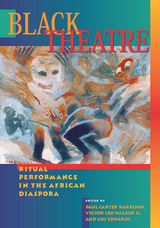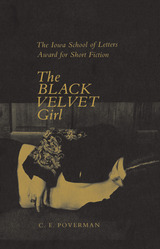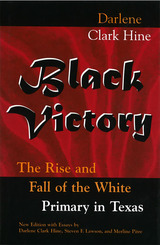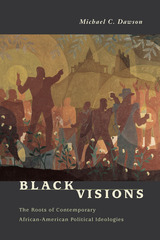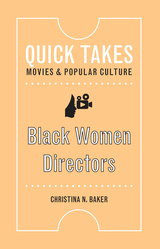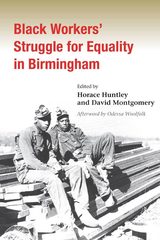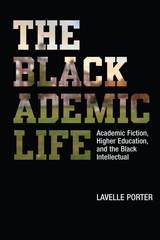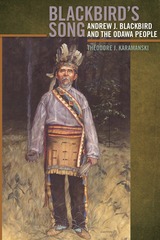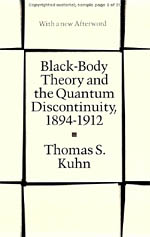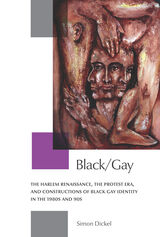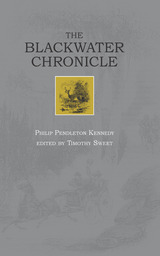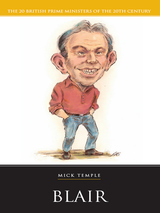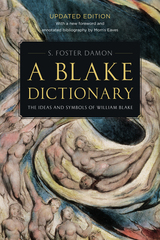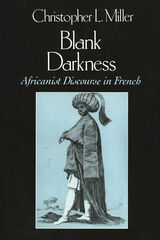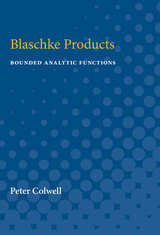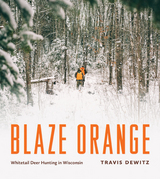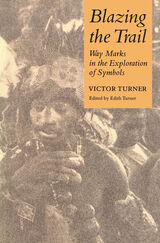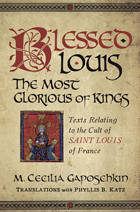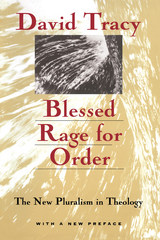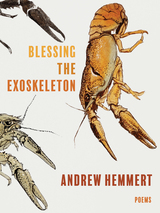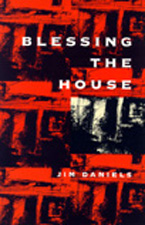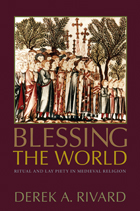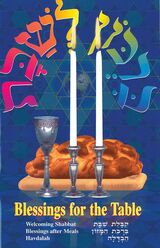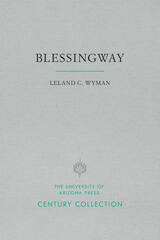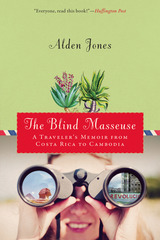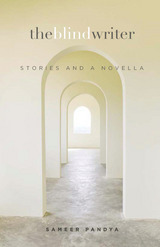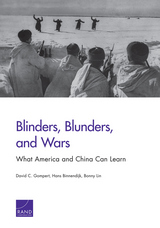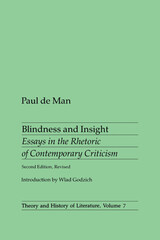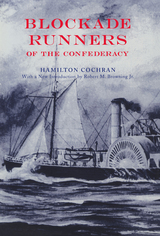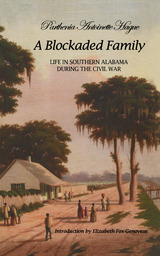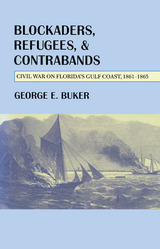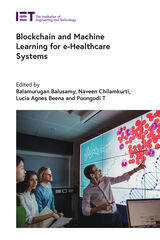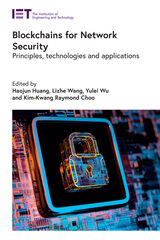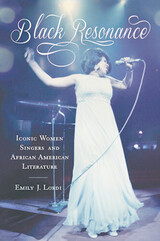 Black Resonance: Iconic Women Singers and African American Literature
Lordi, Emily J.
Rutgers University Press, 2013 Ever since Bessie Smith’s powerful voice conspired with the “race records” industry to make her a star in the 1920s, African American writers have memorialized the sounds and theorized the politics of black women’s singing. In Black Resonance, Emily J. Lordi analyzes writings by Richard Wright, Ralph Ellison, James Baldwin, Gayl Jones, and Nikki Giovanni that engage such iconic singers as Bessie Smith, Billie Holiday, Mahalia Jackson, and Aretha Franklin.
Focusing on two generations of artists from the 1920s to the 1970s, Black Resonance reveals a musical-literary tradition in which singers and writers, faced with similar challenges and harboring similar aims, developed comparable expressive techniques. Drawing together such seemingly disparate works as Bessie Smith’s blues and Richard Wright’s neglected film of Native Son, Mahalia Jackson’s gospel music and Ralph Ellison’s Invisible Man, each chapter pairs one writer with one singer to crystallize the artistic practice they share: lyricism, sincerity, understatement, haunting, and the creation of a signature voice. In the process, Lordi demonstrates that popular female singers are not passive muses with raw, natural, or ineffable talent. Rather, they are experimental artists who innovate black expressive possibilities right alongside their literary peers.
The first study of black music and literature to centralize the music of black women, Black Resonance offers new ways of reading and hearing some of the twentieth century’s most beloved and challenging voices.
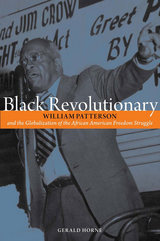 Black Revolutionary: William Patterson and the Globalization of the African American Freedom Struggle
Gerald Horne
University of Illinois Press, 2013 A leading African American Communist, lawyer William L. Patterson (1891–1980) was instrumental in laying the groundwork for the defeat of Jim Crowby virtue of his leadership of the Scottsboro campaign in the 1930s. In this watershed biography, historian Gerald Horne shows how Patterson helped to advance African American equality by fostering and leveraging international support for the movement. Horne highlights key moments in Patterson's global activism: his early education in the Soviet Union, his involvement with the Scottsboro trials and other high-profile civil rights cases of the 1930s to 1950s, his 1951 "We Charge Genocide" petition to the United Nations, and his later work with prisons and the Black Panther Party. Through Patterson's story, Horne examines how the Cold War affected the freedom movement, with civil rights leadership sometimes disavowing African American leftists in exchange for concessions from the U.S. government. He also probes the complex and often contradictory relationship between the Communist Party and the African American community, including the impact of the FBI's infiltration of the Communist Party. Drawing from government and FBI documents, newspapers, periodicals, archival and manuscript collections, and personal papers, Horne documents Patterson's effectiveness at carrying the freedom struggle into the global arena and provides a fresh perspective on twentieth-century struggles for racial justice.
 Black Rice: The African Origins of Rice Cultivation in the Americas
Judith A. Carney
Harvard University Press, 2002 Few Americans identify slavery with the cultivation of rice, yet rice was a major plantation crop during the first three centuries of settlement in the Americas. Rice accompanied African slaves across the Middle Passage throughout the New World to Brazil, the Caribbean, and the southern United States. By the middle of the eighteenth century, rice plantations in South Carolina and the black slaves who worked them had created one of the most profitable economies in the world.
Black Rice tells the story of the true provenance of rice in the Americas. It establishes, through agricultural and historical evidence, the vital significance of rice in West African society for a millennium before Europeans arrived and the slave trade began. The standard belief that Europeans introduced rice to West Africa and then brought the knowledge of its cultivation to the Americas is a fundamental fallacy, one which succeeds in effacing the origins of the crop and the role of Africans and African-American slaves in transferring the seed, the cultivation skills, and the cultural practices necessary for establishing it in the New World.
In this vivid interpretation of rice and slaves in the Atlantic world, Judith Carney reveals how racism has shaped our historical memory and neglected this critical African contribution to the making of the Americas.
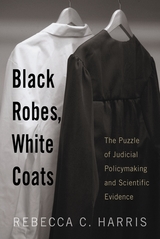 Black Robes, White Coats: The Puzzle of Judicial Policymaking and Scientific Evidence
Rebecca C. Harris
Rutgers University Press, 2008 Scientific evidence is commonplace in today's criminal trials. From hair and handwriting analysis to ink and DNA fingerprints, scientists have brought their world to bear on the justice system. Combining political analysis, scientific reasoning, and an in-depth study of specific state supreme court cases, Black Robes, White Coats is an interdisciplinary examination of the tradition of "gatekeeping," the practice of deciding the admissibility of novel scientific evidence. Rebecca Harris systematically examines judicial policymaking in three areas forensic DNA, polygraphs, and psychological syndrome evidence to answer the question: Why is scientific evidence treated differently among various jurisdictions? These decisions have important implications for evaluating our judicial system and its ability to accurately develop scientific policy. While the interaction of these professions occurs because the white coats often develop and ascertain knowledge deemed very useful to the black robes, Harris concludes that the black robes are well positioned to render appropriate rulings and determine the acceptability of harnessing a particular science for legal purposes. First book to systematically gather and analyze judicial decisions on scientific admissibility Analyzes several key cases including Arizona v. Bible and Kansas v. Marks Includes examples of evidence in three appendices: forensic DNA, polygraph evidence, and syndrome evidence Presents an original model of the gatekeeping process
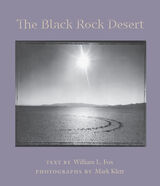 The Black Rock Desert
Text by William L. Fox; Photographs by Mark Klett
University of Arizona Press, 2002 It is the only absolute desert in North America, a four-hundred-square-mile dry lake bed so desolate that nothing ever grows there. Vast and featureless, Nevada's Black Rock Desert defies visual measurement—much to the consternation of off-roaders who venture out onto this playa only to run out of gas before reaching the other side. It is the largest flat area on the continent, where the sound barrier was broken in a car. And it is a place of total silence—not even birds or insects live here—except when thousands of humans congregate for the Burning Man Festival on Labor Day weekend. Writer and poet William Fox has demonstrated his familiarity with the Great Basin in such respected books as Mapping the Empty, just as Mark Klett has been documenting the landscape of the American West in his acclaimed photographic studies. Now these accomplished artists turn their combined talents to an appreciation of this desolate corner of North America, where the only change in scenery comes with the shifting pattern of cracks in the earth after seasonal rains. The Black Rock Desert is a philosophical and visual meditation on an extraordinary place virtually devoid of the usual physical features one relies on for orientation and comfort. It invites readers to consider how the mind responds to a place so empty that it's both physically overpowering and psychically disorienting. Klett's photographs are austere yet innovative, admitting the vastness of the desert yet never letting us forget that traces of human passage and perception are ubiquitous. Fox's contemplative essays bring us news of both the natural desert and its cultural occupation, from the explorations of John C. Frémont to the exaltations of Burning Man. Together, Fox and Klett have forged an introspective guide to a place so daunting that few dare to venture there alone. For anyone seeking to understand how and why we perceive deserts the way we do, their book charts the rugged intersection of the American landscape and the human spirit.
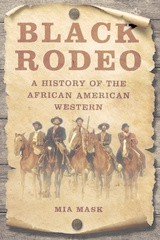 Black Rodeo: A History of the African American Western
Mia Mask
University of Illinois Press, 2023 African American westerns have a rich cinematic history and visual culture. Mia Mask examines the African American western hero within the larger context of film history by considering how Black westerns evolved and approached wide-ranging goals. Woody Strode’s 1950s transformation from football star to actor was the harbinger of hard-edged western heroes later played by Jim Brown and Fred Williamson. Sidney Poitier’s Buck and the Preacher provided a narrative helmed by a groundbreaking African American director and offered unconventionally rich roles for women. Mask moves from these discussions to consider blaxploitation westerns and an analysis of Jeff Kanew’s hard-to-find 1972 documentary about an all-Black rodeo. The book addresses how these movies set the stage for modern-day westploitation films like Django Unchained. A first-of-its kind survey, Black Rodeo illuminates the figure of the Black cowboy while examining the intersection of African American film history and the western.
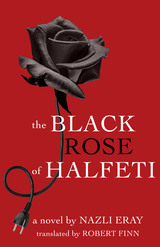 The Black Rose of Halfeti
By Nazli Eray, translated by Robert Finn
University of Texas Press, 2017 The Black Rose of Halfeti opens with a letter delivered at midnight in Ankara, Turkey. In this letter, an elderly doctor who has begun to experience the first signs of dementia professes his love and desire for a relationship with the narrator, a woman in middle age beginning to contemplate her own mortality. From there, the novel moves between Mardin, Izmir, and Ankara; the past and the present; and the real and the imagined as the narrator seeks to know the doctor both in his prime and in his struggle to hold senility at bay. In these dreamlike landscapes, the author effortlessly introduces King Darius, the Spanish director Luis Buñuel, the actress Silvia Pinal, and the archetypal dream woman as the narrator’s guides in her efforts to understand the human psyche. Nazli Eray has established herself as a master of magical realism, the perfect tool to bring to life this poignant meditation on love, aging, and the role of memory. And, as in her earlier novels, she paints vivid images of the urban landscapes of Turkey, capturing both the present and the past.
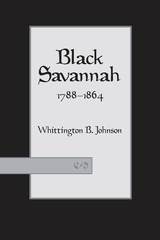 Black Savannah, 1788–1864
Whittington Johnson
University of Arkansas Press, 1999 Fourth in the University of Arkansas Press series in Black Community Studies, this examination of the black community of Savannah, Georgia, during the antebellum and the Civil War periods is a groundbreaker. It begins in 1788 with the founding of Savannah’s first black public institution, an independent church, and closes in 1864 with Gen. William Tecumseh Sherman’s capture of Savannah and the subsequent end to slavery.
Using a wide range of primary sources, including the little-used Southern Claims Case Files, and a vast number of secondary sources, Whittington Johnson gracefully elucidates the most important features of slave and free African-American life in this period. Johnson maintains that, unlike Charleston and New Orleans, Savannah had a comparatively small population of free blacks, containing only a slim majority of mulattoes and few large property owners, a demographic that greatly affected the contours of the black class structure. Among the most interesting groups that created Savannah’s community were “nominal slaves,” slaves in name only, who lived apart from their masters, seeking and finding their own employment. Black Savannah focuses upon efforts of African Americans, free and slave, who worked together to establish and maintain a variety of religious, social, and cultural institutions; to carve out niches in the larger economy; and to form cohesive families. The result was an autonomous black community in a key city of the Old South.
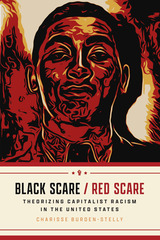 Black Scare / Red Scare: Theorizing Capitalist Racism in the United States
Charisse Burden-Stelly
University of Chicago Press, 2023 A radical explication of the ways anti-Black racial oppression has infused the US government’s anti-communist repression.
In the early twentieth century, two panics emerged in the United States. The Black Scare was rooted in white Americans’ fear of Black Nationalism and dread at what social, economic, and political equality of Black people might entail. The Red Scare, sparked by communist uprisings abroad and subversion at home, established anticapitalism as a force capable of infiltrating and disrupting the American order. In Black Scare / Red Scare, Charisse Burden-Stelly meticulously outlines the conjoined nature of these state-sanctioned panics, revealing how they unfolded together as the United States pursued capitalist domination. Antiradical repression, she shows, is inseparable from anti-Black oppression, and vice versa.
Beginning her account in 1917—the year of the Bolshevik Revolution, the East St. Louis Race Riot, and the Espionage Act—Burden-Stelly traces the long duration of these intertwined and mutually reinforcing phenomena. She theorizes two bases of the Black Scare / Red Scare: US Capitalist Racist Society, a racially hierarchical political economy built on exploitative labor relationships, and Wall Street Imperialism, the violent processes by which businesses and the US government structured domestic and foreign policies to consolidate capital and racial domination. In opposition, Radical Blackness embodied the government’s fear of both Black insurrection and Red instigation. The state’s actions and rhetoric therefore characterized Black anticapitalists as foreign, alien, and undesirable. This reactionary response led to an ideology that Burden-Stelly calls True Americanism, the belief that the best things about America were absolutely not Red and not Black, which were interchangeable threats.
Black Scare / Red Scare illuminates the anticommunist nature of the US and its governance, but also shines a light on a misunderstood tradition of struggle for Black liberation. Burden-Stelly highlights the Black anticapitalist organizers working within and alongside the international communist movement and analyzes the ways the Black Scare/Red Scare reverberates through ongoing suppression of Black radical activism today. Drawing on a range of administrative, legal, and archival sources, Burden-Stelly incorporates emancipatory ideas from several disciplines to uncover novel insights into Black political minorities and their legacy.
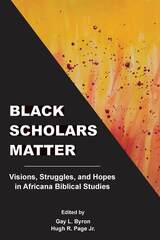 Black Scholars Matter: Visions, Struggles, and Hopes in Africana Biblical Studies
Gay L. Byron
SBL Press, 2022 Distinctive, Powerful, Transformational
This book collects the presentations of twelve leading Africana scholars who participated in the groundbreaking #Black Scholars Matter virtual symposium held in August 2020 that was organized by the Society of Biblical Literature's Black Scholars Matter Task Force in coordination with the SBL’s Committee on Underrepresented Racial and Ethnic Minorities in the Profession. These scholars share their perspectives on biblical studies and their experiences in the discipline on a range of topics, including blatant and subtle forms of bias and racism; mentoring; lessons of struggle, sacrifice, and lack of support; reflections on the obstacles of national tragedies, geographical locations, and academic disciplines; and the challenges of creating a more welcoming environment for the next generation of Black biblical scholars. Eight additional contributors and stakeholders that have administrative and decision-making responsibilities within theological and other settings address the need for institutional and personal accountability. Contributors include Efraín Agosto, Cheryl B. Anderson, Randall C. Bailey, Gay L. Byron, Ronald Charles, Stephanie Buckhanon Crowder, Steed Vernyl Davidson, Sharon Watson Fluker, John F. Kutsko, Vanessa Lovelace, Madipoane Masenya (Ngwan'a Mphahlele), Raj Nadella, Hugh R. Page Jr., Adele Reinhartz, Kimberly D. Russaw, Abraham Smith, Shively T. J. Smith, Mai-Anh Le Tran, Renita J. Weems, and Vincent L. Wimbush.
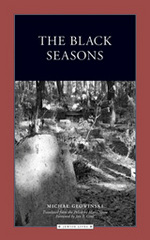 The Black Seasons
Glowinski
Northwestern University Press, 2005 A mosaic of memories from a childhood in the Warsaw Ghetto and a life in hiding on the other side of the wall
When six-year-old Michal Glowinski first heard the adults around him speak of the ghetto, he understood only that the word was connected with moving-and conjured up a fantastical image of a many-storied carriage pulled through the streets by some umpteen horses. He was soon to learn that the ghetto was something else entirely. A half-century later, Glowinski, now an eminent Polish literary scholar, leads us haltingly into Nazi-occupied Poland. Scrupulously attentive to the distance between a child's experience and an adult's reflection, Glowinski revisits the images and episodes of his childhood: the emaciated violinist playing a Mendelssohn concerto on the ghetto streets; his game of chess with a Polish blackmailer threatening to deliver him to the Gestapo; and his eventual rescue by Catholic nuns in an impoverished, distant convent. In language at once spare and eloquent, Glowinski explores the horror of those years, the fragility of existence, and the fragmented nature of memory itself.
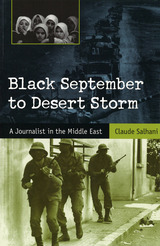 Black September to Desert Storm: A Journalist in the Middle East
Claude Salhani
University of Missouri Press, 1998
For more than twenty years, Claude Salhani traveled throughout the volatile Middle East as a photojournalist and reporter in search of the region's biggest stories. Wars, terrorist acts, demonstrations by religious extremists, and the flight of refugees were among the events he witnessed. "I have seen much through my lens . . . the most terrible cruelties, the most horrible suffering—and the most improbable and moving acts of love and generosity. I have been warmly received by kings, prime ministers, and secretaries of state. I have been shot at, kidnapped, and rifle-butted," writes Salhani in the prologue of this fascinating account.
From exclusive travels with former U.S. Secretary of State Henry Kissinger to intimate moments with combatants in the battle for Beirut to the forbidden world of drug smugglers in Lebanon, to the Iranian Revolution, and finally to the rise of Desert Storm, Salhani transports readers behind the scenes of many groundbreaking news stories. He proves that behind the front-page story we see, an equally intriguing tale is often hidden—that of the difficult, bizarre, even comical circumstances in which news is obtained.
Offering insight into the potent mixture of journalism and warfare, Black September to Desert Storm shares with readers an extraordinary journey into the headline-grabbing sagas that have plagued the Middle East in the last three decades. Salhani's "behind-the-lens" perspective will appeal to students of journalism and the Middle East, as well as anyone simply fascinated by the trials that many journalists undergo to capture "The Story."
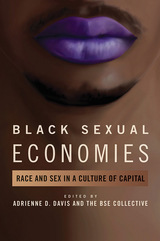 Black Sexual Economies: Race and Sex in a Culture of Capital
Edited by Adrienne D. Davis and the BSE Collective
University of Illinois Press, 2019 A daring collaboration among scholars, Black Sexual Economies challenges thinking that sees black sexualities as a threat to normative ideas about sexuality, the family, and the nation. The essays highlight alternative and deviant gender and sexual identities, performances, and communities, and spotlights the sexual labor, sexual economy, and sexual agency to black social life. Throughout, the writers reveal the lives, everyday negotiations, and cultural or aesthetic interventions of black gender and sexual minorities while analyzing the systems and beliefs that structure the possibilities that exist for all black sexualities. They also confront the mechanisms of domination and subordination attached to the political and socioeconomic forces, cultural productions, and academic work that interact with the energies at the nexus of sexuality and race. Contributors: Marlon M. Bailey, Lia T. Bascomb, Felice Blake, Darius Bost, Ariane Cruz, Adrienne D. Davis, Pierre Dominguez, David B. Green Jr., Jillian Hernandez, Cheryl D. Hicks, Xavier Livermon, Jeffrey McCune, Mireille Miller-Young, Angelique Nixon, Shana L. Redmond, Matt Richardson, L. H. Stallings, Anya M. Wallace, and Erica Lorraine Williams
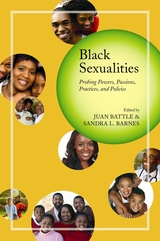 Black Sexualities: Probing Powers, Passions, Practices, and Policies
Edited and with an Introduction by Juan Battle and Sandra L. Barnes
Rutgers University Press, 2009 Why does society have difficulty discussing sexualities? Where does fear of Black sexualities emerge and how is it manifested? How can varied experiences of Black females and males who are lesbian, gay, bisexual, transgender (LGBT), or straight help inform dialogue and academic inquiry? From questioning forces that have constrained sexual choices to examining how Blacks have forged healthy sexual identities in an oppressive environment, Black Sexualities acknowledges the diversity of the Black experience and the shared legacy of racism. Contributors seek resolution to Blacks' understanding of their lives as sexual beings through stories of empowerment, healing, self-awareness, victories, and other historic and contemporary life-course panoramas and provide practical information to foster more culturally relative research, tolerance, and acceptance.
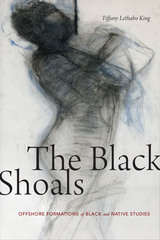 The Black Shoals: Offshore Formations of Black and Native Studies
Tiffany Lethabo King
Duke University Press, 2019 In The Black Shoals Tiffany Lethabo King uses the shoal—an offshore geologic formation that is neither land nor sea—as metaphor, mode of critique, and methodology to theorize the encounter between Black studies and Native studies. King conceptualizes the shoal as a space where Black and Native literary traditions, politics, theory, critique, and art meet in productive, shifting, and contentious ways. These interactions, which often foreground Black and Native discourses of conquest and critiques of humanism, offer alternative insights into understanding how slavery, anti-Blackness, and Indigenous genocide structure white supremacy. Among texts and topics, King examines eighteenth-century British mappings of humanness, Nativeness, and Blackness; Black feminist depictions of Black and Native erotics; Black fungibility as a critique of discourses of labor exploitation; and Black art that rewrites conceptions of the human. In outlining the convergences and disjunctions between Black and Native thought and aesthetics, King identifies the potential to create new epistemologies, lines of critical inquiry, and creative practices.
 The Black Side of the River: Race, Language, and Belonging in Washington, DC
Jessica A. Grieser
Georgetown University Press An insightful exploration of the impact of urban change on Black culture, identity, and language Across the United States, cities are changing. Gentrification is transforming urban landscapes, often pushing local Black populations to the margins. As a result, communities with rich histories and strong identities grapple with essential questions. What does it mean to be from a place in flux? What does it mean to be a specific kind of person from that place? What does gentrification mean for the fabric of a community? In The Black Side of the River, sociolinguist Jessi Grieser draws on ten years of interviews with dozens of residents of Anacostia, a historically Black neighborhood in Washington, DC, to explore these ideas through the lens of language use. Grieser finds that residents use certain speech features to create connections among racial, place, and class identities; reject negative characterizations of place from those outside the community; and negotiate ideas of belonging. In a neighborhood undergoing substantial class gentrification while remaining decisively Black, Grieser finds that Anacostians use language to assert a positive, hopeful place identity that is inextricably intertwined with their racial one. Grieser’s work is a call to center Black lived experiences in urban research, confront the racial effects of urban change, and preserve the rich culture and community in historic Black neighborhoods, in Washington, DC, and beyond.
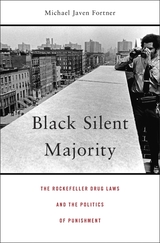 Black Silent Majority: The Rockefeller Drug Laws and the Politics of Punishment
Michael Javen Fortner
Harvard University Press, 2015 Often seen as a political sop to the racial fears of white voters, aggressive policing and draconian sentencing for illegal drug possession and related crimes have led to the imprisonment of millions of African Americans—far in excess of their representation in the population as a whole. Michael Javen Fortner shows in this eye-opening account that these punitive policies also enjoyed the support of many working-class and middle-class blacks, who were angry about decline and disorder in their communities. Black Silent Majority uncovers the role African Americans played in creating today’s system of mass incarceration.
Current anti-drug policies are based on a set of controversial laws first adopted in New York in the early 1970s and championed by the state’s Republican governor, Nelson Rockefeller. Fortner traces how many blacks in New York came to believe that the rehabilitation-focused liberal policies of the 1960s had failed. Faced with economic malaise and rising rates of addiction and crime, they blamed addicts and pushers. By 1973, the outcry from grassroots activists and civic leaders in Harlem calling for drastic measures presented Rockefeller with a welcome opportunity to crack down on crime and boost his political career. New York became the first state to mandate long prison sentences for selling or possessing narcotics.
Black Silent Majority lays bare the tangled roots of a pernicious system. America’s drug policies, while in part a manifestation of the conservative movement, are also a product of black America’s confrontation with crime and chaos in its own neighborhoods.
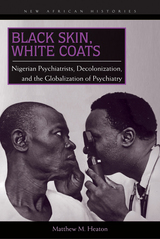 Black Skin, White Coats: Nigerian Psychiatrists, Decolonization, and the Globalization of Psychiatry
Matthew M. Heaton
Ohio University Press, 2013 Black Skin, White Coats is a history of psychiatry in Nigeria from the 1950s to the 1980s. Working in the contexts of decolonization and anticolonial nationalism, Nigerian psychiatrists sought to replace racist colonial psychiatric theories about the psychological inferiority of Africans with a universal and egalitarian model focusing on broad psychological similarities across cultural and racial boundaries. Particular emphasis is placed on Dr. T. Adeoye Lambo, the first indigenous Nigerian to earn a specialty degree in psychiatry in the United Kingdom in 1954. Lambo returned to Nigeria to become the medical superintendent of the newly founded Aro Mental Hospital in Abeokuta, Nigeria’s first “modern” mental hospital. At Aro, Lambo began to revolutionize psychiatric research and clinical practice in Nigeria, working to integrate “modern” western medical theory and technologies with “traditional” cultural understandings of mental illness. Lambo’s research focused on deracializing psychiatric thinking and redefining mental illness in terms of a model of universal human similarities that crossed racial and cultural divides. Black Skin, White Coats is the first work to focus primarily on black Africans as producers of psychiatric knowledge and as definers of mental illness in their own right. By examining the ways that Nigerian psychiatrists worked to integrate their psychiatric training with their indigenous backgrounds and cultural and civic nationalisms, Black Skin, White Coats provides a foil to Frantz Fanon’s widely publicized reactionary articulations of the relationship between colonialism and psychiatry. Black Skin, White Coats is also on the cutting edge of histories of psychiatry that are increasingly drawing connections between local and national developments in late-colonial and postcolonial settings and international scientific networks. Heaton argues that Nigerian psychiatrists were intimately aware of the need to engage in international discourses as part and parcel of the transformation of psychiatry at home.
 Black Society in Spanish Florida
Jane Landers
University of Illinois Press, 1999 Blacks under Spanish rule in Florida lived in a more complex and international world that linked the Caribbean, Africa, and Europe with a powerful and diverse Indian hinterland. Jane Landers’s pioneering study of people of the African diaspora under Spain’s colonial rule rewrites Florida history and enriches our understanding of the powerful links between race relations and cultural custom. As Landers shows, Spanish Florida was a sanctuary to Blacks fleeing enslavement on plantations. Castilian law, meanwhile, offered many avenues out of slavery. In St. Augustine and elsewhere, society accepted European-African unions, with families developing community connections through marriage, concubinage, and godparents. Assisted by Spanish traditions and ever-present geopolitical threats, people of African descent leveraged linguistic, military, diplomatic, and artisanal skills into citizenship and property rights. Landers details how Blacks became homesteaders, property owners, and entrepreneurs, and in the process enjoyed greater legal and social protection than in the two hundred years of Anglo history that followed.
 Black Space: Imagining Race in Science Fiction Film
By Adilifu Nama
University of Texas Press, 2008 Winner, Rollins Book Award, Southwest Texas Popular Culture Association/American Culture Association, 2008 Science fiction film offers its viewers many pleasures, not least of which is the possibility of imagining other worlds in which very different forms of society exist. Not surprisingly, however, these alternative worlds often become spaces in which filmmakers and film audiences can explore issues of concern in our own society. Through an analysis of over thirty canonic science fiction (SF) films, including Logan's Run, Star Wars, Blade Runner, Back to the Future, Gattaca, and Minority Report, Black Space offers a thorough-going investigation of how SF film since the 1950s has dealt with the issue of race and specifically with the representation of blackness. Setting his study against the backdrop of America's ongoing racial struggles and complex socioeconomic histories, Adilifu Nama pursues a number of themes in Black Space. They include the structured absence/token presence of blacks in SF film; racial contamination and racial paranoia; the traumatized black body as the ultimate signifier of difference, alienness, and "otherness"; the use of class and economic issues to subsume race as an issue; the racially subversive pleasures and allegories encoded in some mainstream SF films; and the ways in which independent and extra-filmic productions are subverting the SF genre of Hollywood filmmaking. The first book-length study of African American representation in science fiction film, Black Space demonstrates that SF cinema has become an important field of racial analysis, a site where definitions of race can be contested and post-civil rights race relations (re)imagined.
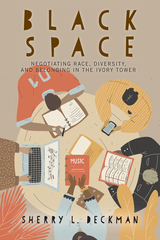 Black Space: Negotiating Race, Diversity, and Belonging in the Ivory Tower
Sherry L. Deckman
Rutgers University Press, 2022 Protests against racial injustice and anti-Blackness have swept across elite colleges and universities in recent years, exposing systemic racism and raising questions about what it means for Black students to belong at these institutions. In Black Space, Sherry L. Deckman takes us into the lives of the members of the Kuumba Singers, a Black student organization at Harvard with racially diverse members, and a self-proclaimed safe space for anyone but particularly Black students. Uniquely focusing on Black students in an elite space where they are the majority, Deckman provides a case study in how colleges and universities might reimagine safe spaces. Through rich description and sharing moments in students’ everyday lives, Deckman demonstrates the possibilities and challenges Black students face as they navigate campus culture and the refuge they find in this organization. This work illuminates ways administrators, faculty, student affairs staff, and indeed, students themselves, might productively address issues of difference and anti-Blackness for the purpose of fostering critically inclusive campus environments.
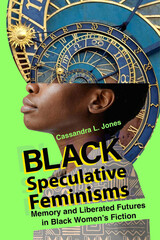 Black Speculative Feminisms: Memory and Liberated Futures in Black Women's Fiction
Cassandra L. Jones
Ohio State University Press, 2024 How do Black women writing speculative fiction explore the use of memory as a potential strategy for liberation? In Black Speculative Feminisms, Cassandra L. Jones looks at the writings of Octavia E. Butler, Tananarive Due, Nalo Hopkinson, Rasheedah Phillips, and Nnedi Okorafor to chart those moments where characters harness, or fail to harness, the power of memory. These instances transform memory—individual and collective, bodily and archival—from passive recollection into direct or indirect social action. Taking a Black feminist approach, Jones addresses several emancipatory themes within Afrofuturism: the decolonization of time that can be found in fiction employing non-Western and non-linear expressions of time, exploring futurity and the projection of a full range of expressions of Black humanity into anticipated futures, and imagining new worlds and novel approaches to old problems. Drawing on critical fabulation and restorative justice, she forwards restorative fabulation as the mechanism by which speculative fiction offers a healing site for authors and readers to process generational trauma while imagining more equitable futures.
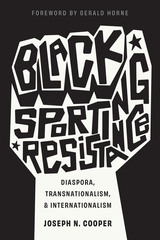 Black Sporting Resistance: Diaspora, Transnationalism, and Internationalism
Joseph N. Cooper
Rutgers University Press, 2025 In recent years, there has been increased attention towards activism in sporting spaces. A vast majority of these contributions have focused on intra-nation tensions and impact. Yet, there is a dearth of scholarship that has engaged in a theoretically grounded analysis of how Black sportspersons have exhibited resistance in and through sport across national borders across time, space, and context. In this text, Joseph N. Cooper introduces the Black Sporting Resistance Framework (BSRF) as an analytic lens to examine how resistance actions in and through sport have contributed to the advancement of local and global racial justice efforts. Key concepts such as African (Black) diaspora, transnationalism, internationalism, sporting resistance typology, and sport activism typology are incorporated throughout the book. Black sporting resistance is also analyzed alongside broader social movements such as the Black Liberation Struggle, Black Nationalism, Pan-Africanism, and Black Radicalism. Insights on the ways in which sport can be used to advance social justice in the future are presented.
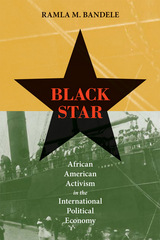 Black Star: African American Activism in the International Political Economy
Ramla M. Bandele
University of Illinois Press, 2007 This book describes how the first African American mass political organization was able to gain support from throughout the African diaspora to finance the Black Star Line, a black merchant marine that would form the basis of an enclave economy after World War I. Ramla M. Bandele explores the concept of diaspora itself and how it has been applied to the study of émigré and other ethnic networks. In characterizing the historical and political context of the Black Star Line, Bandele analyzes the international political economy during 1919-25 and considers the black politics of the era, focusing particularly on Marcus Garvey's Universal Negro Improvement Association for its creation of the Black Star Line. She offers an in-depth case study of the Black Star Line as an instance of the African diaspora attempting to link communities and carry out a transnational political and economic project. Arguing that ethnic networks can be legitimate actors in international politics and economics, Bandele also suggests, however, that activists in any given diaspora do not always function as a unit.
Black Star: Britain's Asian Youth Movements
Anandi Ramamurthy
Pluto Press, 2013 Black Star documents the vibrant Asian Youth Movements in 1970s and 80s Britain who struggled against the racism of the street and the state. Anandi Ramamurthy shows how they drew inspiration from Black Power movements as well as anti-imperialist and workers' struggles across the globe.
Drawing on her intimate knowledge and extensive research, Ramamurthy shows how the struggle to make Britain 'home' led to a broad-based identity where 'black' was a political colour inspiring unity amongst all those struggling against racism.
Ramamurthy documents how by the late 1980s this broad based black identity disintegrated as Islamophobia became a new form of racism. In the process the legacy of the Asian Youth Movements has been largely hidden. Black Star retrieves this history and demonstrates its importance for political struggles today.
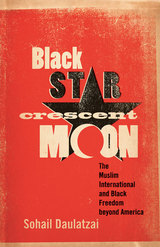 Black Star, Crescent Moon: The Muslim International and Black Freedom beyond America
Sohail Daulatzai
University of Minnesota Press, 2012 “The same rebellion, the same impatience, the same anger that exists in the hearts of the dark people in Africa and Asia,” Malcolm X declared in a 1962 speech, “is existing in the hearts and minds of 20 million black people in this country who have been just as thoroughly colonized as the people in Africa and Asia.” Four decades later, the hip-hop artist Talib Kweli gave voice to a similar Pan-African sentiment in the song “K.O.S. (Determination)”: “The African diaspora represents strength in numbers, a giant can't slumber forever.” Linking discontent and unrest in Harlem and Los Angeles to anticolonial revolution in Algeria, Egypt, and elsewhere, Black leaders in the United States have frequently looked to the anti-imperialist movements and antiracist rhetoric of the Muslim Third World for inspiration. In Black Star, Crescent Moon, Sohail Daulatzai maps the rich, shared history between Black Muslims, Black radicals, and the Muslim Third World, showing how Black artists and activists imagined themselves not as national minorities but as part of a global majority, connected to larger communities of resistance. Daulatzai traces these interactions and alliances from the Civil Rights movement and the Black Power era to the “War on Terror,” placing them within a broader framework of American imperialism, Black identity, and the global nature of white oppression. From Malcolm X and Muhammad Ali to contemporary artists and activists like Rakim and Mos Def, Black Star, Crescent Moon reveals how Muslim resistance to imperialism came to occupy a central position within the Black radical imagination, offering a new perspective on the political and cultural history of Black internationalism from the 1950s to the present.
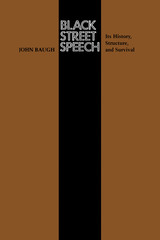 Black Street Speech: Its History, Structure, and Survival
By John Baugh
University of Texas Press, 1983 In the minds of many, black street speech—the urban dialect of black Americans—bespeaks illiteracy, poverty, and ignorance. John Baugh challenges those prejudices in this brilliant new inquiry into the history, linguistic structure, and survival within white society of black street speech. In doing so, he successfully integrates a scholarly respect for black English with a humanistic approach to language differences that weds rigor of research with a keen sense of social responsibility. Baugh's is the first book on black English that is based on a long-term study of adult speakers. Beginning in 1972, black men and women in Los Angeles, Philadelphia, Chicago, Austin, and Houston were repeatedly interviewed, in varied social settings, in order to determine the nature of their linguistic styles and the social circumstances where subtle changes in their speech appear. Baugh's work uncovered a far wider breadth of speaking styles among black Americans than among standard English speakers. Having detailed his findings, he explores their serious implications for the employability and education of black Americans. Black Street Speech is a work of enduring importance for educators, linguists, sociologists, scholars of black and urban studies, and all concerned with black English and its social consequences.
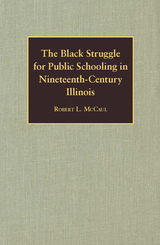 The Black Struggle for Public Schooling in Nineteenth-Century Illinois
Robert L. McCaul
Southern Illinois University Press, 1987 In the pre-Civil War and Civil War periods the Illinois black code deprived blacks of suffrage and court rights, and the Illinois Free Schools Act kept most black children out of public schooling. But, as McCaul documents, they did not sit idly by. They applied the concepts of “bargaining power” (rewarding, punishing, and dialectical) and the American ideal of “community” to participate in winning two major victories during this era. By the use of dialectical power, exerted mainly via John Jones’ tract, The Black Laws of Illinois, they helped secure the repeal of the state’s black code; by means of punishing power, mainly through boycotts and ‘‘invasions,’’ they exerted pressures that brought a cancellation of the Chicago public school policy of racial segregation. McCaul makes clear that the blacks’ struggle for school rights is but one of a number of such struggles waged by disadvantaged groups (women, senior citizens, ethnics, and immigrants). He postulates a “stage’’ pattern for the history of the black struggle—a pattern of efforts by federal and state courts to change laws and constitutions, followed by efforts to entice, force, or persuade local authorities to comply with the laws and constitutional articles and with the decrees of the courts.
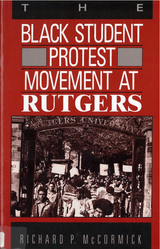 The Black Student Protest Movement at Rutgers
Richard P. McCormick
Rutgers University Press, 1990 Richard P. McCormick has chronicled the black student protest movement at Rutgers University, from the 1960s to today. He examines the forces that produced the protest movement, the tactics that were employed, and the qualified gains that were achieved. He tells us about demonstrations, building occupations, committee hearings, and countless meetings, but he also paints portraits of the many student leaders who mobilized protest. This is the story of a lot of pain, some blunders, and some successes. In the mid-sixties, the University established committees to recruit black students and to add more blacks to the faculty. These efforts produced only modest results. By 1968, there were still not enough black students on campus, but there were enough to create a political presence for the first time. They were committed to acting against the racism they perceived within the University. To respond to their protests, in March 1969 the Board of Governors passed a dramatically new and controversial policy to encourage disadvantaged students who lived in Camden, Newark, and New Brunswick to apply to Rutgers, where they would take college-preparatory classes as unmatriculated students, and then enter Rutgers as matriculated students. This program, never very successful, lasted only two years. Unrest did not end with the sixties. During the seventies, black students sporadically voiced protests against what they perceived to be an unsupportive environment. During the eighties, black enrollment actually declined, as did the black graduation rate. In conclusion, McCormick points to the effort that has been made but even more to the effort that still needs to be made and the social cost of ignoring the problem.
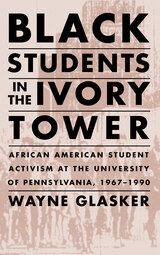 Black Students in the Ivory Tower: African American Student Activism at the University of Pennsylvania, 1967-1990
Wayne C. Glasker
University of Massachusetts Press, 2002 In the late 1960s and early 1970s, the number of African American undergraduates at the University of Pennsylvania grew dramatically. This book describes the circumstances surrounding the university's decision to increase its black enrollment and the consequences that followed. Focusing on the role of black student activism, Wayne C. Glasker traces the trajectory of controversy and debate over such issues as assimilation, integration, black nationalism, and cultural pluralism on a single university campus.
Glasker begins his study in the late 1960s, when the university's expansion into a predominantly black Philadelphia neighborhood precipitated a massive sit-in and protest. In response, Penn accelerated the process of admitting more black students, doubling the number of black matriculants by September 1969. Many came from inner city public high schools with backgrounds, ideas, and interests far different from those of the affluent middle- and upper-class white students who constituted the majority of the undergraduate population. As a result, the next decade was marked by recurrent tension and conflict, as black students at Penn rejected assimilation and agitated successfully for the creation of a variety of institutions that recognized their needs. These included an Afro-American studies program, a residence for students interested in black culture, and a Black Student League. Following a 1978 sit-in, they won a demand for an Inter-cultural Center and formed the United Minorities Council, and in 1986 they joined with white activists to press the university to divest its holdings from companies doing business in South Africa.
Throughout the book Glasker interweaves two parallel stories: that of an Ivy League university wrestling with questions of diversity, compensatory education, and the meaning of merit and qualification; and that of black students grappling with issues of assimilation, separatism, and cultural pluralism. In the end, he argues, the students sought to preserve their own distinctive ethnic culture, identity, and heritage while pursuing economic upward mobility. Rather than separatism, they aspired to a form of biculturalism that involved economic empowerment without cultural assimilation.
 Black Studies in Europe: An Anthology of Soil and Seeds
Nicole Grégoire, Sarah Fila-Bakabadio, and Jacinthe Mazzocchetti (eds.)
Northwestern University Press, 2025 Reflecting on contemporary epistemologies of European Blackness
Long absent from research in the humanities and social sciences, Black people in continental Europe have become the focus of a growing body of literature in the past two decades that addresses their unique history and social positioning. Black Studies in Europe: An Anthology of Soil and Seeds brings together essays and case studies by a collective of scholars, writers, and activists to offer a critical overview of the emerging field of Black European studies and a vital reflection on contemporary epistemologies of European Blackness. This collection addresses key questions: What is Blackness from a European standpoint? Which epistemologies and theoretical tools have been used to offer a better understanding of Black experiences in Europe? How is this knowledge being produced and by whom? Can we define a common European conceptual framework for Black studies? Related to this work is an even more urgent enterprise: forging an epistemological distinction between the study of Black people and “Black studies” as an emancipatory project.
Black Studies, Rap, and the Academy
Houston A. Baker Jr.
University of Chicago Press, 1993 In this explosive book, Houston Baker takes stock of the current state of Black Studies in the university and outlines its responsibilities to the newest form of black urban expression—rap. A frank, polemical essay, Black Studies, Rap, and the Academy is an uninhibited defense of Black Studies and an extended commentary on the importance of rap. Written in the midst of the political correctness wars and in the aftermath of the Los Angeles riots, Baker's meditation on the academy and black urban expression has generated much controversy and comment from both ends of the political spectrum.
 BLACK SWAMP FARM
Howard E. Good
Ohio State University Press, 1997 Howard E. Good was born on a farm in an area of the Maumee Valley in northwestern Ohio known as the Black Swamp, a remnant of the violence of the Ice Age and its glaciers, from which farmland had to be wrested by long and arduous labor and where only the stouthearted had any hope of success. In Black Swamp Farm, a stirring memoir of his early days, Good recounts a now vanished way of life.
Good remembers playing shinny with clamp-on skates and a tin can that had been stomped until it could whiz across the ice given just the right combination of speed and accuracy. He tells of the boom of the steam engine as it pulled the threshing machine to a neighboring farm on a hot summer day, and of the excitement of riding high on a wagonload of hay, gazing down on the horses’ broad, shining backs. He describes the springtime task of making soap, the ritual of the shivaree, and the pleasure of the church ice-cream social. He remembers well—and chronicles for the reader—the unproclaimed achievements of men and women whose courage and grueling toil brought them rich rewards.
First published in 1967, this reprint makes available once again a faithful portrayal of Black Swamp—a place that no longer exists—and provides a treasure trove of history for Ohioans.
Black Swan
Lyrae Van Clief-Stefanon
University of Pittsburgh Press, 2002 Winner of the 2001 Cave Canem Prize
Selected by Marilyn Nelson
Finalist, 2003 Paterson Poetry Prize
"Imagine Leda black—" begins Lyrae Van Clief-Stefanon’s exciting new collection of poems. Mixing vernacular language with classical mythology, modern struggles with Biblical trials, she gives voice to silenced women past and present.
In Van Clief-Stefanon’s powerful voice, last night’s angry words "puffed / into the dark room like steam / punching through the thick surface / of cooking grits." She remembers a child’s innocence "lost / in the house where I learned the red rug / against my chest, my knees / my tongue, . . . ." Black Swan is filled with pain, loss, hope, and the promise of salvation.
Black Swan Lake: Life of a Wetland
Rod Giblett
Intellect Books, 2013 Rod Giblett came to live by Forrestdale Lake in southwestern Australia in 1986. Based in part on a nature journal he kept for several years, Black Swan Lake traces the life of the plants and animals of the surrounding area through the seasons. Presenting a wetlands calendar that charts the yearly cycle of the rising, falling, and drying waters of this internationally significant wetland, this book is a modern-day Walden. The first book to provide a cultural and natural history of this place—taking into account the indigenous people’s concept of the seasons (six instead of four)—Black Swan Lake will be enjoyed by conservationists, as well as others seeking connection with place, plants, and animals in their own bioregion.
 The Black Tax: 150 Years of Theft, Exploitation, and Dispossession in America
Andrew W. Kahrl
University of Chicago Press, 2024 Revealing a history that is deep, broad, and infuriating, The Black Tax casts a bold light on the racist practices long hidden in the shadows of America’s tax regimes.
American taxation is unfair, and it is most unfair to the very people who critically need its support. Not only do taxpayers with fewer resources—less wealth, power, and land—pay more than the well-off, but they are forced to fight for their rights within an unjust system that undermines any attempts to improve their position or economic standing. In The Black Tax, Andrew W. Kahrl reveals the shocking history and ruinous consequences of inequitable and predatory tax laws in this country—above all, widespread and devastating racial dispossession.
Throughout the twentieth century, African Americans acquired substantial amounts of property nationwide. But racist practices, obscure processes, and outright theft diminished their holdings and their power. Of these, Kahrl shows, few were more powerful, or more quietly destructive, than property taxes. He examines all the structural features and hidden traps within America’s tax system that have forced Black Americans to pay more for less and stripped them of their land and investments, and he reveals the staggering cost. The story of America’s now enormous concentration of wealth at the top—and the equally enormous absence of wealth among most Black households—has its roots here.
Kahrl exposes the painful history of these practices, from Reconstruction up to the present, and tells, for the first time, the story of Black Americans’ experiences as taxpayers and their fight for a more fair and equitable system for raising and spending the public’s money. This is a history that deepens our understanding of the disadvantages and persistent inequalities that African American households continue to face and reveals hidden engines of economic inequality in America. Detailing the hows and whys of America’s profoundly unequal tax system, The Black Tax equips readers with the knowledge needed to combat inequality and injustice today.
 The Black Tax: 150 Years of Theft, Exploitation, and Dispossession in America
Andrew W. Kahrl
University of Chicago Press, 2024 This is an auto-narrated audiobook version of this book.
Revealing a history that is deep, broad, and infuriating, The Black Tax casts a bold light on the racist practices long hidden in the shadows of America’s tax regimes.
American taxation is unfair, and it is most unfair to the very people who critically need its support. Not only do taxpayers with fewer resources—less wealth, power, and land—pay more than the well-off, but they are forced to fight for their rights within an unjust system that undermines any attempts to improve their position or economic standing. In The Black Tax, Andrew W. Kahrl reveals the shocking history and ruinous consequences of inequitable and predatory tax laws in this country—above all, widespread and devastating racial dispossession.
Throughout the twentieth century, African Americans acquired substantial amounts of property nationwide. But racist practices, obscure processes, and outright theft diminished their holdings and their power. Of these, Kahrl shows, few were more powerful, or more quietly destructive, than property taxes. He examines all the structural features and hidden traps within America’s tax system that have forced Black Americans to pay more for less and stripped them of their land and investments, and he reveals the staggering cost. The story of America’s now enormous concentration of wealth at the top—and the equally enormous absence of wealth among most Black households—has its roots here.
Kahrl exposes the painful history of these practices, from Reconstruction up to the present, and tells, for the first time, the story of Black Americans’ experiences as taxpayers and their fight for a more fair and equitable system for raising and spending the public’s money. This is a history that deepens our understanding of the disadvantages and persistent inequalities that African American households continue to face and reveals hidden engines of economic inequality in America. Detailing the hows and whys of America’s profoundly unequal tax system, The Black Tax equips readers with the knowledge needed to combat inequality and injustice today.
Black Tennesseans, 1900-1930
Lester C. Lamon
University of Tennessee Press, 2002 A study of racial relations in Tennessee during years of increasing migration of Blacks from the Deep South and of ideological competition between the followers of Booker T. Washington and W. E. B. Dubois. An important contribution to Black history.
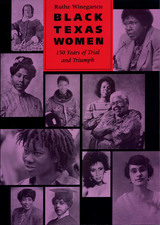 Black Texas Women: 150 Years of Trial and Triumph
By Ruthe Winegarten, Janet G. Humphrey & Frieda Werden, consulting editors
University of Texas Press, 1994 Women of all colors have shaped families, communities, institutions, and societies throughout history, but only in recent decades have their contributions been widely recognized, described, and celebrated. This book presents the first comprehensive history of black Texas women, a previously neglected group whose 150 years of continued struggle and some successes against the oppression of racism and sexism deserve to be better known and understood. Beginning with slave and free women of color during the Texas colonial period and concluding with contemporary women who serve in the Texas legislature and the United States Congress, Ruthe Winegarten organizes her history both chronologically and topically. Her narrative sparkles with the life stories of individual women and their contributions to the work force, education, religion, the club movement, community building, politics, civil rights, and culture. The product of extensive archival and oral research and illustrated with over 200 photographs, this groundbreaking work will be equally appealing to general readers and to scholars of women's history, black history, American studies, and Texas history.
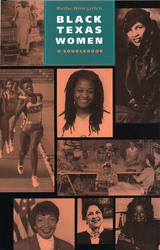 Black Texas Women: A Sourcebook
By Ruthe Winegarten
University of Texas Press, 1994 When Black Texas Women: 150 Years of Trial and Triumph was published in 1995, it was acclaimed as the first comprehensive history of black women's struggles and achievements. This companion volume contains the original source materials that Ruthe Winegarten uncovered during her extensive research. Like a time capsule of black women's history, A Sourcebook includes petitions from free women of color, lawsuits, slave testimonies, wills, plantation journals, club minutes, autobiographies, ads, congressional reports, contracts, prison records, college catalogues, newspaper clippings, protest letters, and much more. In addition to the documents, a biographical section highlights the lives of women from various walks of life. The book concludes with a timeline that begins in 1777 and reaches to 1992. This wealth of original material will be a treasure trove for scholars and general readers interested in the emerging field of black women's history.
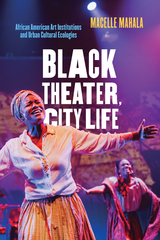 Black Theater, City Life: African American Art Institutions and Urban Cultural Ecologies
Macelle Mahala
Northwestern University Press, 2022 Macelle Mahala’s rich study of contemporary African American theater institutions reveals how they reflect and shape the histories and cultural realities of their cities. Arguing that the community in which a play is staged is as important to the work’s meaning as the script or set, Mahala focuses on four cities’ “arts ecologies” to shed new light on the unique relationship between performance and place: Cleveland, home to the oldest continuously operating Black theater in the country; Pittsburgh, birthplace of the legendary playwright August Wilson; San Francisco, a metropolis currently experiencing displacement of its Black population; and Atlanta, a city with forty years of progressive Black leadership and reverse migration.
Black Theater, City Life looks at Karamu House Theatre, the August Wilson African American Cultural Center, Pittsburgh Playwrights’ Theatre Company, the Lorraine Hansberry Theatre, the African American Shakespeare Company, the Atlanta Black Theatre Festival, and Kenny Leon’s True Colors Theatre Company to demonstrate how each organization articulates the cultural specificities, sociopolitical realities, and histories of African Americans. These companies have faced challenges that mirror the larger racial and economic disparities in arts funding and social practice in America, while their achievements exemplify such institutions’ vital role in enacting an artistic practice that reflects the cultural backgrounds of their local communities. Timely, significant, and deeply researched, this book spotlights the artistic and civic import of Black theaters in American cities.
Black Theater Is Black Life: An Oral History of Chicago Theater and Dance, 1970-2010
Harvey Young and Queen Meccasia Zabriskie
Northwestern University Press, 2013 Black Theater Is Black Life fills a critical gap in the history of African American culture in Chicago. Through interviews with prominent producers, directors, choreographers, designers, dancers, and actors, Young and Zabriskie create a portrait of a diverse, dynamic artistic community between 1970 and 2010. They frame this history with helpful guides, including a chronology of key events, a glossary of names, and an appendix of leading performing arts institutions in Chicago.
Black Theatre: Ritual Performance In The African Diaspora
edited by Paul Carter Harrison, Victor Leo Walker II and Gus Edwards
Temple University Press, 2002 Generating a new understanding of the past—as well as a vision for the future—this path-breaking volume contains essays written by playwrights, scholars, and critics that analyze African American theatre as it is practiced today.Even as they acknowledge that Black experience is not monolithic, these contributors argue provocatively and persuasively for a Black consciousness that creates a culturally specific theatre. This theatre, rooted in an African mythos, offers ritual rather than realism; it transcends the specifics of social relations, reaching toward revelation. The ritual performance that is intrinsic to Black theatre renews the community; in Paul Carter Harrison's words, it "reveals the Form of Things Unknown" in a way that "binds, cleanses, and heals."
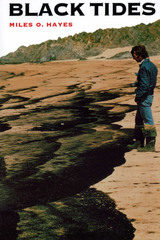 Black Tides
By Miles O. Hayes
University of Texas Press, 2000 Black tides of spilled oil pollute the world's coasts with depressing regularity, giving scientists ample opportunity to observe their environmental impacts and learn how to clean up and restore the affected shorelines. Miles O. Hayes has been a leader in this work for over twenty years. In this highly readable autobiography, he describes his evolution as a scientist, his work in coastal oil spill contingency planning and clean up, and his personal philosophy of one's relationship with nature. A skilled raconteur, Hayes tells engrossing stories of responding to most of the recent, headline-grabbing oil spills, including the Gulf War spills, the Exxon Valdez, the Amoco Cadiz spill in France, and the Ixtoc I blowout in Mexico. Interspersed among them are personal events and adventures, such as his survival of a plane crash while mapping a remote part of Alaska. From this life story emerges a compelling statement of the ongoing conflict between environmental preservation and the exploitation of natural resources to sustain our modern society.
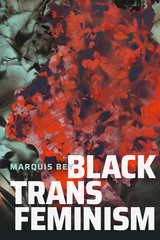 Black Trans Feminism
Marquis Bey
Duke University Press, 2022 In Black Trans Feminism Marquis Bey offers a meditation on blackness and gender nonnormativity in ways that recalibrate traditional understandings of each. Theorizing black trans feminism from the vantages of abolition and gender radicality, Bey articulates blackness as a mutiny against racializing categorizations; transness as a nonpredetermined, wayward, and deregulated movement that works toward gender’s destruction; and black feminism as an epistemological method to fracture hegemonic modes of racialized gender. In readings of the essays, interviews, and poems of Alexis Pauline Gumbs, jayy dodd, and Venus Di’Khadijah Selenite, Bey turns black trans feminism away from a politics of gendered embodiment and toward a conception of it as a politics grounded in fugitivity and the subversion of power. Together, blackness and transness actualize themselves as on the run from gender. In this way, Bey presents black trans feminism as a mode of enacting the wholesale dismantling of the world we have been given.
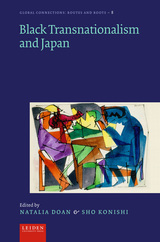 Black Transnationalism and Japan
Natalia Doan
Leiden University Press, 2024 Since before the American Civil War, African American and Japanese encounters produced relationships and discourses of knowledge that transcended Eurocentric conceptions of civilization and hierarchies of personhood. Black Transnationalism and Japan introduces the diverse activity and intellectual movements created, shaped, and led by Japanese and African American people. While some Pan-Asianisms and Pan-Africanisms urged a uniting of colonized spaces against the colonizer, and were often expressed in the form of decolonization movements, this volume introduces various transnational phenomena that transcended such dichotomies. Black American-Japanese transnational encounters often occurred on the non-state level from within the two new competing empires of America and Japan. Such transnational encounters reveal not only heretofore hidden historical actors, friendships, and solidarities, but also innovative cultural productions that challenged hierarchies of race, culture, and imperialism.
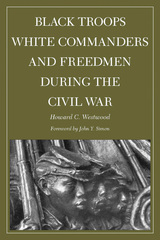 Black Troops, White Commanders and Freedmen during the Civil War
Howard C. Westwood
Southern Illinois University Press, 2008 Recounting the experiences of black soldiers in the Civil War In the ten probing essays collected in this volume, Howard C. Westwood recounts the often bitter experiences of black men who were admitted to military service and the wrenching problems associated with the shifting status of African Americans during the Civil War. Black Troops, White Commanders and Freedmen during the Civil War covers topics ranging from the roles played by Lincoln and Grant in beginning black soldiery to the sensitive issues that arose when black soldiers (and their white officers) were captured by the Confederates. The essays relate the exploits of black heroes such as Robert Smalls, who single-handedly captured a Confederate steamer, as well as the experiences of the ignoble Reverend Fountain Brown, who became the first person charged with violating the Emancipation Proclamation. Although many thousands were enlisted as soldiers, blacks were barred from becoming commissioned officers and for a long time they were paid far less than their white counterparts. These and other blatant forms of discrimination understandably provoked discontent among black troops which, in turn, sparked friction with their white commanders. Westwood's fascinating account of the artillery company from Rhode Island amply demonstrates how frustrations among black soldiers came to be seen as "mutiny" by some white officers.
Black Urban History at the Crossroads: Race and Place in the American City
Leslie M. Harris
University of Pittsburgh Press, 2024 Drawing on significant recent scholarship on African American urban life over three centuries, Black Urban History at the Crossroads bridges disparate chronological, regional, topical, and thematic perspectives on the Black urban experience beginning with the Atlantic slave trade. Across ten cutting-edge chapters, leading scholars explore the many ways that urban Black people across the United States built their own communities; crafted their own strategies for self-determination; and shaped the larger economy, culture, and politics of the urban environment and of their cities, regions, and nation. This volume not only highlights long-running changes over time and space, from preindustrial to emerging postindustrial cities, but also underscores the processes by which one era influences the emergence of the next moment in Black urban history.
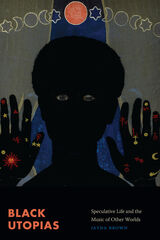 Black Utopias: Speculative Life and the Music of Other Worlds
Jayna Brown
Duke University Press, 2021 In Black Utopias Jayna Brown takes up the concept of utopia as a way of exploring alternative states of being, doing, and imagining in Black culture. Musical, literary, and mystic practices become utopian enclaves in which Black people engage in modes of creative worldmaking. Brown explores the lives and work of Black women mystics Sojourner Truth and Rebecca Cox Jackson, musicians Alice Coltrane and Sun Ra, and the work of speculative fiction writers Samuel Delany and Octavia Butler as they decenter and destabilize the human, radically refusing liberal humanist ideas of subjectivity and species. Brown demonstrates that engaging in utopian practices Black subjects imagine and manifest new genres of existence and forms of collectivity. For Brown, utopia consists of those moments in the here and now when those excluded from the category human jump into other onto-epistemological realms. Black people—untethered from the hope of rights, recognition, or redress—celebrate themselves as elements in a cosmic effluvium.
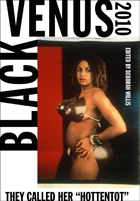 Black Venus 2010: They Called Her "Hottentot"
Edited by Deborah Willis
Temple University Press, 2010 As a young South African woman of about twenty, Saartjie Baartman, the so-called “Hottentot Venus,” was brought to London and placed on exhibit in 1810. Clad in the Victorian equivalent of a body stocking, and paraded through the streets and on stage in a cage she became a human spectacle in London and Paris. Baartman’s distinctive physique became the object of ridicule, curiosity, scientific inquiry, and desire until and after her premature death. The figure of Sarah Baartman was reduced to her sexual parts. Black Venus 2010 traces Baartman’s memory in our collective histories, as well as her symbolic history in the construction and identity of black women as artists, performers, and icons. The wide-ranging essays, poems, and images in Black Venus 2010 represent some of the most compelling responses to Baartman. Each one grapples with the enduring legacy of this young African woman who forever remains a touchstone for black women. Contributors include: Elizabeth Alexander, Holly Bass, Petrushka A Bazin, William Jelani Cobb, Lisa Gail Collins, Renée Cox, J. Yolande Daniels, Carole Boyce Davies, Leon de Wailly, Manthia Diawara, Diana Ferrus, Cheryl Finley, Nikky Finney, Kianga K. Ford, Terri Francis, Sander Gilman, Renée Green, Joy Gregory, Lyle Ashton Harris, Michael D. Harris, Linda Susan Jackson, Kellie Jones, Roshini Kempadoo, Simone Leigh, Zine Magubane, E. Ethelbert Miller, Robin Mitchell, Charmaine Nelson, Tracey Rose, Radcliffe Roye, Bernadette Searle, Lorna Simpson, Debra S. Singer, Penny Siopis, Hank Willis Thomas, Kara Walker, Michele Wallace, Carla Williams, Carrie Mae Weems, J. T. Zealy, and the editor.
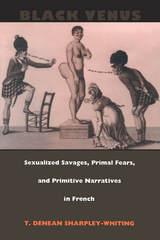 Black Venus: Sexualized Savages, Primal Fears, and Primitive Narratives in French
T. Denean Sharpley-Whiting
Duke University Press, 1999 Black Venus is a feminist study of the representations of black women in the literary, cultural, and scientific imagination of nineteenth-century France. Employing psychoanalysis, feminist film theory, and the critical race theory articulated in the works of Frantz Fanon and Toni Morrison, T. Denean Sharpley-Whiting argues that black women historically invoked both desire and primal fear in French men. By inspiring repulsion, attraction, and anxiety, they gave rise in the nineteenth-century French male imagination to the primitive narrative of Black Venus. The book opens with an exploration of scientific discourse on black females, using Sarah Bartmann, the so-called Hottentot Venus, and natural scientist Georges Cuvier as points of departure. To further show how the image of a savage was projected onto the bodies of black women, Sharpley-Whiting moves into popular culture with an analysis of an 1814 vaudeville caricature of Bartmann, then shifts onto the terrain of canonical French literature and colonial cinema, exploring the representation of black women by Baudelaire, Balzac, Zola, Maupassant, and Loti. After venturing into twentieth-century film with an analysis of Josephine Baker’s popular Princesse Tam Tam, the study concludes with a discussion of how black Francophone women writers and activists countered stereotypical representations of black female bodies during this period. A first-time translation of the vaudeville show The Hottentot Venus, or Hatred of Frenchwomen supplements this critique of the French male gaze of the nineteenth and early twentieth centuries. Both intellectually rigorous and culturally intriguing, this study will appeal to students and scholars in the fields of nineteenth- and twentieth-century French literature, feminist and gender studies, black studies, and cultural studies.
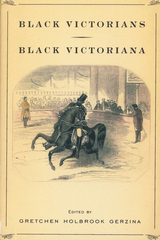 Black Victorians / Black Victoriana
Edited by Gretchen Holbrook Gerzina
Rutgers University Press, 2003 Black Victorians/Black Victoriana is a welcome attempt to correct the historical record. Although scholarship has given us a clear view of nineteenth-century imperialism, colonialism, and later immigration from the colonies, there has for far too long been a gap in our understanding of the lives of blacks in Victorian England. Without that understanding, it remains impossible to assess adequately the state of the black population in Britain today. Using a transatlantic lens, the contributors to this book restore black Victorians to the British national picture. They look not just at the ways blacks were represented in popular culture but also at their lives as they experienced them—as workers, travelers, lecturers, performers, and professionals. Dozens of period photographs bring these stories alive and literally give a face to the individual stories the book tells. The essays taken as a whole also highlight prevailing Victorian attitudes toward race by focusing on the ways in which empire building spawned a "subculture of blackness" consisting of caricature, exhibition, representation, and scientific racism absorbed by society at large. This misrepresentation made it difficult to be both black and British while at the same time it helped to construct British identity as a whole. Covering many topics that detail the life of blacks during this period, Black Victorians/Black Victoriana will be a landmark contribution to the emergent field of black history in England.
Black Victory: The Rise and Fall of the White Primary in Texas
Darlene Clark Hine & Essays by Darlene Clark Hine, Steven F. Lawson, & Merline Pitre
University of Missouri Press, 2003
In Black Victory, Darlene Clark Hine examines a pivotal breakthrough in the struggle for black liberation through the voting process. She details the steps and players in the 1944 U.S. Supreme Court decision in Smith v. Allwright, a precursor to the 1965 Voting Rights Act. She discusses the role that NAACP attorneys such as Thurgood Marshall played in helping black Texans regain the right denied them by white Texans in the Democratic Party: the right to vote and to have that vote count. Hine illuminates the mobilization of black Texans. She effectively demonstrates how each part of the African American community—from professionals to laborers—was essential to this struggle and the victory against disfranchisement.
Black Visions: The Roots of Contemporary African-American Political Ideologies
Michael C. Dawson
University of Chicago Press, 2001 This stunning book represents the most comprehensive analysis to date of the complex relationships between black political thought and black political identity and behavior. Ranging from Frederick Douglass to rap artist Ice Cube, Michael C. Dawson brilliantly illuminates the history and current role of black political thought in shaping political debate in America.
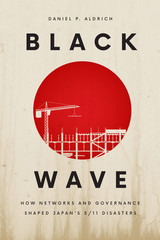 Black Wave: How Networks and Governance Shaped Japan’s 3/11 Disasters
Daniel P. Aldrich
University of Chicago Press, 2019 Despite the devastation caused by the magnitude 9.0 earthquake and 60-foot tsunami that struck Japan in 2011, some 96% of those living and working in the most disaster-stricken region of Tōhoku made it through. Smaller earthquakes and tsunamis have killed far more people in nearby China and India. What accounts for the exceptionally high survival rate? And why is it that some towns and cities in the Tōhoku region have built back more quickly than others?
Black Wave illuminates two critical factors that had a direct influence on why survival rates varied so much across the Tōhoku region following the 3/11 disasters and why the rebuilding process has also not moved in lockstep across the region. Individuals and communities with stronger networks and better governance, Daniel P. Aldrich shows, had higher survival rates and accelerated recoveries. Less-connected communities with fewer such ties faced harder recovery processes and lower survival rates. Beyond the individual and neighborhood levels of survival and recovery, the rebuilding process has varied greatly, as some towns and cities have sought to work independently on rebuilding plans, ignoring recommendations from the national government and moving quickly to institute their own visions, while others have followed the guidelines offered by Tokyo-based bureaucrats for economic development and rebuilding.
 Black, White, and Catholic: New Orleans Interracialism, 1947-1956
R. Bentley Anderson
Vanderbilt University Press, 2005 Most histories of the Civil Rights Movement start with all the players in place--among them organized groups of African Americans, White Citizens' Councils, nervous politicians, and religious leaders struggling to find the right course. Anderson, however, takes up the historical moment right before that, when small groups of black and white Catholics in the city of New Orleans began efforts to desegregate the archdiocese, and the Society of Jesus (Jesuits) began, in fits and starts, to integrate quietly the New Orleans Province. Anderson leads readers through the tumultuous years just after World War II when the Roman Catholic Church in the American South struggled to reconcile its commitment to social justice with the legal and social heritage of Jim Crow society. Though these early efforts at reform, by and large, failed, they did serve to galvanize Catholic supporters and opponents of the Civil Rights Movement and provided a model for more successful efforts at desegregation in the '60s. As a Jesuit himself, Anderson has access to archives that remain off-limits to other scholars. His deep knowledge of the history of the Catholic Church also allows him to draw connections between this historical period and the present. In the resistance to desegregation, Anderson finds expression of a distinctly American form of Catholicism, in which lay people expect Church authorities to ratify their ideas and beliefs in an almost democratic fashion. The conflict he describes is as much between popular and hierarchical models of the Church as between segregation and integration. This book has been made possible through a grant from the Louisiana Endowment for the Humanities, a state affiliate of the National Endowment for the Humanities.
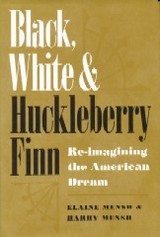 Black, White, and Huckleberry Finn: Re-imagining the American Dream
Elaine Mensh
University of Alabama Press, 2001 Takes a hard, systematic look at the depiction of blacks, whites, and race relations in Mark Twain's classic novel, raising questions about its canonical status in American literature Huckleberry Finn, one of the most widely taught novels in American literature, has long been the subject of ongoing debates over issues ranging from immorality to racism. Here, Elaine Mensh and Harry Mensh enter the debate with a careful and thoughtful examination of racial messages imbedded in the tale of Huck and Jim. Using as a gauge for analysis the historical record left by both slaves and slaveholders, the Menshes compare Twain's depiction with historical reality, attempting to determine where the book either undermines or upholds traditional racial attitudes. Surveying the opinions of fellow critics, they challenge the current consensus that Huckleberry Finn fosters rapport between blacks and whites, arguing that the book does not subvert ingrained beliefs about race, and demonstrating that the argument over black-white relations in the novel is also an argument over non-fictional racial relations and conflicting perceptions of racial harmony. Reading the novel in its historical context, the Menshes conclude that Twain, in the character of Huck, never questions the institution of slavery, and even supports it in both thought and action. In response to student and parent challenges to the inclusion of the book in literature classes, they suggest that it should remain in school libraries but not be required reading. Of importance to scholars of Mark Twain and American literature, African American cultural studies, or anyone interested in issues of literature and race, this book adds a strong voice to the long-ranging debate over Huckleberry Finn.
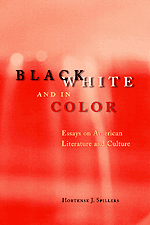 Black, White, and in Color: Essays on American Literature and Culture
Hortense J. Spillers
University of Chicago Press, 2003 A landmark, career-spanning collection by a critic whom Henry Louis Gates, Jr. lauded as "a major thinker"
Black, White, and in Color offers a long-awaited collection of major essays by Hortense Spillers, one of the most influential and inspiring black critics of the past twenty years. Spanning her work from the early 1980s, in which she pioneered a broadly poststructuralist approach to African American literature, and extending through her turn to cultural studies in the 1990s, these essays display her passionate commitment to reading as a fundamentally political act-one pivotal to rewriting the humanist project.
Spillers is best known for her race-centered revision of psychoanalytic theory and for her subtle account of the relationships between race and gender. She has also given literary criticism some of its most powerful readings of individual authors, represented here in seminal essays on Ralph Ellison, Gwendolyn Brooks, and William Faulkner. Ultimately, the essays collected in Black, White, and in Color all share Spillers's signature style: heady, eclectic, and astonishingly productive of new ideas. Anyone interested in African American culture and literature will want to read them.
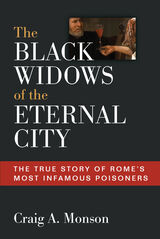 The Black Widows of the Eternal City: The True Story of Rome's Most Infamous Poisoners
Craig A. Monson
University of Michigan Press, 2020 The Black Widows of the Eternal City offers, for the first time, a book-length study of an infamous cause célèbre in seventeenth-century Rome, how it resonated then and has continued to resonate: the 1659 investigation and prosecution of Gironima Spana and dozens of Roman widows, who shared a particularly effective poison to murder their husbands. This notorious case has been frequently discussed over 350 years, but the earliest writers concentrated more on fortifying their reading constituency’s shared attitudes than accurately narrating facts. Subsequent authors remained largely content to follow their predecessors or keen to improve upon them. Most recent writers and bloggers were unaware that their earlier sources were generally unconcerned with a correct portrayal of real events. In the present study, Craig A. Monson takes advantage of a recent discovery—the 1,450-page notary’s transcript of the 1659 investigation. It is supplemented here by many ancillary archival sources, unknown to all previous writers. Since the story of Gironima Spana and the would-be widows is partially about what people believed to be true, however, this investigation also juxtaposes some of the “alternative facts” from earlier, sensational accounts with what the notary’s transcript and other, more reliable archival documents reveal. Written in a style that avoids arcane idioms and specialist jargon, the book can potentially speak to students and general readers interested in seventeenth-century social history and gender issues. It rewrites the life story of Gironima Spana (largely unknown until now), who has dominated all earlier accounts, usually in caricatures that reiterate the tropes of witchcraft. It also concentrates on the dozen other widows whose stories could be the most recovered from archival sources and whom Spana had totally eclipsed in earlier accounts. Most were women “of a very ordinary sort” (prostitutes; beggars; wives of butchers, barbers, dyers, lineners, innkeepers), the kinds of women commonly lost to history. The book seeks to explain why some women were hanged (only six, in fact, most of whom may not have directly poisoned anyone), while dozens of others who did poison their husbands escaped the gallows and, in some cases, were not even interrogated. It also reveals what happened to these other alleged perpetrators, whose fates have remained unknown until now. Other purported culprits, about whom less complete pictures emerge, are briefly discussed in an appendix. The study incorporates illustrations of archival manuscripts to demonstrate the challenges of deciphering them and illustrates “scenes of the crime” and other important locations, identified on seventeenth-century, bird’s eye-perspective views of Rome and in modern photographs. It also includes GPS coordinates for any who might wish to revisit the sites.
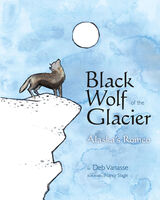 Black Wolf of the Glacier: Alaska's Romeo
Deb Vanasse
University of Alaska Press, 2013 In 2003, Alaskans fell for a lolloping, dog-friendly wolf they named Romeo. Left without a pack, this lone wolf found a new family among Juneau’s domestic dogs and their owners, who became enamored with his striking looks and friendly demeanor. For years he remained a constant companion to residents of Juneau and their dogs, becoming a familiar and sociable presence in their lives. While his unusual tale had a tragic end, his legacy of respect and trust lives on.
Black Wolf of the Glacier tells the story of this beloved legend through the eyes of Shawna, whose dog becomes best friends with Romeo. While initially afraid, Shawna ultimately learns to love the benevolent wolf. When Romeo goes missing, Shawna begins a determined search to find him, bringing readers along for the adventure.
Deb Vanasse’s heartfelt prose and Nancy Slagle’s charming illustrations will delight Romeo’s many fans and capture the hearts of readers new to the story. Black Wolf of the Glacier beautifully captures the soul of Romeo’s story and celebrates the bonds we still form with our wild world.
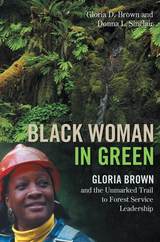 Black Woman in Green: Gloria Brown and the Unmarked Trail to Forest Service Leadership
Gloria D. Brown
Oregon State University Press, 2020 From an unlikely beginning as an agency transcriptionist in her hometown of Washington, DC, Gloria Brown became the first African American woman to attain the rank of forest supervisor at the US Forest Service. As a young widow with three children, she transferred to Missoula, Montana, and embarked on a remarkable journey, ultimately leading the Siuslaw National Forest in Oregon and later the Los Padres in California. The story of Brown’s career unfolds against the backdrop of a changing government agency and a changing society.
As scholars awaken to the racist history of public land management and the ways that people of color have been excluded from contemporary notions of nature and wilderness, Brown’s story provides valuable insight into the roles that African Americans have carved out in the outdoors generally and in the field of environmental policy and public lands management specifically. Drawing on her powerful communication and listening skills, her sense of humor, and her willingness to believe in the basic goodness of humanity, Brown conducted civil rights trainings and shattered glass ceilings, all while raising her children alone.
Written in an engaging and accessible style with historian Donna Sinclair, Brown’s story provides a fascinating case study for public administration and contributes to a deeper understanding of the environmental and civil rights movements of the twentieth century, particularly the role that racial discrimination has played in national forests, parks, and other wilderness spaces. It also highlights issues of representation in the federal government, women’s history, the history of the American West, and literature associated with African American experiences in predominately white societies.
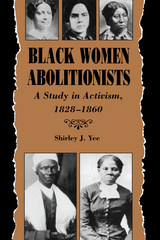 Black Women Abolitionists: A Study in Activism, 1828–1860
Shirley J. Yee
University of Tennessee Press, 1992 By virtue of being both black and female in antebellum America, black women abolitionists confronted a particular set of tensions. Whether they supported the movement directly or indirectly, cooperated with whites or primarily with other blacks, worked in groups or independently, were well off financially or struggled to make ends meet, their lives reflected the complex dynamics of race, sex, and class. Against the background of slavery, constructing a life in "freedom" meant adopting many of the values of free white society, symbolized in part by male dominance and female subordination. In championing both their race and their sex, female black abolitionists found themselves caught between the sexism of the antislavery movement and the racism of the (white) women's movement. Throughout their writing, speeches, petitions, and participation in antislavery, and self-help organizations, these women established a pattern of black female activism--centered on community-building, political organizing, and forging a network of friendships with other activists--that served as a model for later generations of black women. Drawing on a wide array of previously untapped primary sources, Shirley Yee examines the activism of black women in the Northeast, the Midwest, and to some extent, California and Canada. The activists' experiences render heartbreakingly clear the pervasiveness of middle-class white values in antebellum America and the contradictions and ironies inherent in prevailing conceptions of "freedom."
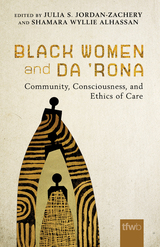 Black Women and da ’Rona: Community, Consciousness, and Ethics of Care
Edited by Julia S. Jordan-Zachery and Shamara Wyllie Alhassan
University of Arizona Press, 2023 Rooted in the ways Black women understand their lives, this collection archives practices of healing, mothering, and advocacy during the COVID-19 pandemic.
Recognizing that Black women have been living in pandemics as far back as colonialism and enslavement, this volume acknowledges that records of the past—from the 1918 flu pandemic to the onset of the HIV/AIDS epidemic—often erase the existence and experiences of Black women as a whole. Writing against this archival erasure, this collection consciously recenters the real-time experiences and perspectives of care, policy concerns, grief, and joy of Black women throughout the COVID-19 pandemic.
Nineteen contributors from interdisciplinary fields and diverse backgrounds explore Black feminine community, consciousness, ethics of care, spirituality, and social critique. They situate Black women’s multidimensional experiences with COVID-19 and other violences that affect their lives. The stories they tell are connected and interwoven, bound together by anti-Black gendered COVID necropolitics and commitments to creating new spaces for breathing, healing, and wellness.
Ultimately, this time-warping analysis shows how Black women imagine a more just society, rapidly adapt to changing experiences, and innovate ethics of care even in the midst of physical distancing, which can be instructive for thinking of new ways of living both during and beyond the era of COVID-19.
Contributors
Shamara Wyllie Alhassan
Sharnnia Artis
Keisha L. Bentley-Edwards
Candace S. Brown
Jenny Douglas
Kaja Dunn
Onisha Etkins
Rhonda M. Gonzales
Endia Hayes
Ashley E. Hollingshead
Kendra Jason
Julia S. Jordan-Zachery
Stacie LeSure
Janaka B. Lewis
Michelle Meggs
Nitya Mehrotra
Sherine Andreine Powerful
Marjorie Shavers
Breauna Marie Spencer
Tehia Starker Glass
Amber Walker
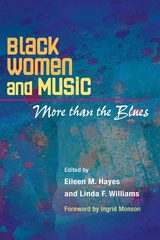 Black Women and Music: More Than the Blues
Edited by Eileen M. Hayes and Linda F. Williams
University of Illinois Press, 2006 This collection is the first interdisciplinary volume to examine black women’s negotiation of race and gender in African American music. Contributors address black women’s activity in musical arenas that pre- and postdate the emergence of the vaudeville blues singers of the 1920s. Throughout, the authors illustrate black women’s advocacy of themselves as blacks and as women in music. Feminist? Black feminist? The editors take care to stress that each term warrants interrogation: “Black women can and have forged, often, but not always––and not everywhere the same across time––identities that are supple enough to accommodate a sense of female empowerment through ‘musicking’ in tandem with their sensitivities to black racial allegiances.”
Individual essays concern the experiences of black women in classical music and in contemporary blues, the history of black female gospel-inflected voices in the Broadway musical, and "hip-hop feminism" and its complications. Focusing on under-examined contexts, authors introduce readers to the work of a prominent gospel announcer, women’s music festivals (predominantly lesbian), and to women’s involvement in an early avant-garde black music collective. In contradistinction to a compilation of biographies, this volume critically illuminates themes of black authenticity, sexual politics, access, racial uplift through music, and the challenges of writing (black) feminist biography. Black Women and Music is a strong reminder that black women have been and are both social actors and artists contributing to African American thought.
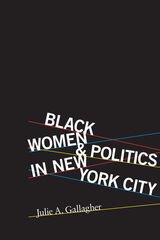 Black Women and Politics in New York City
Julie A. Gallagher
University of Illinois Press, 2014 An essential contribution to twentieth-century political history, Black Women and Politics in New York City documents African American women in New York City fighting for justice, civil rights, and equality in the turbulent world of formal politics from the suffrage and women's rights movements to the feminist era of the 1970s. Historian and human rights activist Julie A. Gallagher deftly examines how race, gender, and the structure of the state itself shape outcomes, and exposes the layers of power and discrimination at work in American society. She combines her analysis with a look at the career of Shirley Chisholm, the first black woman elected to Congress and the first to run for president on a national party ticket. In so doing, she rewrites twentieth-century women's history and the dominant narrative arcs of feminist history that hitherto ignored African American women and their accomplishments.
Black Women Directors
Christina N. Baker
Rutgers University Press, 2022 Black women have long recognized the power of film for storytelling. For far too long, however, the cultural and historical narratives about film have not accounted for the contributions of Black women directors. This book remedies this omission by highlighting the trajectory of the culturally significant work of Black women directors in the United States, from the under-examined pioneers of the silent era, to the documentarians who sought to highlight the voices and struggles of Black women, and the contemporary Black women directors in Hollywood. Applying a Black feminist perspective, this book examines the ways that Black women filmmakers have made a way for themselves and their work by resisting the dominant cultural expectations for Black women and for the medium of film, as a whole.
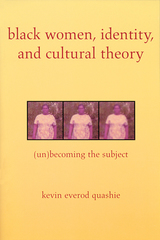 Black Women, Identity, and Cultural Theory: (Un)Becoming the Subject
Kevin Everod Quashie
Rutgers University Press, 2004 In Black Women, Identity, and Cultural Theory, Kevin Everod Quashie explores the metaphor of the “girlfriend” as a new way of understanding three central concepts of cultural studies: self, memory, and language. He considers how the work of writers such as Toni Morrison, Ama Ata Aidoo, Dionne Brand, photographer Lorna Simpson, and many others, inform debates over the concept of identity. Quashie argues that these authors and artists replace the notion of a stable, singular identity with the concept of the self developing in a process both communal and perpetually fluid, a relationship that functions in much the same way that an adult woman negotiates with her girlfriend(s). He suggests that memory itself is corporeal, a literal body that is crucial to the process of becoming. Quashie also explores the problem language poses for the black woman artist and her commitment to a mastery that neither colonizes nor excludes.
The analysis throughout interacts with schools of thought such as psychoanalysis, postmodernism, and post-colonialism, but ultimately moves beyond these to propose a new cultural aesthetic, one that ultimately aims to center black women and their philosophies.
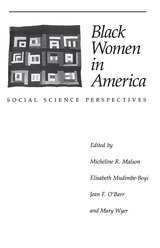 Black Women in America: Social Science Perspectives
Edited by Micheline R. Malson, Elisabeth Mudimbe-Boyi, Jean F. O'Barr, and Mary
University of Chicago Press, 1990 Emphasizing work that "frees our imaginations and allows us to conceive new theories, new language, and new questions," the collection seeks to establish the nature of Afro-American women's experiences while providing a theoretical framework for Black feminist thought. In essays that explore the intersection of work and family, socio-historical literature and critiques, and the relation of Black women to community life, contributors to this volume document Afro-American social and personal struggles and strategies. Individual essays examine family roles, job satisfaction, economic status, and women's traditions in the church.
An eloquent introduction to the development of Black feminist thought, Black Women in America encourages the discussion of broader issues, such as the treatment of cultural diversity in American higher education.
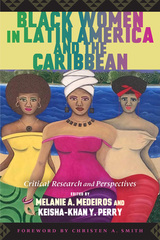 Black Women in Latin America and the Caribbean: Critical Research and Perspectives
Melanie A. Medeiros
Rutgers University Press, 2023 Black Women in Latin America and the Caribbean: Critical Research and Perspectives employs an intersectional and interdisciplinary approach to examine Black cisgender women’s social, cultural, economic, and political experiences in Latin America and the Caribbean. It presents critical empirical research emphasizing Black women’s innovative, theoretical, and methodological approaches to activism and class-based gendered racism and Black politics. While there are a few single-authored books focused on Black women in Latin American and Caribbean, the vast majority of the scholarship on Black women in Latin America and the Caribbean has been published as theses, dissertations, articles, and book chapters. This volume situates these social and political analyses as interrelated and dialogic and contributes a transnational perspective to contemporary conversations surrounding the continued relevance of Black women as a category of social science inquiry. Many of the contributing authors are from Latin American and Caribbean countries, reflecting a commitment to representing the valuable observations and lived experiences of scholars from this region. When read together, the chapters offer a hemispheric framework for understanding the lasting legacies of colonialism, transatlantic slavery, plantation life, and persistent socio-economic and cultural violence.
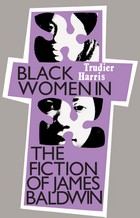 Black Women in the Fiction of James Baldwin
Trudier Harris
University of Tennessee Press, 1987 In James Baldwin's fiction, according to Trudier Harris, Black women are conceptually limited figures until their author ceases to measure them by standards of the community fundamentalist church. Harris analyzes works written over a thirty-year period to show how Baldwin's development of female character progresses through time.
Black women in the early fiction, responding to their elders as well as to religious influences, see their lives in terms of duty as wives, mothers, sisters, and lovers. Failure in any of these roles leads to feelings of guilt and the expectation of damnation. In his later works, Baldwin adopts a new point of view, acknowledging complex extenuating circumstances in lieu of pronouncing moral judgement. Female characters in works written at this stage eventually come to believe that the church affords no comfort.
Baldwin subsequently makes villains of some female churchgoers, and caring women who do not attend church become his most attractive characters. Still later in Baldwin's career, a woman who frees herself of guilt by moving completely beyond the church attains greater contentment than almost all of her counterparts in the earlier works.
 Black Women Legacies: Public History Sites Seen and Unseen
Alexandria Russell
University of Illinois Press, 2024 From Black clubwomen to members of preservation organizations, African American women have made commemoration a central part of Black life and culture. Alexandria Russell illuminates the process of memorialization while placing African American women at the center of memorials they brought into being and others constructed in their honor. Their often undocumented and unheralded work reveals the importance of the memorializers and public memory crafters in establishing a culture of recognition. Forced to strategize with limited resources, the women operated with a resourcefulness and savvy that had to meet challenges raised by racism, gender and class discrimination, and specific regional difficulties. Yet their efforts from the 1890s to the 2020s shaped and honed practices that became indispensable to the everyday life and culture of Black Americans. Intersectional and original, Black Women Legacies explores the memorialization of African American women and its distinctive impact on physical and cultural landscapes throughout the United States.
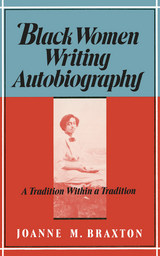 Black Women Writing Autobiography: A Tradition Within a Tradition
Joanne Braxton
Temple University Press, 1990 "In this illuminating study Joanne Braxton shows the continuity and tradition in the writing of Afra-American women. An important work for teachers and students of Literature, History, and Women's Studies."
--Gerda Lerner
"As black American women, we are born into a mystic sisterhood, and we live our lives within a magic circle, a realm of shared language, reference, and allusion within the veil of our blackness and our femaleness. We have been as invisible to the dominant culture as rain; we have been knowers, but we have not been known."
Joanne Braxton argues for a redefinition of the genre of black American autobiography to include the images of women as well as their memoirs, reminiscences, diaries, and journals--as a corrective to both black and feminist literary criticism. Beginning with slave narratives and concluding with modern autobiography, she deals with individual works as representing stages in a continuum and situates these works in the context of other writings by both black and white writers.
Braxton demonstrates that the criteria used to define the slave narrative genre are inadequate for analyzing Harriet "Linda Brent" Jacobs's pseudonymously published Incidents in the Life of a Slave Girl: Written by Herself (1861). She examines "sass" as a mode of women's discourse and a weapon of self-defense, and she introduces the "outraged mother" as a parallel to the articulate hero archetype. Not even emancipation authorized black women to define themselves or address an audience. Late-nineteenth-century accounts in the form of confessional spiritual autobiographies, travelogue/adventure stories, and slave memoirs enabled such women as Jarena Lee, Rebecca Cox Jackson, Elizabeth Keckley, Susie King Taylor, as well as Harriet Tubman and Sojourner Truth to tell their own extraordinary stories and to shed light on the thousands of lives obscured by illiteracy and sexual and racial oppression. In her diaries, Charlotte Forten Grimké, the gifted poet, epitomizes the problems faced by a well-educated, extremely articulate black woman attempting to find a public voice in America.
Moving into the twentieth century, Braxton analyzes the memoir of Ida B. Wells, journalist and anti-lynching activist, and the work of Zora Neale Hurston and Era Bell Thompson. They represent the first generation of black female autobiographers who did not continually come into contact with former slaves and who transcended the essential struggle for survival that occupied earlier writings. For the contemporary black woman autobiographer, the quest for personal fulfillment is the central theme. Braxton concludes with Maya Angelou's I Know Why the Caged Bird Sings (1996), which represents the black woman of the 1960s who has found the place to recreate the self in her own image--the place all the others had been searching for.
"Braxton's book is scrupulously researched. She has been creative in finding resources and courageous in analyzing and interpreting her finds. This is the word of a diligent mind. The material is mountainous, yet the book sings. Braxton is a poet. Thank goodness."
--Maya Angelou
"Joanne Braxton's essays on black women's autobiographies delineate and illuminate the personal and historical dimension of an important literary tradition. Emphasizing the distinct character of Afra-American women's experience and relations with each other, she ground their writing of their lives in the struggles and triumphs of the lives they actually led."
--Elizabeth Fox-Genovese
"In this compelling and lucid study examining the content, context, and continuum of black women autobiographers, Braxton clears the place for it in the curriculum: at the center of black and feminist studies."
--Paula Giddings
"This is the fullest and most sympathetic study of black American autobiographers I know. By paying close attention to private and public history, to social networks and literary kinships, to narrative structures and patterns of imagery, Braxton leads her readers to see the black woman 'at the center of her own [written] experiences.' At once scholarly and passionate, Braxton's critique will immediately secure her a place among the leading analysts of black American autobiography."
--Albert E. Stone
"A highly readable and original contribution to the important fields of Afro-American studies, feminist criticism, and autobiographical narrative."
--Elaine Showalter
"Rich in empathy and insight, Joanne M. Braxton's trailblazing study attends to both the textual and historical dimensions of a powerful literary inheritance. She brings to bear a keen sense of the departures and continuities of which any tradition consists; and an appreciation of the distinctive Afro-American dynamic between literary convention and a vernacular substrate. Braxton doesn't just read--she listens."
--Henry Louis Gates, Jr.
"Joanne Braxton makes a unique contribution to the scholarship of American autobiography. Her focus on the outraged mother as a figure of rebellion is a significant challenge to our conventional understanding of autobiographical acts."
--Hazel Carby
"This is the most inclusive and thoughtful literary history of black American women's autobiography in existence…It is not just a collection of essays; it is well knit together and displays multiple traditions as they evolved and are in the process of evolving still."
--William L. Andrews
"This book marks another milestone in the critical appraisal of American autobiographical writings. In tracing the evolution of a tradition of black women in autobiography in America, Braxton takes us on the first journey of this kind: the black American woman's search for a dignified, self-defining identity through the rejection of traditional female roles. This book sets the tone for future studies of black women's autobiographies."
--Nellie McKay
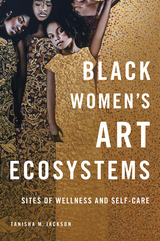 Black Women's Art Ecosystems: Sites of Wellness and Self-Care
Tanisha M. Jackson
University of Illinois Press, 2025 It is not an uncommon burden but rather a choice that Black women artists embrace creating art as a socio-political strategy to save themselves and their communities. Tanisha M. Jackson analyzes visual and personal narratives, historical archives, and artmaking practices to reveal how Black women artists facilitate wellness through creative expression and cultural knowledge. Delving into historical and contemporary practices, Jackson looks at Black women who use their artwork as acts of resistance, self-expression, and holistic wellness. Jackson’s multidisciplinary approach blends art history, Black studies, and personal narratives to examine the ways that the art ecosystems created by these women foster resilience and empowerment. Their dramatic stories underscore the transformative power of art in cultivating activism and mental, emotional, and spiritual well-being but also provide a framework for understanding how art can be a vital component of self-care and communal wellness. A meticulous portrait and inspiring roadmap, Black Women’s Art Ecosystems celebrates Black women’s artistic achievements while revealing how their work creates communities of restoration and mental health.
 Black Women’s Health in the Age of Hip Hop and HIV/AIDS: A Narrative Remix
Nghana tamu Lewis
Ohio State University Press, 2025 In Black Women’s Health in the Age of Hip Hop and HIV/AIDS, Nghana tamu Lewis chronicles the work of five black women creators to demonstrate how hip hop feminism operates as a vital tool for interpreting and building knowledge about the lived experiences of black women and girls. Between 1996 and 2006, novelists Sapphire and Sister Souljah, television producer Mara Brock Akil, and playwrights Nikkole Salter and Danai Gurira addressed the neglect of black women’s health in mainstream biomedical and public health discourses. At a time when responses to the HIV/AIDS epidemic largely focused on gay white men, Lewis argues, these creators deployed the strategies of hip hop feminism to frame and untangle issues of self-care, risk, and the ways that caregiving roles place black women and girls at disproportionate risk of adverse health outcomes. Building on previous intersectionality and social justice advocacy scholarship, Lewis argues that Sapphire, Souljah, Brock Akil, and Salter and Gurira both documented the effects of the epidemic on black women and girls and equipped the masses with solutions-oriented responses to the crisis, thus intervening in ways that mainstream biomedical and public health research has yet to do.
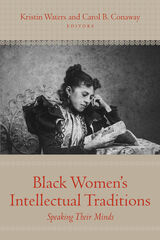 Black Women’s Intellectual Traditions: Speaking Their Minds
Edited by Kristin B. Waters and Carol B. Conaway
University Press of New England, 2007 An astonishing wealth of literary and intellectual work by nineteenth-century black women is being rediscovered and restored to print in scholarly and popular editions. In Kristin Waters’s and Carol B. Conaway’s landmark edited collection, Black Women’s Intellectual Traditions: Speaking Their Minds, sophisticated commentary on this rich body of work chronicles a powerful and interwoven legacy of activism based in social and political theories that helped shape the history of North America. The book meticulously reclaims this American legacy, providing a collection of critical analyses of the primary sources and their vital traditions. Written by leading scholars, Black Women’s Intellectual Traditions is particularly powerful in its exploration of the pioneering thought and action of the nineteenth-century black woman lecturer and essayist Maria W. Stewart, abolitionist Sojourner Truth, novelist and poet Frances Ellen Watkins Harper, educator Anna Julia Cooper, newspaper editor Mary Ann Shadd Cary, and activist Ida B. Wells. The distinguished contributors are Hazel V. Carby, Patricia Hill Collins, Karen Baker-Fletcher, Kristin Waters, R. Dianne Bartlow, Carol B. Conaway, Olga Idriss Davis, Vanessa Holford Diana, Evelyn Simien, Janice W. Fernheimer, Michelle N. Garfield, Joy James, Valerie Palmer-Mehta, Carla L. Peterson, Marilyn Richardson, Evelyn M. Simien, Ebony A. Utley, Mary Helen Washington, Melina Abdullah, and Lena Ampadu. The volume will interest scholars and readers of African-American and women’s studies, history, rhetoric, literature, poetry, sociology, political science, and philosophy.
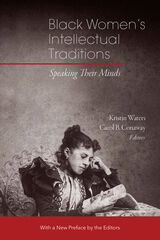 Black Women’s Intellectual Traditions: Speaking Their Minds
Edited by Kristin Waters and Carol B. Conaway
Brandeis University Press, 2022 A new edition of a landmark work on Black women’s intellectual traditions.
An astonishing wealth of literary and intellectual work by nineteenth-century Black women is being rediscovered and restored to print in scholarly and popular editions. In Kristin Waters’s and Carol B. Conaway’s landmark edited collection, Black Women’s Intellectual Traditions: Speaking Their Minds, sophisticated commentary on this rich body of work chronicles a powerful and interwoven legacy of activism based in social and political theories that helped shape the history of North America. The book meticulously reclaims this American legacy, providing a collection of critical analyses of the primary sources and their vital traditions. Written by leading scholars, Black Women’s Intellectual Traditions is particularly powerful in its exploration of the pioneering thought and action of the nineteenth-century Black woman lecturer and essayist Maria W. Stewart, abolitionist Sojourner Truth, novelist and poet Frances Ellen Watkins Harper, educator Anna Julia Cooper, newspaper editor Mary Ann Shadd Cary, and activist Ida B. Wells. The distinguished contributors are Hazel V. Carby, Patricia Hill Collins, Karen Baker-Fletcher, Kristin Waters, R. Dianne Bartlow, Carol B. Conaway, Olga Idriss Davis, Vanessa Holford Diana, Evelyn Simien, Janice W. Fernheimer, Michelle N. Garfield, Joy James, Valerie Palmer-Mehta, Carla L. Peterson, Marilyn Richardson, Evelyn M. Simien, Ebony A. Utley, Mary Helen Washington, Melina Abdullah, and Lena Ampadu. The volume will interest scholars and readers of African-American and women’s studies, history, rhetoric, literature, poetry, sociology, political science, and philosophy. This updated edition features a new preface by the editors in the light of new developments in current scholarship.
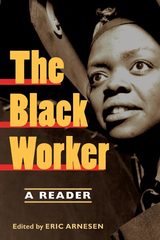 The Black Worker: Race, Labor, and Civil Rights Since Emancipation
Edited by Eric Arnesen
University of Illinois Press, 2006 Long before the modern civil rights movement of the 1950s and 1960s made a frontal assault on the reigning segregationist order, African American workers had to struggle against both their employers and fellow white workers. Because their efforts to secure their workplace rights pitted them against the broader structures of racial oppression, their activism constituted nothing less than a form of civil rights struggle. Uniting the latest scholarship on race, labor, and civil rights, The Black Worker aims to establish the richness of the African American working-class experience, and the indisputable role of black workers in shaping the politics and history of labor and race in the United States. To capture the complexity of African Americans’ experiences in the workplace, this reader examines workers engaged in a wide array of jobs, including sharecropping, coal mining, domestic service, longshoring, automobile manufacturing, tobacco processing, railroading, prostitution, lumbering, and municipal employment. The essays’ subjects include black migration, strikebreaking, black conservatism, gender, and the multiple forms of employment discrimination in the South and North. Other contributions deal explicitly with state policy and black workers during the transition from slavery to freedom, World Wars I and II, and the 1960s. The variety of challenges made by these workers, both quiet and overt, served as clear reminders to the supporters of white supremacy that, despite their best efforts through violence, fraud, and the law, as long as they insisted on racial inequality, the “race question” would never be fully resolved. Contributors: Eric Arnesen, Beth Tompkins Bates, Cynthia M. Blair, Tera W. Hunter, William Powell Jones, Brian Kelly, Robert Korstad, Nelson Lichtenstein, Joseph A. McCartin, Steven A. Reich, Leslie A. Schwalm, Nan Elizabeth Woodruff
Black Workers' Struggle for Equality in Birmingham
Edited by Horace Huntley and David Montgomery
University of Illinois Press, 2004 Horace Huntley and David Montgomery curate a collection of annotated oral interviews of black workers who served on the front lines of the Civil Rights Movement in Birmingham, Alabama. As the interviewees recount their struggles against discrimination, they show how collective action--whether through unions, the Movement, or networks of workplace activists--sought to gain access to better jobs, municipal services, housing, and less restrictive voter registration. Powerful and honest, Black Workers' Struggle for Equality in Birmingham draws on work by the Birmingham Civil Rights Institute to offer readers vivid eyewitness accounts of American history in the making.
 Black Writing, Culture, and the State in Latin America
Jerome C. Branche
Vanderbilt University Press, 2015 Imagine the tension that existed between the emerging nations and governments throughout the Latin American world and the cultural life of former enslaved Africans and their descendants. A world of cultural production, in the form of literature, poetry, art, music, and eventually film, would often simultaneously contravene or cooperate with the newly established order of Latin American nations negotiating independence and a new political and cultural balance. In Black Writing, Culture, and the State in Latin America, Jerome Branche presents the reader with the complex landscape of art and literature among Afro-Hispanic and Latin artists. Branche and his contributors describe individuals such as Juan Francisco Manzano, who wrote an autobiography on the slave experience in Cuba during the nineteenth century. The reader finds a thriving Afro-Hispanic theatrical presence throughout Latin America and even across the Atlantic. The role of black women in poetry and literature comes to the forefront in the Caribbean, presenting a powerful reminder of the diversity that defines the region.
All too often, the disciplines of film studies, literary criticism, and art history ignore the opportunity to collaborate in a dialogue. Branche and his contributors present a unified approach, however, suggesting that cultural production should not be viewed narrowly, especially when studying the achievements of the Afro-Latin world.
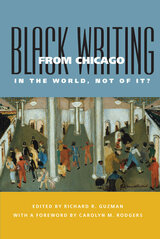 Black Writing from Chicago: In the World, Not of It?
Edited by Richard R. Guzman. Foreword by Carolyn M. Rodgers
Southern Illinois University Press, 2006 Black Writing from Chicago: In the World, Not of It? takes readers on a cultural trip through Chicago’s literary history. Editor Richard R. Guzman compiles the first comprehensive collection of the works of Chicago’s black writers from 1861 to the present day. The anthology, which includes works from newspaper writing, poetry, fiction, drama, essays, and historical and social commentary, seeks not only to represent a broad range of writings but also to focus tightly on such themes as hope and despair, racism and equality, spirituality and religion. More than sixty writers, from the anonymous “J. W. M. (Colored)” to Ken Green, unfold a story that reflects the literary periods in black American history. Each author’s selection is preceded by a biographical and a bibliographical introduction. Readers interested in Chicago, race relations, and literature, as well as scholars of history, sociology, urban studies, and cultural studies, will find the collection invaluable.
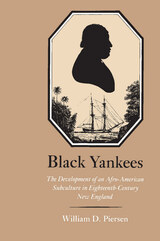 Black Yankees: The Development of an Afro-American Subculture in Eighteenth-Century New England
William D. Piersen
University of Massachusetts Press, 1988 This book examines the development of an Afro-American subculture in eighteenth-century New England. Piersen concerns himself not with the machinery of slave control or the political and social disabilities of bondage, but with the processes of cultural change and creation from the black bondsman's point of view. What was it like to be an African immigrant in colonial New England? What attitudes and assumptions underlay the Afro-American response to Yankee culture? What does the development within the confines of a predominantly white and ethnocentric New England of an Afro-American folk culture in religion, public rituals, folk arts and crafts, social mores, and daily behavior say about the creation of American culture?
On the face of it, the master class called the tunes and slaves danced the beat. Blacks who were taken into New England's bondage were clearly engulfed in a pervasive, narrow-minded Euro-American society that had no interest in fostering Afro-American autonomy. The New England experience was often cruel, and the numbers alone suggest it was among the most unequal of black/white cultural contacts in the New World. Nonetheless, despite the strictures of bondage, the black Yankees of eighteenth-century New England created a sustaining folk culture of their own.
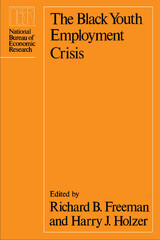 The Black Youth Employment Crisis
Edited by Richard B. Freeman and Harry J. Holzer
University of Chicago Press, 1986 In recent years, the earnings of young blacks have risen substantially relative to those of young whites, but their rates of joblessness have also risen to crisis levels. The papers in this volume, drawing on the results of a groundbreaking survey conducted by the National Bureau of Economic Research, analyze the history, causes, and features of this crisis. The findings they report and conclusions they reach revise accepted explanations of black youth unemployment.
The contributors identify primary determinants on both the demand and supply sides of the market and provide new information on important aspects of the problem, such as drug use, crime, economic incentives, and attitudes among the unemployed. Their studies reveal that, contrary to popular assumptions, no single factor is the predominant cause of black youth employment problems. They show, among other significant factors, that where female employment is high, black youth employment is low; that even in areas where there are many jobs, black youths get relatively few of them; that the perceived risks and rewards of crime affect decisions to work or to engage in illegal activity; and that churchgoing and aspirations affect the success of black youths in finding employment.
Altogether, these papers illuminate a broad range of economic and social factors which must be understood by policymakers before the black youth employment crisis can be successfully addressed.
The Blackademic Life: Academic Fiction, Higher Education, and the Black Intellectual
Lavelle Porter
Northwestern University Press, 2019 The Blackademic Life critically examines academic fiction produced by black writers. Lavelle Porter evaluates the depiction of academic and campus life in literature as a space for black writers to produce counternarratives that celebrate black intelligence and argue for the importance of higher education, particularly in the humanistic tradition. Beginning with an examination of W. E. B. Du Bois’s creative writing as the source of the first black academic novels, Porter looks at the fictional representations of black intellectual life and the expectations that are placed on faculty and students to be racial representatives and spokespersons, whether or not they ever intended to be. The final chapter examines blackademics on stage and screen, including in the 2014 film Dear White People and the groundbreaking television series A Different World.
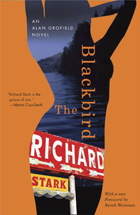 The Blackbird: An Alan Grofield Novel
Richard Stark
University of Chicago Press, 2012 A classic, fast-paced crime thriller that opens with a Parker heist going sour, then turns into an international adventure starring Parker's associate Alan Grofield
Donald E. Westlake is one of the greats of crime fiction. Under the pseudonym Richard Stark, he wrote twenty-four fast-paced, hardboiled novels featuring Parker, a shrewd career criminal with a talent for heists. Using the same nom de plume, Westlake also completed a separate series in the Parker universe, starring Alan Grofield, an occasional colleague of Parker. While he shares events and characters with several Parker novels, Grofield is less calculating and more hot-blooded than Parker; think fewer guns, more dames.
Not that there isn’t violence and adventure aplenty. The third Grofield novel, The Blackbird shares its first chapter with Slayground: after a traumatic car crash, Parker eludes the police, but Grofield gets caught. Lying injured in the hospital, Grofield is visited by G-Men who offer him an alternative to jail, and he finds himself forced into a deadly situation involving international criminals and a political conspiracy.
With a new foreword by Sarah Weinman that situates the Grofield series within Westlake’s work as a whole, this novel is an exciting addition to any crime fiction fan’s library.
Blackbird's Song: Andrew J. Blackbird and the Odawa People
Theodore J. Karamanski
Michigan State University Press, 2012 For much of U.S. history, the story of native people has been written by historians and anthropologists relying on the often biased accounts of European-American observers. Though we have become well acquainted with war chiefs like Pontiac and Crazy Horse, it has been at the expense of better knowing civic-minded intellectuals like Andrew J. Blackbird, who sought in 1887 to give a voice to his people through his landmark book History of the Ottawa and Chippewa People. Blackbird chronicled the numerous ways in which these Great Lakes people fought to retain their land and culture, first with military resistance and later by claiming the tools of citizenship. This stirring account reflects on the lived experience of the Odawa people and the work of one of their greatest advocates.
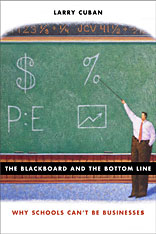 The Blackboard and the Bottom Line: Why Schools Can't Be Businesses
Larry Cuban
Harvard University Press, 2007 "Ford Motor Company would not have survived the competition had it not been for an emphasis on results. We must view education the same way," the U.S. Secretary of Education declared in 2003. But is he right? In this provocative new book, Larry Cuban takes aim at the alluring cliché that schools should be more businesslike, and shows that in its long history in business-minded America, no one has shown that a business model can be successfully applied to education.
In this straight-talking book, one of the most distinguished scholars in education charts the Gilded Age beginnings of the influential view that American schools should be organized to meet the needs of American businesses, and run according to principles of cost-efficiency, bottom-line thinking, and customer satisfaction.
Not only are schools by their nature not businesslike, Cuban argues, but the attempt to run them along business lines leads to dangerous over-standardization--of tests, and of goals for our children. Why should we think that there is such a thing as one best school? Is "college for all" achievable--or even desirable? Even if it were possible, do we really want schools to operate as bootcamps for a workforce? Cuban suggests that the best business-inspired improvement for American education would be more consistent and sustained on-the-job worker training, tailored for the job to be done, and business leaders' encouragement--and adoption--of an ethic of civic engagement and public service.
Black-Body Theory and the Quantum Discontinuity, 1894-1912
Thomas S. Kuhn
University of Chicago Press, 1987 "A masterly assessment of the way the idea of quanta of radiation became part of 20th-century physics. . . . The book not only deals with a topic of importance and interest to all scientists, but is also a polished literary work, described (accurately) by one of its original reviewers as a scientific detective story."—John Gribbin, New Scientist
"Every scientist should have this book."—Paul Davies, New Scientist
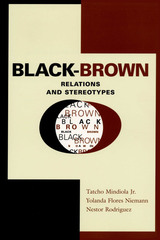 Black-Brown Relations and Stereotypes
By Tatcho Mindiola, Jr., Yolanda Flores Niemann, and Nestor Rodriguez
University of Texas Press, 2002 Race relations in twenty-first-century America will not be just a black-and-white issue. The 2000 census revealed that Hispanics already slightly outnumber African Americans as the largest ethnic group, while together Blacks and Hispanics constitute the majority population in the five largest U.S. cities. Given these facts, black-brown relations could be a more significant racial issue in the decades to come than relations between minority groups and Whites. Offering some of the first in-depth analyses of how African Americans and Hispanics perceive and interact with each other, this pathfinding study looks at black-brown relations in Houston, Texas, one of the largest U.S. cities with a majority ethnic population and one in which Hispanics outnumber African Americans. Drawing on the results of several sociological studies, the authors focus on four key issues: how each group forms and maintains stereotypes of the other, areas in which the two groups conflict and disagree, the crucial role of women in shaping their communities' racial attitudes, and areas in which Hispanics and African Americans agree and can cooperate to achieve greater political power and social justice.
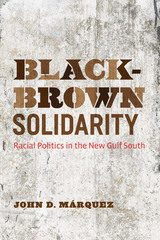 Black-Brown Solidarity: Racial Politics in the New Gulf South
By John D. Márquez
University of Texas Press, 2014 Houston is the largest city in the Gulf South, a region sometimes referred to as the “black belt” because of its sizeable African American population. Yet, over the last thirty years, Latinos have become the largest ethnic minority in Houston, which is surpassed only by Los Angeles and New York in the number of Latino residents. Examining the history and effects of this phenomenon, Black-Brown Solidarity describes the outcomes of unexpected coalitions that have formed between the rapidly growing Latino populations and the long-held black enclaves in the region. Together, minority residents have put the spotlight on prominent Old South issues such as racial profiling and police brutality. Expressions of solidarity, John D. Márquez argues, have manifested themselves in expressive forms such as hip-hop music, youth gang cultural traits, and the storytelling of ordinary residents in working-class communities. Contrary to a growing discourse regarding black-brown conflict across the United States, the blurring of racial boundaries reflects broader arguments regarding hybrid cultures that unsettle the orders established by centuries-old colonial formations. Accentuating what the author defines as a racial state of expendability—the lynchpin of vigilante violence and police brutality—the new hybridization has resulted in shared wariness of a linked fate. Black-Brown Solidarity also explores the ways in which the significance of African American history in the South has influenced the structures through which Latinos have endured and responded to expendability. Mining data from historical archives, oral histories, legal documents, popular media, and other sources, this work is a major contribution to urban studies, ethnic studies, and critical race theory.
Blackburn Buccaneer
Nico Braas
Amsterdam University Press, 2023 The Blackburn Buccaneer was the first jet aircraft that was especially designed for very low flying under the radar at high subsonic speeds. It was developed in the fifties and entered service at the Royal Navy in 1962. Later, it also flew as an attack bomber at the R.A.F. and it even played a role during the Gulf War in 1991, before being retired in 1994 after an operational career that spanned three decades.
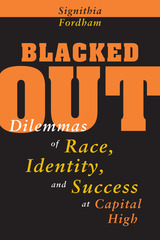 Blacked Out: Dilemmas of Race, Identity, and Success at Capital High
Signithia Fordham
University of Chicago Press, 1996 This innovative portrait of student life in an urban high school focuses on the academic success of African-American students, exploring the symbolic role of academic achievement within the Black community and investigating the price students pay for attaining it. Signithia Fordham's richly detailed ethnography reveals a deeply rooted cultural system that favors egalitarianism and group cohesion over the individualistic, competitive demands of academic success and sheds new light on the sources of academic performance. She also details the ways in which the achievements of sucessful African-Americans are "blacked out" of the public imagination and negative images are reflected onto black adolescents. A self-proclaimed "native" anthropologist, she chronicles the struggle of African-American students to construct an identity suitable to themselves, their peers, and their families within an arena of colliding ideals. This long-overdue contribution is of crucial importance to educators, policymakers, and ethnographers.
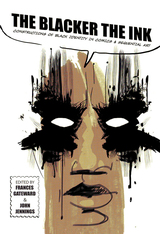 The Blacker the Ink: Constructions of Black Identity in Comics and Sequential Art
Gateward, Frances
Rutgers University Press, 2015 Winner of the 2016 Will Eisner Comic Industry Award for Best Academic/Scholarly Work
Winner of the 2016 Ray and Pat Browne Award for Best Edited Collection in Popular Culture and American Culture by the Popular Culture Association/American Culture Association
Winner of the 2016 PEN Oakland-Josephine Miles Award for Excellence in Literature
When many think of comic books the first thing that comes to mind are caped crusaders and spandex-wearing super-heroes. Perhaps, inevitably, these images are of white men (and more rarely, women). It was not until the 1970s that African American superheroes such as Luke Cage, Blade, and others emerged. But as this exciting new collection reveals, these superhero comics are only one small component in a wealth of representations of black characters within comic strips, comic books, and graphic novels over the past century.
The Blacker the Ink is the first book to explore not only the diverse range of black characters in comics, but also the multitude of ways that black artists, writers, and publishers have made a mark on the industry. Organized thematically into “panels” in tribute to sequential art published in the funny pages of newspapers, the fifteen original essays take us on a journey that reaches from the African American newspaper comics of the 1930s to the Francophone graphic novels of the 2000s. Even as it demonstrates the wide spectrum of images of African Americans in comics and sequential art, the collection also identifies common character types and themes running through everything from the strip The Boondocks to the graphic novel Nat Turner.
Though it does not shy away from examining the legacy of racial stereotypes in comics and racial biases in the industry, The Blacker the Ink also offers inspiring stories of trailblazing African American artists and writers. Whether you are a diehard comic book fan or a casual reader of the funny pages, these essays will give you a new appreciation for how black characters and creators have brought a vibrant splash of color to the world of comics.
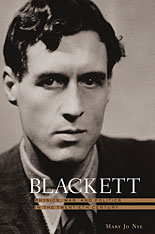 Blackett: Physics, War, and Politics in the Twentieth Century
Mary Jo Nye
Harvard University Press, 2004 This is a lively and compact biography of P. M. S. Blackett, one of the most brilliant and controversial physicists of the twentieth century. Nobel laureate, leader of operational research during the Second World War, scientific advisor to the British government, President of the Royal Society, member of the House of Lords, Blackett was also denounced as a Stalinist apologist for opposing American and British development of atomic weapons, subjected to FBI surveillance, and named as a fellow traveler on George Orwell's infamous list.
His service as a British Royal Navy officer in the First World War prepared Blackett to take a scientific advisory role on military matters in the mid-1930s. An international leader in the experimental techniques of the cloud chamber, he was a pioneer in the application of magnetic evidence for the geophysical theory of continental drift. But his strong political stands made him a polarizing influence, and the decisions he made capture the complexity of living a prominent twentieth-century scientific life.
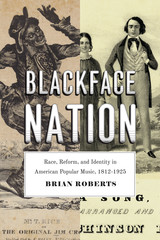 Blackface Nation: Race, Reform, and Identity in American Popular Music, 1812-1925
Brian Roberts
University of Chicago Press, 2017 As the United States transitioned from a rural nation to an urbanized, industrial giant between the War of 1812 and the early twentieth century, ordinary people struggled over the question of what it meant to be American. As Brian Roberts shows in Blackface Nation, this struggle is especially evident in popular culture and the interplay between two specific strains of music: middle-class folk and blackface minstrelsy.
The Hutchinson Family Singers, the Northeast’s most popular middle-class singing group during the mid-nineteenth century, is perhaps the best example of the first strain of music. The group’s songs expressed an American identity rooted in communal values, with lyrics focusing on abolition, women’s rights, and socialism. Blackface minstrelsy, on the other hand, emerged out of an audience-based coalition of Northern business elites, Southern slaveholders, and young, white, working-class men, for whom blackface expressed an identity rooted in individual self-expression, anti-intellectualism, and white superiority. Its performers embodied the love-crime version of racism, in which vast swaths of the white public adored African Americans who fit blackface stereotypes even as they used those stereotypes to rationalize white supremacy. By the early twentieth century, the blackface version of the American identity had become a part of America’s consumer culture while the Hutchinsons’ songs were increasingly regarded as old-fashioned. Blackface Nation elucidates the central irony in America’s musical history: much of the music that has been interpreted as black, authentic, and expressive was invented, performed, and enjoyed by people who believed strongly in white superiority. At the same time, the music often depicted as white, repressed, and boringly bourgeois was often socially and racially inclusive, committed to reform, and devoted to challenging the immoralities at the heart of America’s capitalist order.
Black/Gay: The Harlem Renaissance, the Protest Era, and the Constructions of Black Gay Identity in the 1980s and 90s
Simon Dickel
Michigan State University Press, 2011 This book explores key texts of the black gay culture of the 1980s and ’90s. Starting with an analysis of the political discourse in anthologies such as In the Life and Brother to Brother, it identifies the references to the Harlem Renaissance and the Protest Era as common elements of black gay discourse. This connection to African American cultural and political traditions legitimizes black gay identity and criticizes the construction of gay identity as white. Readings of Isaac Julien’s Looking for Langston, Samuel R. Delany’s “Atlantis: Model 1924” and The Motion of Light in Water, Melvin Dixon’s Vanishing Rooms, Randall Kenan’s A Visitation of Spirits, and Steven Corbin’s No Easy Place to Be demonstrate how these strategies of signifying are used in affirmative, humorous, and ironic ways.
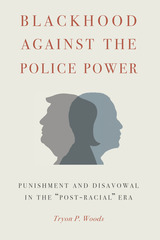 Blackhood Against the Police Power: Punishment and Disavowal in the "Post-Racial" Era
Tryon P. Woods
Michigan State University Press, 2019 Both significant and timely, Blackhood Against the Police Power addresses the punishment of “race” and the disavowal of sexual violence central to the contemporary “post-racial” culture of politics. Here the author asserts that the post-racial presents an antiblack animus that should be read as desiring the end of blackness and the black liberation movement’s singular ethical claims. The book redefines policing as a sociohistorical process of implementing antiblackness and, in so doing, redefines racism as an act of sexual violence that produces the punishment of race. It smartly critiques the way leading antiracist discourse is frequently complicit with antiblackness and recalls the original 1960s conception of black studies as a corrective to the deficiencies in today’s critical discourse on race and sex. The book explores these lines of inquiry to pinpoint how the history of racial slavery wraps itself in a new discourse of disavowal. In this way, Blackhood Against the Police Power responds to a range of texts, policies, practices, and representations complicit with the police power—from the Fourth Amendment and the movements to curtail stop-and-frisk policing and mass incarceration to popular culture treatments of blackness to the leading academic discourses on race and sex politics.
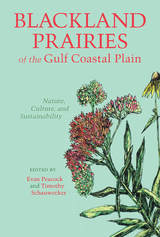 Blackland Prairies of the Gulf Coastal Plain: Nature, Culture, and Sustainability
Edited by Evan Peacock and Timothy Schauwecker
University of Alabama Press, 2003 Underscores the relevance of archaeological research in understanding long-term cultural change
Taking a holistic approach, this compilation gathers ecological, historical, and archaeological research written on the distinctive region of the Southeast called the Gulf coast blackland prairie. Ranging from the last glacial period to the present day, the case studies provide a broad picture of how the area has changed through time and been modified by humans, first with nomadic bands of Indians trailing the grazing animals and then by Euro-American settlers who farmed the rich agricultural area. Contemporary impacts include industrialization, aquaculture, population growth, land reclamation, and wildlife management.
It is believed that the Black Belt and the Great Plains were contiguous in the past and shared the same prairie vegetation, insects, and large fauna, such as bison. Swaths and patches of limestone-based soils still weave a biological corridor through what is now Alabama, Mississippi, Arkansas, Louisiana, and Texas. In analyzing this distinct grassland ecosystem, the essays compare both the mega and minute flora and fauna sustained by the land in the past and present; reveal what foods were harvested by early inhabitants, their gathering techniques, and diet changes over the 10,000-year period of native occupancy; survey the documents of early explorers for descriptions of the landform, its use, and the lives of inhabitants at the time of contact; and look at contemporary efforts to halt abuse and reverse damage to this unique and shrinking biome.
This book demonstrates that the blackland prairie has always been an important refuge for a teeming array of biological species, including humans. It will have wide scholarly appeal as well as general interest and will be welcomed by archaeologists, biologists, botanists, ecologists, historians, librarians, politicians, land managers, and national, state, and local administrators.
 A Blacklist Education: American History, a Family Mystery, and a Teacher Under Fire
Jane S. Smith
Rutgers University Press, 2025 In A Blacklist Education, a mysterious file of family papers triggers a journey through the dark days of political purges in the 1950s. Jane S. Smith tells the story of the anticommunist witch hunt that sent shockwaves through New York City’s public schools as more than a thousand teachers were targeted by Board of Education investigators. Her father was one of them—a fact she learned only long after his death.
Beginning in 1949, amid widespread panic about supposed communist subversion, investigators questioned teachers in their homes, accosted them in their classrooms, and ordered them to report to individual hearings. The interrogations were not published, filmed, open to the public, or reported in the news. By 1956, hundreds of New York City teachers had been fired, often because of uncorroborated reports from paid informers or anonymous accusers.
Most of the targeted teachers resigned or retired without any public process, their names recorded only in municipal files and their futures never known. Their absence became the invisible outline of an educational void, a narrowing of thought that pervaded classrooms for decades. In this highly personal story, family lore and childhood memory lead to restricted archives, forgotten inquisitions, and an eerily contemporary campaign to control who could teach and what was acceptable for students to learn.
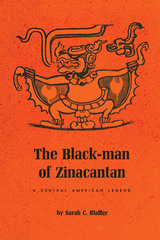 The Black-Man of Zinacantan: A Central American Legend
By Sarah C. Blaffer
University of Texas Press, 1972 The subject of this work is anomalies—those things that are between one state and another, neither dead nor alive, neither animal nor human. In this instance, they are the "spooks" (espantos) that inhabit the Maya area: the charcoal-cruncher, a disembodied head that goes off into the night to eat charcoal; the characotels, men who have turned into animals in order to steal chickens; and others. The victims chosen by spooks are likewise between two states: they are caught while asleep or drunk; or they may be humans who ignore social conventions and behave in "un-human" manner. The Black-man of Zinacantan focuses on a small, super-sexed demon who possesses a six-foot-long, death-dealing penis and a penchant for mischief-making. This demon is known in Highland Chiapas as h'ik'al, the Black-man. Although h'ik'al's prototype may have been the bat deity, an ancient Maya god of sacrifice, the demon has been adapted to contemporary life. Sarah Blaffer analyzes the position of anomalies in societies and shows h'ik'al as a norm-offending, yet norm-reinforcing, specter, who by his character and actions demonstrates the proper sex roles for Zinacantec men and women. The data for the study was recorded in Zinacantan, a Tzotzil-speaking Maya community, and in other Maya towns in southern Mexico and Guatemala; the study includes an analysis of tales recorded and translated by Robert M. Laughlin. The drawings that decorate the text were adapted by Virginia Savage and Joseph Barbieri. Besides being a comprehensive treatment of Maya demonology, the book demonstrates the newer approaches in comparative mythology of Claude Lévi-Strauss and others.
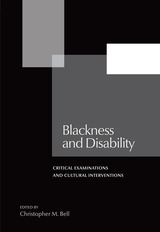 Blackness and Disability: Critical Examinations and Cultural Interventions
Christopher M. Bell
Michigan State University Press, 2012 Disability Studies diverge from the medical model of disability (which argues that disabled subjects can and should be “fixed”) to view disability as socially constructed, much in the same way other identities are. The work of reading black and disabled bodies is not only recovery work, but work that requires a willingness to deconstruct the systems that would keep those bodies in separate spheres. This pivotal volume uncovers the misrepresentations of black disabled bodies and demonstrates how those bodies transform systems and culture. Drawing on key themes in Disability Studies and African American Studies, these collected essays complement one another in interesting and dynamic ways, to forge connections across genres and chronotopes, an invitation to keep blackness and disability in conversation. With an analysis of disability as a result of war, studies of cognitive impairment and slavery in fiction, representations of slavery and violence in photography, deconstructions of illness (cancer and AIDS) narratives, comparative analyses of black and Latina/o and black and African subjects, analysis of treatments of disability in hip-hop, and commentary on disability, blackness, and war, this volume shows that the historical lines of demarcation in this field are permeable and should be challenged.
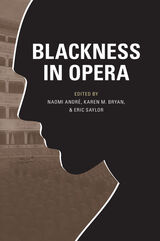 Blackness in Opera
Edited by Naomi André, Karen M. Bryan, and Eric Saylor
University of Illinois Press, 2012 Blackness in Opera critically examines the intersections of race and music in the multifaceted genre of opera. A diverse cross-section of scholars places well-known operas (Porgy and Bess, Aida, Treemonisha) alongside lesser-known works such as Frederick Delius's Koanga, William Grant Still's Blue Steel, and Clarence Cameron White's Ouanga! to reveal a new historical context for re-imagining race and blackness in opera. The volume brings a wide-ranging, theoretically informed, interdisciplinary approach to questions about how blackness has been represented in these operas, issues surrounding characterization of blacks, interpretation of racialized roles by blacks and whites, controversies over race in the theatre and the use of blackface, and extensions of blackness along the spectrum from grand opera to musical theatre and film. In addition to essays by scholars, the book also features reflections by renowned American tenor George Shirley. Contributors are Naomi André, Melinda Boyd, Gwynne Kuhner Brown, Karen M. Bryan, Melissa J. de Graaf, Christopher R. Gauthier, Jennifer McFarlane-Harris, Gayle Murchison, Guthrie P. Ramsey Jr., Eric Saylor, Sarah Schmalenberger, Ann Sears, George Shirley, and Jonathan O. Wipplinger.
Blacks
Gwendolyn Brooks
Northwestern University Press, 1987
Here is a necessary collection of poetry for admirers of words and treasurers of literary beauty. Spanning more than 30 years, this collection of literary masterpieces by the venerable Ms. Gwendolyn Brooks, arguably Illinois' most beloved Poet Laureate and Chicago's elder black literary stateswoman, Blacks includes all of Ms. Brooks' critically acclaimed writings. Within its covers is the groundbreaking "Annie Allen," which earned her the Pulitzer Prize in 1950. There is also the sweepingly beautiful and finely crafted "A Street in Bronzeville," a highly anticipated and lauded poetic treasure that spoke volumes for this great poet's love of black people, Chicago's Black community, and even the community of the world. Blacks includes a special treat, Maud Martha, Brooks' only novel.
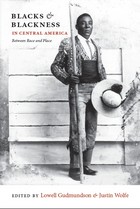 Blacks and Blackness in Central America: Between Race and Place
Lowell Gudmundson and Justin Wolfe, eds.
Duke University Press, 2010 Many of the earliest Africans to arrive in the Americas came to Central America with Spanish colonists in the sixteenth and seventeenth centuries, and people of African descent constituted the majority of nonindigenous populations in the region long thereafter. Yet in the development of national identities and historical consciousness, Central American nations have often countenanced widespread practices of social, political, and regional exclusion of blacks. The postcolonial development of mestizo or mixed-race ideologies of national identity have systematically downplayed African ancestry and social and political involvement in favor of Spanish and Indian heritage and contributions. In addition, a powerful sense of place and belonging has led many peoples of African descent in Central America to identify themselves as something other than African American, reinforcing the tendency of local and foreign scholars to see Central America as peripheral to the African diaspora in the Americas. The essays in this collection begin to recover the forgotten and downplayed histories of blacks in Central America, demonstrating the centrality of African Americans to the region’s history from the earliest colonial times to the present. They reveal how modern nationalist attempts to define mixed-race majorities as “Indo-Hispanic,” or as anything but African American, clash with the historical record of the first region of the Americas in which African Americans not only gained the right to vote but repeatedly held high office, including the presidency, following independence from Spain in 1821. Contributors. Rina Cáceres Gómez, Lowell Gudmundson, Ronald Harpelle, Juliet Hooker, Catherine Komisaruk, Russell Lohse, Paul Lokken, Mauricio Meléndez Obando, Karl H. Offen, Lara Putnam, Justin Wolfe
 Blacks and Jews in America: An Invitation to Dialogue
Terrence L. Johnson and Jacques Berlinerblau
Georgetown University Press, 2024 A Black-Jewish dialogue lifts a veil on these groups’ unspoken history, shedding light on the challenges and promises facing American democracy from its inception to the present In this uniquely structured conversational work, two scholars—one of African American politics and religion, and one of contemporary American Jewish culture—explore a mystery: Why aren't Blacks and Jews presently united in their efforts to combat white supremacy? As alt-right rhetoric becomes increasingly normalized in public life, the time seems right for these one-time allies to rekindle the fires of the civil rights movement. Blacks and Jews in America investigates why these two groups do not presently see each other as sharing a common enemy, let alone a political alliance. Authors Terrence L. Johnson and Jacques Berlinerblau consider a number of angles, including the disintegration of the “Grand Alliance” between Blacks and Jews during the civil rights era, the perspective of Black and Jewish millennials, the debate over Louis Farrakhan and the Nation of Islam, and the Israel-Palestine conflict. Ultimately, this book shows how the deep roots of the Black-Jewish relationship began long before the mid-twentieth century, changing a narrative dominated by the Grand Alliance and its subsequent fracturing. By engaging this history from our country’s origins to its present moment, this dialogue models the honest and searching conversation needed for Blacks and Jews to forge a new understanding.
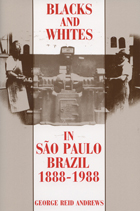 Blacks and Whites in Sao Paulo, Brazil, 1888-1988
George Reid Andrews
University of Wisconsin Press, 1991 For much of the twentieth century Brazil enjoyed an international reputation as a “racial democracy,” but that image has been largely undermined in recent decades by research suggesting the existence of widespread racial inequality. George Reid Andrews provides the first thoroughly documented history of Brazilian racial inequality from the abolition of slavery in 1888 up to the late 1980s, showing how economic, social, and political changes in Brazil during the last one hundred years have shaped race relations.
No laws of segregation or apartheid exist in Brazil, but by looking carefully at government policies, data on employment, mainstream and Afro-Brazilian newspapers, and a variety of other sources, Andrews traces pervasive discrimination against Afro-Brazilians over time. He draws his evidence from the country’s largest and most economically important state, São Paulo, showing how race relations were affected by its transformation from a plantation-based economy to South America’s most urban, industrialized society.
The book focuses first on Afro-Brazilians' entry into the agricultural and urban working class after the abolition of slavery. This transition, Andrews argues, was seriously hampered by state policies giving the many European immigrants of the period preference over black workers. As immigration declined and these policies were overturned in the late 1920s, black laborers began to be employed in agriculture and industry on nearly equal terms with whites. Andrews then surveys efforts of blacks to move into the middle class during the 1900s. He finds that informal racial solidarity among middle-class whites has tended to exclude Afro-Brazilians from the professions and other white-collar jobs.
Andrews traces how discrimination throughout the century led Afro-Brazilians to mobilize, first through the antislavery movement of the 1880s, then through such social and political organizations of the 1920s and 1930s as the Brazilian Black Front, and finally through the anti-racism movements of the 1970s and 1980s. These recent movements have provoked much debate among Brazilians over their national image as a racial democracy. It remains to be seen, Andrews concludes, whether that debate will result in increased opportunities for black Brazilians. Winner of the 1993 Arthur P. Whitaker Prize
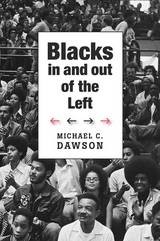 Blacks In and Out of the Left
Michael C. Dawson
Harvard University Press, 2013 The radical black left that played a crucial role in twentieth-century struggles for equality and justice has largely disappeared. Michael Dawson investigates the causes and consequences of the decline of black radicalism as a force in American politics and argues that the conventional left has failed to take race sufficiently seriously as a historical force in reshaping American institutions, politics, and civil society.
African Americans have been in the vanguard of progressive social movements throughout American history, but they have been written out of many histories of social liberalism. Focusing on the 1920s and 1930s, as well as the Black Power movement, Dawson examines successive failures of socialists and Marxists to enlist sympathetic blacks, and white leftists’ refusal to fight for the cause of racial equality. Angered by the often outright hostility of the Socialist Party and similar social democratic organizations, black leftists separated themselves from these groups and either turned to the hard left or stayed independent. A generation later, the same phenomenon helped fueled the Black Power movement’s turn toward a variety of black nationalist, Maoist, and other radical political groups.
The 2008 election of Barack Obama notwithstanding, many African Americans still believe they will not realize the fruits of American prosperity any time soon. This pervasive discontent, Dawson suggests, must be mobilized within the black community into active opposition to the social and economic status quo. Black politics needs to find its way back to its radical roots as a vital component of new American progressive movements.
 Blacks in Antiquity: Ethiopians in the Greco-Roman Experience
Frank M. Snowden
Harvard University Press, 1970 The Africans who came to ancient Greece and Italy participated in an important chapter of classical history. Although evidence indicated that the alien dark- and black-skinned people were of varied tribal and geographic origins, the Greeks and Romans classified many of them as Ethiopians. In an effort to determine the role of black people in ancient civilization, Mr. Snowden examines a broad span of Greco-Roman experience--from the Homeric era to the age of Justinian--focusing his attention on the Ethiopians as they were known to the Greeks and Romans. The author dispels unwarranted generalizations about the Ethiopians, contending that classical references to them were neither glorifications of a mysterious people nor caricatures of rare creatures.
Mr. Snowden has probed literary, epigraphical, papyrological, numismatic, and archaeological sources and has considered modern anthropological and sociological findings on pertinent racial and intercultural problems. He has drawn directly upon the widely scattered literary evidence of classical and early Christian writers and has synthesized extensive and diverse material. Along with invaluable reference notes, Mr. Snowden has included over 140 illustrations which depict the Negro as the Greeks and Romans conceived of him in mythology and religion and observed him in a number of occupations--as servant, diplomat, warrior, athlete, and performer, among others.
Presenting an exceptionally comprehensive historical description of the first major encounter of Europeans with dark and black Africans, Mr. Snowden found that the black man in a predominantly white society was neither romanticized nor scorned--that the Ethiopian in classical antiquity was considered by pagan and Christian without prejudice.
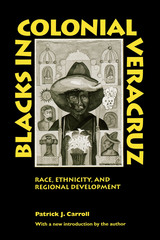 Blacks in Colonial Veracruz: Race, Ethnicity, and Regional Development
By Patrick J. Carroll
University of Texas Press, 1991 Beginning with the Spanish conquest, Mexico has become a racially complex society intermixing Indian, Spanish, and African populations. Questions of race and ethnicity have fueled much political and scholarly debate, sometimes obscuring the experiences of particular groups, especially blacks. Blacks in Colonial Veracruz seeks to remedy this omission by studying the black experience in central Veracruz during virtually the entire colonial period. The book probes the conditions that shaped the lives of inhabitants in Veracruz from the first European contact through the early formative period, colonial years, independence era, and the postindependence decade. While the primary focus is on blacks, Carroll relates their experience to that of Indians, Spaniards, and castas (racially hybrid people) to present a full picture of the interplay between local populations, the physical setting, and technological advances in the development of this important but little-studied region.
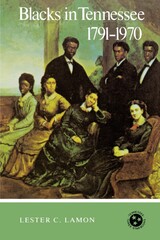 Blacks in Tennessee, 1791–1970
Lester C. Lamon
University of Tennessee Press, 1981 While black men and women have played important roles in Tennessee’s growth and history; slavery, caste, and segregation have forced them to live apart and to create a separate history. In this historical analysis, Lester Lamon offers an understanding of the history of black Tennesseans, recognizing that they have been both a part of and apart from the developments affecting the dominant white population of the state. The different economic priorities, political loyalties, and racial populations evident in the three “Grand Divisions” of the state have created superficial differences in the historical experiences of blacks in the three regions. Intrastate competition has reinforced these sectional differences, but a common factor found in the black experience has been a racial “givenness”—the idea that blacks should not expect equality or free association with whites. Tennessee’s black history is not one of a surrender to racial pressure, but, instead, is a story of courage, sacrifice, frustration, and dreams of freedom, equality, and respect for human dignity.
Blacks in Tennessee provides a necessary and culturally enriching addition to the traditional history of the state.
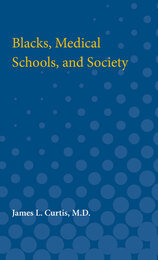 Blacks, Medical Schools, and Society
James L. Curtis, M.D.
University of Michigan Press, 1971 One American in 560 becomes a doctor . . . Only one Black American in 3800 does. Why? The answers—and what can be done about them—are presented in this succinct and important book by Dr. James L. Curtis. Blacks, Medical Schools, and Society provides an insightful history of the Black physician in America—from colonial times to the present—as well as an incisive analysis of contemporary trends and future prospects in Black medical education. Examining high school programs and premedical workshops such as the Cornell Medical School-Hampton Institute collaboration, the author evaluates the impact of current approaches and suggests practical steps to increase the quality and quantity of trained Black doctors and dentists. At a time when physicians are in short supply, and when—for the first time—more than half of the country's Black medical students are attending predominantly white schools, this book offers a significant and straightforward commentary on the medical practices of a multiracial society.
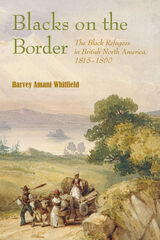 Blacks on the Border: The Black Refugees in British North America, 1815–1860
Harvey Whitfield
University Press of New England, 2006 Following the American Revolution, free black communities and enslaved African Americans increasingly struggled to reconcile their African heritage with their American home. This struggle resulted in tens of thousands of African Americans seeking new homes in areas as diverse as Haiti and Nova Scotia. Black refugees arrived in Nova Scotia after the War of 1812 with little in common but their desire for freedom. By 1860, they had formed families, communities, and traditions. Harvey Amani Whitfield’s study reconstructs the lives and history of a sizeable but neglected group of African Americans by placing their history within the framework of free black communities in New England and Nova Scotia during the nineteenth century. It examines which aspects of American and African American culture black expatriates used or discarded in an area that forced them to negotiate the overlapping worlds of Great Britain, the United States, Afro–New England, and the African American Diaspora, while considering how former American slaves understood freedom long before the Civil War.
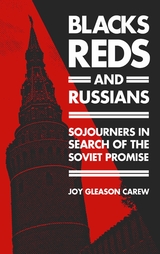 Blacks, Reds, and Russians: Sojourners in Search of the Soviet Promise
Joy Gleason Carew
Rutgers University Press, 2010 One of the most compelling, yet little known stories of race relations in the twentieth century is the account of blacks who chose to leave the United States to be involved in the Soviet Experiment in the 1920s and 1930s. Frustrated by the limitations imposed by racism in their home country, African Americans were lured by the promise of opportunity abroad. A number of them settled there, raised families, and became integrated into society. The Soviet economy likewise reaped enormous benefits from the talent and expertise that these individuals brought, and the all around success story became a platform for political leaders to boast their party goals of creating a society where all members were equal.
In Blacks, Reds, and Russians, Joy Gleason Carew offers insight into the political strategies that often underlie relationships between different peoples and countries. She draws on the autobiographies of key sojourners, including Harry Haywood and Robert Robinson, in addition to the writings of Claude McKay, W.E.B. Du Bois, and Langston Hughes. Interviews with the descendents of figures such as Paul Robeson and Oliver Golden offer rare personal insights into the story of a group of emigrants who, confronted by the daunting challenges of making a life for themselves in a racist United States, found unprecedented opportunities in communist Russia.
 Blackstar Rising and the Purple Reign: The Sonic Afterlives of David Bowie and Prince
Daphne A. Brooks, editor
Duke University Press, 2026 Blackstar Rising and the Purple Reign is the first critical anthology dedicated to exploring the legacies of two pop music icons who died within months of one another in 2016: David Bowie and Prince. Daphne A. Brooks brings together an extraordinary array of writers, artists and scholars including Greg Tate, Jack Halberstam, Kara Keeling, Eric Lott, and Ann Powers to offer fresh insight into how Bowie and Prince each fundamentally changed pop culture as two musicians who emerged at the intersections of modern movements surrounding race, gender, sexuality, and art. Featured alongside these pieces are interviews with trusted collaborators of Bowie and Prince such as D.A. Pennebaker, Sheila E., and Marie France, giving vital insider context to the impact both artists had on pop culture and the complexities of their repertoires, politics, and private lives. This work is essential reading for any fan of two of the most formidable and eminent figures in pop culture history.
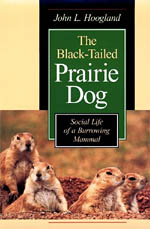 The Black-Tailed Prairie Dog: Social Life of a Burrowing Mammal
John L. Hoogland
University of Chicago Press, 1995 In The Black-Tailed Prairie Dog, John L. Hoogland draws on sixteen years of research at Wind Cave National Park, South Dakota, in the United States to provide this account of prairie dog social behavior. Through comparisons with more than 300 other animal species, he offers new insights into basic theory in behavioral ecology and sociobiology.
Hoogland documents interactions within and among families of prairie dogs to examine the advantages and disadvantages of coloniality. By addressing such topics as male and female reproductive success, inbreeding, kin recognition, and infanticide, Hoogland offers a broad view of conflict and cooperation. Among his surprising findings is that prairie dog females sometimes suckle, and at other times kill, the offspring of close kin.
Enhanced by more than 100 photographs, this book illuminates the social organization of a burrowing mammal and raises fundamental questions about current theory. As the most detailed long-term study of any social rodent, The Black-Tailed Prairie Dog will interest not only mammalogists and other vertebrate biologists, but also students of behavioral and evolutionary ecology.
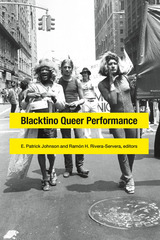 Blacktino Queer Performance
E. Patrick Johnson and Ramón H. Rivera-Servera, editors
Duke University Press, 2016 Staging an important new conversation between performers and critics, Blacktino Queer Performance approaches the interrelations of blackness and Latinidad through a stimulating mix of theory and art. The collection contains nine performance scripts by established and emerging black and Latina/o queer playwrights and performance artists, each accompanied by an interview and critical essay conducted or written by leading scholars of black, Latina/o, and queer expressive practices. As the volume's framing device, "blacktino" grounds the specificities of black and brown social and political relations while allowing the contributors to maintain the goals of queer-of-color critique. Whether interrogating constructions of Latino masculinity, theorizing the black queer male experience, or examining black lesbian relationships, the contributors present blacktino queer performance as an artistic, critical, political, and collaborative practice. These scripts, interviews, and essays not only accentuate the value of blacktino as a reading device; they radiate the possibilities for thinking through the concepts of blacktino, queer, and performance across several disciplines. Blacktino Queer Performance reveals the inevitable flirtations, frictions, and seductions that mark the contours of any ethnoracial love affair. Contributors. Jossiana Arroyo, Marlon M. Bailey, Pamela Booker, Sharon Bridgforth, Jennifer Devere Brody, Cedric Brown, Bernadette Marie Calafell, Javier Cardona, E. Patrick Johnson, Omi Osun Joni L. Jones, John Keene, Lawrence La Fountain-Stokes, D. Soyini Madison, Jeffrey Q. McCune Jr., Andreea Micu, Charles I. Nero, Tavia Nyong'o, Paul Outlaw, Coya Paz, Charles Rice-González, Sandra L. Richards, Matt Richardson, Ramón H. Rivera-Servera, Celiany Rivera-Velázquez, Tamara Roberts, Lisa B. Thompson, Beliza Torres Narváez, Patricia Ybarra, Vershawn Ashanti Young
The Blackwater Chronicle
PHILIP P. KENNEDY
West Virginia University Press, 2019 This wilderness travelogue about the exploration of Canaan Valley, West Virginia was originally published in 1853. With appeal far beyond its time and region, first editions of this chronicle reached New York, London, and even Germany. This often humorous and always fascinating story reveals Kennedy's journey into an unexplored territory.
Blair
Mick Temple
Haus Publishing, 2006 Biography of the last British Prime Minister of the 20th Century.
 A Blake Bibliography: Annotated Lists of Works, Studies, and Blakeana
G.E. Bentley Jr. and Martin K. Nurmi
University of Minnesota Press, 1964
A Blake Bibliography was first published in 1964. Minnesota Archive Editions uses digital technology to make long-unavailable books once again accessible, and are published unaltered from the original University of Minnesota Press editions.
The aim of this book is to list every reference to William Blake published between 1757 and 1863 and every criticism and edition of his works from the beginning to the present. Partly because of the deluge of scholarship in the last forty years, it includes perhaps twice as many titles as Sir Geoffrey Keynes's great bibliography of 1921.
An introductory essay on the history of Blake scholarship puts the most significant works into perspective, indicates the best work that has been done, and points to some neglected areas. In addition, all the most important references and many of the less significant ones are briefly annotated as to subject and value. Because many of the works are difficult to locate, specimen copies of all works published before 1831 have been traced to specific libraries. Each of Blake's manuscripts is also traced to its present owner.
Two areas which have received relatively novel attention are early references to Blake (before 1863) and important sale and exhibition catalogues of his works. In both areas there are significant number of important entries which have not been noticed before by Blake scholars. The section on Blake's engravings for commercial works receives especially detailed treatment. A few of the titles listed here have not been described previously in connection with Blake.
A Blake Dictionary: The Ideas and Symbols of William Blake
S. Foster Damon
Dartmouth College Press, 2013 William Blake, poet, artist, and mystic, created a vast multidimensional universe through his verse and art. Spun from a fabric of symbolism and populated by a host of complex characters, Blake’s comprehensive world has provided endless inspiration to subsequent generations. For the reader of Blake, background knowledge of his symbolism is a necessity. In this volume, first published in 1965, S. Foster Damon, father of modern Blake studies and a professor at Brown University until his death, has assembled all references to particular symbols or aspects of Blake’s work and life, so that readers can see the entire spectrum of Blake’s thought on a variety of topics. For this edition of S. Foster Damon’s classic reference work, Morris Eaves has written an updated annotated bibliography and a new foreword, included here along with his original 1988 index.
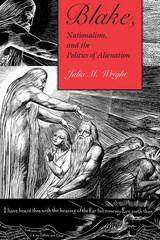 Blake, Nationalism, and the Politics of Alienation
Julia M. Wright
Ohio University Press, 2004 William Blake’s reputation as a staunch individualist is based in large measure on his repeated attacks on institutions and belief systems that constrain the individual’s imagination. Blake, however, rarely represents isolation positively, suggesting that the individual’s absolute freedom from communal pressures is not the ideal. Instead, as Julia Wright argues in her award-winning study Blake, Nationalism, and the Politics of Alienation, Blake’s concern lies with the kind of community that is being established. Moreover, writing at the moment of the emergence of modern nationalism, Blake reveals a concern with the national community in particular. Beginning with a discussion of the priority of national narrative in late-eighteenth-century art theory and antiquarianism, Blake, Nationalism, and the Politics of Alienation traces its relevance in Blake’s printed works, from The Poetical Sketches and the Lambeth Prophecies to The Laocoön. Professor Wright then turns to Europe, America, and Visions of the Daughters of Albion, focusing on Blake’s portrayals of particular characters’ alienation from the groups and ideologies represented in the texts. The book closes by arguing that Blake’s major printed works, Milton and Jerusalem, are explicit and extensive engagements with the question of nation—and empire. Although nationalism existed in various forms during the Romantic period, Blake’s contemporaries generally assumed that nations should progress continuously, producing a clear narrative line from an auspicious origin to the perfect fulfillment of that promise. Wright argues that these mutually determining constructs of national character and national narrative inform Blake’s handling of the problem of the individual-within-a-community.
 Blake; or, The Huts of America: A Corrected Edition
Martin R. Delany
Harvard University Press, 2017 Martin R. Delany’s Blake (1859, 1861–1862) is one of the most important African American—and indeed American—works of fiction of the nineteenth century. It tells the story of Henry Blake’s escape from a southern plantation and his subsequent travels across the United States, into Canada, and to Africa and Cuba. His mission is to unite the black populations of the American Atlantic regions, both free and slave, in the struggle for freedom, whether through insurrection or through emigration and the creation of an independent black state. Blake is a rhetorical masterpiece, all the more strange and mysterious for remaining incomplete, breaking off before its final scene.
This edition of Blake, prepared by textual scholar Jerome McGann, offers the first correct printing of the work in book form. It establishes an accurate text, supplies contextual notes and commentaries, and presents an authoritative account of the work’s composition and publication history. In a lively introduction, McGann argues that Delany employs the resources of fiction to develop a critical account of the interconnected structure of racist power as it operated throughout the American Atlantic. He likens Blake to Upton Sinclair’s The Jungle, in its willful determination to transform a living and terrible present.
Blake; or, The Huts of America: A Corrected Edition will be used in undergraduate and graduate classes on the history of African American fiction, on the history of the American novel, and on black cultural studies. General readers will welcome as well the first reliable edition of Delany’s fiction.
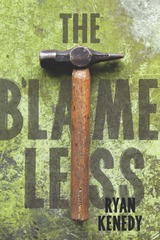 The Blameless
Ryan Kenedy
University of Wisconsin Press, 2023 Newly divorced, Virginia Bigelow is struggling with pressing financial debt, the frustration of a stalled teaching career, an increasingly isolated and lonely existence, and the challenges of being a single parent to an autistic child. When she learns that Travis Lee Hilliard, the man who murdered her father in the 1980s, has been released from prison, she drops everything and sets out on an ill-conceived journey to confront him in order to mete out the justice she feels he deserves.
Meanwhile, having spent three decades serving a life sentence for murdering the California preacher who rescued him from the streets, Travis thinks of himself as a reformed man. Traveling from Folsom Prison to his new home in the Mojave Desert, a remote location with minimal temptations, he struggles to reconcile his past and embrace his newfound freedom. But there are more challenges to staying on the straight and narrow than he ever could have imagined.
Virginia’s and Travis’s braided narratives slowly tighten as they approach their inevitable collision. Unflinching, compassionate, and gripping, this bold novel evocatively examines the ambiguities wrought by both violence and redemption.
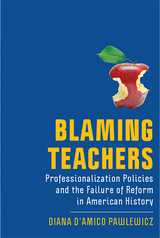 Blaming Teachers: Professionalization Policies and the Failure of Reform in American History
Diana D'Amico Pawlewicz
Rutgers University Press, 2020 Winner of the 2021 Society of Professors of Education Outstanding Book Award
Historically, Americans of all stripes have concurred that teachers were essential to the success of the public schools and nation. However, they have also concurred that public school teachers were to blame for the failures of the schools and identified professionalization as a panacea.
In Blaming Teachers, Diana D'Amico Pawlewicz reveals that historical professionalization reforms subverted public school teachers’ professional legitimacy. Superficially, professionalism connotes authority, expertise, and status. Professionalization for teachers never unfolded this way; rather, it was a policy process fueled by blame where others identified teachers’ shortcomings. Policymakers, school leaders, and others understood professionalization measures for teachers as efficient ways to bolster the growing bureaucratic order of the public schools through regulation and standardization. Beginning in the mid-nineteenth century with the rise of municipal public school systems and reaching into the 1980s, Blaming Teachers traces the history of professionalization policies and the discourses of blame that sustained them.
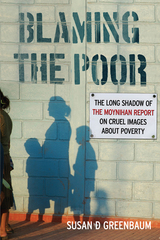 Blaming the Poor: The Long Shadow of the Moynihan Report on Cruel Images about Poverty
Greenbaum, Susan D
Rutgers University Press, 2015 In 1965, the late Senator Daniel Patrick Moynihan—then a high-ranking official in the Department of Labor—sparked a firestorm when he released his report “The Negro Family,” which came to be regarded by both supporters and detractors as an indictment of African American culture. Blaming the Poor examines the regrettably durable impact of the Moynihan Report for race relations and social policy in America, challenging the humiliating image the report cast on poor black families and its misleading explanation of the causes of poverty. A leading authority on poverty and racism in the United States, Susan D. Greenbaum dismantles Moynihan’s main thesis—that the so called matriarchal structure of the African American family “feminized” black men, making them inadequate workers and absent fathers, and resulting in what he called a tangle of pathology that led to a host of ills, from teen pregnancy to adult crime. Drawing on extensive scholarship, Greenbaum highlights the flaws in Moynihan’s analysis. She reveals how his questionable ideas have been used to redirect blame for substandard schools, low wages, and the scarcity of jobs away from the societal forces that cause these problems, while simultaneously reinforcing stereotypes about African Americans. Greenbaum also critiques current policy issues that are directly affected by the tangle of pathology mindset—the demonization and destruction of public housing; the criminalization of black youth; and the continued humiliation of the poor by entrepreneurs who become rich consulting to teachers, non-profits, and social service personnel. A half century later, Moynihan’s thesis remains for many a convenient justification for punitive measures and stingy indifference to the poor. Blaming the Poor debunks this infamous thesis, proposing instead more productive and humane policies to address the enormous problems facing us today.
 Blaming the Victim: How Global Journalism Fails Those in Poverty
Jairo Lugo-Ocando
Pluto Press, 2014 Poverty, it seems, is a constant in today's news, usually the result of famine, exclusion or conflict. In Blaming the Victim, Jairo Lugo-Ocando sets out to deconstruct and reconsider the variety of ways in which the global news media misrepresent and decontextualise the causes and consequences of poverty worldwide. The result is that the fundamental determinant of poverty - inequality - is removed from their accounts.
The books asks many biting questions. When - and how - does poverty become newsworthy? How does ideology come into play when determining the ways in which 'poverty' is constructed in newsrooms - and how do the resulting narratives frame the issue? And why do so many journalists and news editors tend to obscure the structural causes of poverty?
In analysing the processes of news production and presentation around the world, Lugo-Ocando reveals that the news-makers' agendas are often as problematic as the geopolitics they seek to represent. This groundbreaking study reframes the ways in which we can think and write about the enduring global injustice of poverty.
 BLANCHE LAZZELL: THE LIFE AND WORK OF AN AMERICAN MODERNIST
ROBERT C. BRIDGES
West Virginia University Press, 2004 Blanche Lazzell went from Maidsville, West Virginia, to the leading edge of twentieth-century American art. A member of the prominent art communities of Paris and Provincetown, MA during the '20s and '30s, Lazzell was always on the fringe of important developments in the modern art world. Her studies in Paris led her to adopt the techniques of modernism as well as other emerging styles. Among her groundbreaking works were some of the first examples of abstraction in America. Blanche Lazzell: The Life and Work of an American Modernist is a significant contribution to the history of twentieth-century American art. Know primarily as a Provincetown printmaker, Lazzell’s full life and career are presented here, generously accompanied by color reproductions of her work, showing the breadth of her accomplishment in painting, printmaking, and hooked rugs. Lazzell's true contribution to American art history was never fully appreciated during her lifetime. A renewed interest in the artist has developed over the past fifteen years, due mostly to the critical appreciation of her color wood block prints. She is worth remembering not only for her own work, but also for her role as a translator of the achievements of the European modernists for her colleagues in America. In Blanche Lazzell: The Life and Work of an American Modernist, nine essays and hundreds of full-color illustrations bring this incredibly talented and influential artist's work to life.
Blank Darkness: Africanist Discourse in French
Christopher L. Miller
University of Chicago Press, 1986 "Blank Darkness: Africanist Discourse in French is a brilliant and altogether convincing analysis of the way in which Western writers, from Homer to the twentieth century have . . . imposed their language of desire on the least-known part of the world and have called it 'Africa.' There are excellent readings here of writers ranging from Baudelaire, Rimbaud, Sade, and Céline to Conrad and Yambo Ouologuem, but even more impressive and important than these individual readings is Mr. Miller's wide-ranging, incisive, and exact analysis of 'Africanist' discourse, what it has been and what it has meant in the literature of the Western world."—James Olney, Louisiana State University
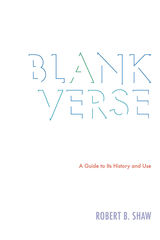 Blank Verse: A Guide to Its History and Use
Robert B. Shaw
Ohio University Press, 2007 Blank verse—unrhymed iambic pentameter—is familiar to many as the form of Shakespeare’s plays and Milton’s Paradise Lost. Since its first use in English in the sixteenth century, it has provided poets with a powerful and versatile metrical line, enabling the creation of some of the most memorable poems of Wordsworth, Keats, Tennyson, Frost, Stevens, Wilbur, Nemerov, Hecht, and a host of others. A protean meter, blank verse lends itself to lyric, dramatic, narrative, and meditative modes; to epigram as well as to epic. Blank Verse is the first book since 1895 to offer a detailed study of the meter’s technical features and its history, as well as its many uses. Robert B. Shaw gives ample space and emphasis to the achievements of modern and postmodern poets working in the form, an area neglected until now by scholarship.
With its compact but inclusive survey of more than four centuries of poetry, Blank Verse is filled with practical advice for poets of our own day who may wish to attempt the form or enhance their mastery of it. Enriched with numerous examples, Shaw’s discussions of verse technique are lively and accessible, inviting not only to apprentice poets but to all readers of poetry.
Shaw’s approach should reassure those who find prosody intimidating, while encouraging specialists to think more broadly about how traditional poetic forms can be taught, learned, practiced, and appreciated in the twenty-first century. Besides filling a conspicuous gap in literary history, Blank Verse points the way ahead for poets interested in exploring blank verse and its multitude of uses.
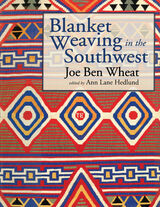 Blanket Weaving in the Southwest
Joe Ben Wheat; edited by Ann Lane Hedlund
University of Arizona Press, 2003 Exquisite blankets, sarapes and ponchos handwoven by southwestern peoples are admired throughout the world. Despite many popularized accounts, serious gaps have existed in our understanding of these textiles—gaps that one man devoted years of scholarly attention to address. During much of his career, anthropologist Joe Ben Wheat (1916-1997) earned a reputation as a preeminent authority on southwestern and plains prehistory. Beginning in 1972, he turned his scientific methods and considerable talents to historical questions as well. He visited dozens of museums to study thousands of nineteenth-century textiles, oversaw chemical tests of dyes from hundreds of yarns, and sought out obscure archives to research the material and documentary basis for textile development. His goal was to establish a key for southwestern textile identification based on the traits that distinguish the Pueblo, Navajo, and Spanish American blanket weaving traditions—and thereby provide a better way of identifying and dating pieces of unknown origin. Wheat's years of research resulted in a masterful classification scheme for southwestern textiles—and a book that establishes an essential baseline for understanding craft production. Nearly completed before Wheat's death, Blanket Weaving in the Southwest describes the evolution of southwestern textiles from the early historic period to the late nineteenth century, establishes a revised chronology for its development, and traces significant changes in materials, techniques, and designs. Wheat first relates what Spanish observers learned about the state of native weaving in the region—a historical review that reveals the impact of new technologies and economies on a traditional craft. Subsequent chapters deal with fibers, yarns, dyes, and fabric structures—including an unprecedented examination of the nature, variety, and origins of bayeta yarns—and with tools, weaves, and finishing techniques. A final chapter, constructed by editor Ann Hedlund from Wheat's notes, provides clues to his evolving ideas about the development of textile design. Hedlund—herself a respected textile scholar and a protégée of Wheat's—is uniquely qualified to interpret the many notes he left behind and brings her own understanding of weaving to every facet of the text. She has ensured that Wheat's research is applicable to the needs of scholars, collectors, and general readers alike. Throughout the text, Wheat discusses and evaluates the distinct traits of the three textile traditions. More than 200 photos demonstrate these features, including 191 color plates depicting a vast array of chief blankets, shoulder blankets, ponchos, sarapes, diyugi, mantas, and dresses from museum collections nationwide. In addition, dozens of line drawings demonstrate the fine points of technique concerning weaves, edge finishes, and corner tassels. Through his groundbreaking and painstaking research, Wheat created a new view of southwestern textile history that goes beyond any other book on the subject. Blanket Weaving in the Southwest addresses a host of unresolved issues in textile research and provides critical tools for resolving them. It is an essential resource for anyone who appreciates the intricacy of these outstanding creations.
Blaschke Products: Bounded Analytic Functions
Peter Colwell
University of Michigan Press, 1985 Blaschke products are an important class of functions in analytic function theory in the unit disk, both because of their involvement in factorization theorems and their utility for the construction of examples. This book gathers the principal results about Blaschke products heretofore scattered in research papers over the past 70 years and provides an extensive bibliography of over 300 items. It is hoped that research workers in and students of function theory will find the book a useful guide and reference to the subject of Blaschke products.
Blaze Orange: Whitetail Deer Hunting in Wisconsin
Travis Dewitz
Wisconsin Historical Society Press, 2014 In Blaze Orange, photographer Travis Dewitz captures the joy, excitement, and camaraderie of deer hunting in Wisconsin. A lone hunter in a tree stand as dawn arrives. A girl and her grandfather scanning a field in the fresh snow. Tired hunters laughing around the evening fire back at camp. These are snapshots of a culture touchstone. With more than 600,000 hunters taking to the fields and woods of the state each year, the whitetail deer season is by far Wisconsin’s largest sporting event. Dewitz documents the hunt and more as he rides along with hunters and a game warden, visits local mom-and-pop stores where hunters gather, and records the industries that operate alongside the deer season—a taxidermist and knife maker, butchers and sausage makers. The result is a stunning and keen-eyed chronicle of one season of the Wisconsin deer hunt.
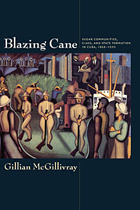 Blazing Cane: Sugar Communities, Class, and State Formation in Cuba, 1868–1959
Gillian McGillivray
Duke University Press, 2009 Sugar was Cuba’s principal export from the late eighteenth century throughout much of the twentieth, and during that time, the majority of the island’s population depended on sugar production for its livelihood. In Blazing Cane, Gillian McGillivray examines the development of social classes linked to sugar production, and their contribution to the formation and transformation of the state, from the first Cuban Revolution for Independence in 1868 through the Cuban Revolution of 1959. She describes how cane burning became a powerful way for farmers, workers, and revolutionaries to commit sabotage, take control of the harvest season, improve working conditions, protest political repression, attack colonialism and imperialism, nationalize sugarmills, and, ultimately, acquire greater political and economic power. Focusing on sugar communities in eastern and central Cuba, McGillivray recounts how farmers and workers pushed the Cuban government to move from exclusive to inclusive politics and back again. The revolutionary caudillo networks that formed between 1895 and 1898, the farmer alliances that coalesced in the 1920s, and the working-class groups of the 1930s affected both day-to-day local politics and larger state-building efforts. Not limiting her analysis to the island, McGillivray shows that twentieth-century Cuban history reflected broader trends in the Western Hemisphere, from modernity to popular nationalism to Cold War repression.
Blazing the Trail: Waymarks in the Exploration of Symbols
Victor Turner
University of Arizona Press, 1992 A collection of Turner's writings that gathers seven late pieces that reflect his thoughts on such subjects as pilgrimage, sacrifice, and liminal processes.
"The essays reveal a passionate struggle between a committed conceptualization and a dedication to the telling detail. Turner is willing to address the moral and spiritual dimensions of being human, which are all too easily set aside by much social science."—Anthropos
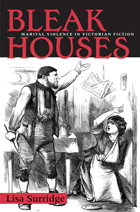 Bleak Houses: Marital Violence in Victorian Fiction
Lisa Surridge
Ohio University Press, 2005 The Offenses Against the Person Act of 1828 opened magistrates' courts to abused working-class wives. Newspapers in turn reported on these proceedings, and in this way the Victorian scrutiny of domestic conduct began. But how did popular fiction treat “private” family violence? Bleak Houses: Marital Violence in Victorian Fiction traces novelists' engagement with the wife-assault debates in the public press between 1828 and the turn of the century.
Lisa Surridge examines the early works of Charles Dickens and reads Dombey and Son and Anne Brontë's The Tenant of Wildfell Hall in the context of the intense debates on wife assault and manliness in the late 1840s and early 1850s. Surridge explores George Eliot's Janet's Repentance in light of the parliamentary debates on the 1857 Divorce Act. Marital cruelty trials provide the structure for both Wilkie Collins's The Woman in White and Anthony Trollope's He Knew He Was Right.
Locating the New Woman fiction of Mona Caird and the reassuring detective investigations of Sherlock Holmes in the context of late-Victorian feminism and the great marriage debate in the Daily Telegraph, Surridge illustrates how fin-de-siècle fiction brought male sexual violence and the viability of marriage itself under public scrutiny. Bleak Houses thus demonstrates how Victorian fiction was concerned about the wife-assault debates of the nineteenth century, debates which both constructed and invaded the privacy of the middle-class home.
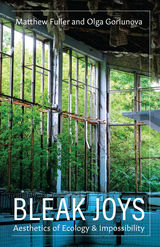 Bleak Joys: Aesthetics of Ecology and Impossibility
Matthew Fuller
University of Minnesota Press, 2019 A philosophical and cultural distillation of the bleak joys in today’s ambivalent ecologies and patterns of life
Bleak Joys develops an understanding of complex entities and processes—from plant roots to forests to ecological damage and its calculation—as aesthetic. It is also a book about “bad” things, such as anguish and devastation, which relate to the ecological and technical but are also constitutive of politics, the ethical, and the formation of subjects.
Avidly interdisciplinary, Bleak Joys draws on scientific work in plant sciences, computing, and cybernetics, as well as mathematics, literature, and art in ways that are not merely illustrative of but foundational to our understanding of ecological aesthetics and the condition in which the posthumanities are being forged. It places the sensory world of plants next to the generalized and nonlinear infrastructure of irresolvability—the economics of indifference up against the question of how to make a home on Planet Earth in a condition of damaged ecologies. Crosscutting chapters on devastation, anguish, irresolvability, luck, plant, and home create a vivid and multifaceted approach that is as remarkable for its humor as for its scholarly complexity. Engaging with Deleuze, Guattari, and Bakhtin, among others, Bleak Joys captures the modes of crises that constitute our present ecological and political condition, and reckons with the means by which they are not simply aesthetically known but aesthetically manifest.
 Bleak Liberalism
Amanda Anderson
University of Chicago Press, 2016 Why is liberalism so often dismissed by thinkers from both the left and the right? To those calling for wholesale transformation or claiming a monopoly on “realistic” conceptions of humanity, liberalism’s assured progressivism can seem hard to swallow. Bleak Liberalism makes the case for a renewed understanding of the liberal tradition, showing that it is much more attuned to the complexity of political life than conventional accounts have acknowledged.
Amanda Anderson examines canonical works of high realism, political novels from England and the United States, and modernist works to argue that liberalism has engaged sober and even stark views of historical development, political dynamics, and human and social psychology. From Charles Dickens’s Bleak House and Hard Times to E. M. Forster’s Howards End to Doris Lessing’s The Golden Notebook, this literature demonstrates that liberalism has inventive ways of balancing sociological critique and moral aspiration. A deft blend of intellectual history and literary analysis, Bleak Liberalism reveals a richer understanding of one of the most important political ideologies of the modern era.
Bleakonomics: A Heartwarming Introduction to Financial Catastrophe, the Jobs Crisis and Environmental Destruction
Rob Larson
Pluto Press, 2012 Bleakonomics is a short and darkly humorous guide to the three great crises plaguing today's world: environmental degradation, social conflict in the age of austerity and financial instability.
Written for anyone who is wondering how we’ve come to this point, Rob Larson holds mainstream economic theory up against the grim reality of a planet in meltdown. He looks at scientists’ conclusions about climate change, the business world’s opinions about its own power, and reveals the fingerprints of finance on American elections.
With a unique and engaging approach to each crucial subject, students, academics and activists will find a lot to appreciate in this quiet call-to-arms for a saner and more stable world.
 Bleeder: A Memoir
Shelby Smoak
Michigan State University Press, 2013 I am Caucasian, five foot eleven, have sandy brown hair, blue eyes, and am a tender slip of bone. And I am at the hospital. A coming-of-age memoir for modern times, Bleeder is the incredibly compelling tale of author Shelby Smoak. A hemophiliac, Smoak discovered he had been infected with HIV during a blood transfusion at the start of his college career. This devastating and destabilizing news led Smoak to see his world from an entirely new perspective, one in which life-threatening illness was perpetually just around the corner. Set in the 1990s along the North Carolina coast, Bleeder traces Smoak’s quest for love in a world that feels increasingly dangerous, and despite a future that feels increasingly uncertain. From the bedroom to the operating room, and from one hospital to the next, Smoak seeks out hope and better health. Winner of a PEN American Center award for writers living with HIV, Smoak, whose work has appeared in numerous journals and magazines, constructs this unforgettable story of life and love against insurmountable difficulties in breathtaking, tightly drawn prose.
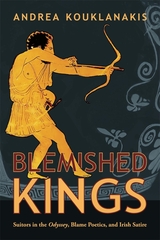 Blemished Kings: Suitors in the Odyssey, Blame Poetics, and Irish Satire
Andrea Kouklanakis
Harvard University Press, 2023 Each of the suitors in the Odyssey is eager to become the king of Ithaca by marrying Penelope and disqualifying Telemachus from his rightful royal inheritance. Their words are contentious, censorious, and intent on marking Odysseus’ son as unfit for kingship. However, in keeping with other reversals in the Odyssey, it is the suitors who are shown to be unfit to rule.
In Blemished Kings, Andrea Kouklanakis interprets the language of the suitors—their fighting words—as Homeric expressions of reproach and critique against unsuitable kings. She suggests that the suitors’ disparaging expressions, and the refutations they provoke from Telemachus and from Odysseus himself, rest on the ideology whereby a blemished king cannot rule. Therefore, the suitors vehemently reject Telemachus’ suggestion that they are to be blamed. She shows that in the Odyssey there is linguistic and semantic evidence for the concept that blame poetry can physically blemish, hence disqualify, rulers. In her comparative approach, Kouklanakis looks towards the regulatory role of satire in early Irish law and myth, particularly the taboo against a blemished-face king, offering thereby a socio-poetic context for the suitors’ struggles for kingship.
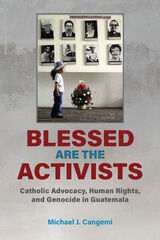 Blessed Are the Activists: Catholic Advocacy, Human Rights, and Genocide in Guatemala
Michael J. Cangemi
University of Alabama Press, 2024 Documents the history of Catholic activism to mitigate human rights abuses in Guatemala and the failed US policies in the country and region during the 1970s and 1980s
Blessed Are the Activists examines US Catholic activists’ influence on US-Guatemalan relations during the Guatemalan civil war’s most violent years in the 1970s and 1980s. Cangemi argues that Catholic activists’ definition of human rights, advocacy methods, and structure caused them to act as a transnational human rights NGO that engaged Guatemalan and US government officials on human rights issues, reported on Guatemala’s human rights violations, and criticized US foreign policy decisions as a contributing factor in Guatemala’s inequality, poverty, and violence. His work foregrounds how Catholic activists emphasized dignity for Guatemala’s poorest citizens and the connections they made between justice, solidarity, and peace and brought Guatemala’s violence, poverty, and inequality to greater global attention, often at great personal risk.
Cangemi pays considerable attention to multiple facets of the strained US-Guatemala diplomatic relationship, including how and why Guatemala’s military dictatorship exposed the internal flaws within the Carter administration’s decision to link military aid to human rights and how internal foreign policy debates in the Carter and Reagan administrations helped to intensify Guatemala’s bloody civil war. He also includes interviews conducted with Guatemalan genocide survivors and refugees to provide firsthand accounts of the consequences of those policymaking decisions. Finally, he offers readers an in-depth examination of the US Catholic press’s sharp rebukes of US policies on Guatemala and all of Central America when the broader Roman Catholic Church began to move farther toward the ideological right under John Paul II.
Blessed Are the Activists offers rich, original research and a gripping narrative. With Guatemala and other countries in Latin America still experiencing human rights abuses, this book will continue to provide context. It will appeal to a broad swath of readers, from scholars to the general public and students.
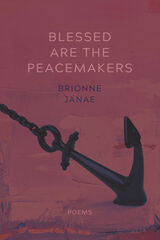 Blessed Are the Peacemakers: Poems
Brionne Janae
Northwestern University Press, 2022 Winner of the 2020 Cave Canem Northwestern University Press Poetry Prize
At once interested in the cyclical nature of domestic dysfunction and what we do when secrets of buried harm come to light, Blessed Are the Peacemakers asks what it means to make peace in the wake of intrafamilial violence and child sexual assault. These poems explore the ways the truth is often hidden behind layers of bleach and shame, and the ways we fail survivors by dismissing their stories and tolerating their abusers.
Filled with elegies to the people who have been murdered by state violence, racism, and anti-Blackness in the United States, Blessed Are the Peacemakers interrogates the lengths and limitations of grace. Brionne Janae examines what it means to survive—particularly as a Black girl, woman, queer person, or human—and uses self-portraiture to explore how familial and communal trauma plague our mental health. How do we survive the grief of the past and present without becoming numb to or consumed by it? How do we remember, despite our pain, to enjoy our bodies and our lives while we still have them?
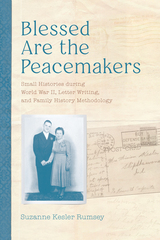 Blessed Are the Peacemakers: Small Histories during World War II, Letter Writing, and Family History Methodology
Suzanne Kesler Rumsey
University of Alabama Press, 2021 An uncommon and intimate account of the lives of two conscientious objectors
In the summer of 2013, Suzanne Kesler Rumsey discovered hundreds of letters exchanged between her late grandparents, Miriam and Benjamin Kesler. The letters, written between 1941 and 1946, were filled with typical wartime sentiments: love and longing, anguish at being apart, uncertainty about the war and the country’s future, and attempts at humor to keep their spirits up. What is unusual about their story is that Ben Kesler was not writing from a theater of war. Instead, Ben, a member of the Dunkard Brethren Church, was a conscientious objector. He, along with about 12,000 other men, opted to join the Civilian Public Service (CPS) and contribute to “work of national importance” at one of the 218 CPS camps around the country.
In Blessed Are the Peacemakers: Small Histories during World War II, Letter Writing, and Family History Methodology, Rumsey has mined not only her grandparents’ letters but also archival research on CPS camps and historical data from several Mennonite and Brethren archives to recapture the narrative of Ben’s service at two different camps and of Miriam’s struggle to support herself and her husband financially at the young age of seventeen. Ben and Miriam’s life during the war was extraordinarily ordinary, spanning six years of unrecognized and humble work for their country. Ben was not compensated for his work in the camps, and Miriam stayed home and worked as a day laborer, as a live-in maid, as a farmhand, and in the family butcher shop in order to earn enough money to support them both. Small histories like that of her grandparents, Rumsey argues, provide a unique perspective on significant political and historical moments.
Blessed Are the Peacemakers also explores the rhetorical functions of letter writing as well as the methodology of family history writing. Ben and Miriam’s letters provide an apt backdrop to examine the genre, a relatively understudied mode of literacy. Rumsey situates the young couple’s correspondence within ars dictaminis, the art of letter writing, granting new insights into the genre and how personal accounts shape our understanding of historical events.
 Blessed Mary and the Monks of England, 1000-1215
Matthew J. Mills
Catholic University of America Press, 2024 In the study of historical Mariology, the monastic communities of England before and after the Norman conquest receive too little attention. Classic surveys, such as Hilda Graef’s, Mary: A History of Doctrine and Devotion (2 vols, orig. 1963, 1965), highlight key figures and developments; and a fine book by Mary Clayton, The Cult of the Virgin Mary in Anglo-Saxon England (1990), takes scholarship as far as the early-eleventh century. The present volume, building upon such works, delves more deeply into the prayerful, intellectual and artistic contemplation of Mary during the age of monasticism, roughly the two hundred years prior to the advent of the mendicant orders in the thirteenth century. In the history of England, this was a time of high drama: conquest, power struggle, martyrdom; for English monasticism, it was marked by suppression, reform and renewal, patronage, and new currents of prayer and thought. Against this backdrop, Matthew Mills uncovers many vibrant contributions to Marian doctrine and devotion by theologians and communities living according to the sixth-century Rule of St Benedict: the Benedictines and their successors, the Cistercians, who arrived in England in 1128. In a thematic unfolding of Mary’s life and identity, from conception to assumption and intercession, a picture emerges of a Mariology shaped by the constant of monastic liturgy, anchored in deep biblical and patristic wisdom, cherished and transmitted by the Englishman, St Bede (d. 735), and animated by profound love. Towering figures, St Anselm (d. 1109) and St Ælred (d. 1167), are placed within a wider landscape, alongside lesser-known but still significant individuals, including the Cistercian abbot, John of Forde (d. 1214), royal confessor and pioneer of Marian exegesis of the Song of Songs. England’s monastic Mariology was colored by Greek as well as Latin influences and touched by key experiences of the contemporary church at large: apocalyptic disappointment, eleventh-century reform (sometimes called, ‘Gregorian’), sacramentalism, intense yearning for salvation. This book also sheds light upon the significance of Mary for medieval monks’ understanding of their own profession; their mother and their lady, she was, in addition, their icon and exemplar of life in St Benedict’s ‘school for the Lord’s service’ (Rule, Prol. 45).
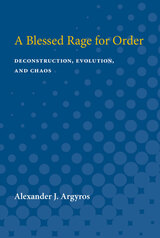 A Blessed Rage for Order: Deconstruction, Evolution, and Chaos
Alexander J. Argyros
University of Michigan Press, 1992 Recent developments in a range of disciplines, from high-energy physics to biogenetic anthropology, suggest a stunningly beautiful model of the cosmos. In A Blessed Rage for Order, Alexander Argyros explores the implications these discoveries might hold for literary criticism, for art, and, more broadly, for our understanding of the place of human culture in cosmic evolution.Argyros challenges deconstructionist paradigms, basing his own model largely on developing chaos theory, in combination with J. T. Graser's theory of evolution. He argues that the kind of dualism that postulates an unbreachable gap between human culture and prehuman nature must be replaced by a view of the universe as a communicative, dynamic, and evolving system: a model that allows the natural and cultural worlds to exist in an endlessly innovative continuum. Argyros presents a strong argument that although socio-institutional contexts play a large role in defining and constituting the world of human beings, other contexts must also be taken into account.The study draws on the work of E. O. Wilson, Douglas Hofstadter, Ilya Prigogine, and Karl Popper, among others, in proposing a new, interdisciplinary chaotic paradigm that Argyros believes can reaffirm such concepts as universality, identity, meaning, truth, and beauty.
Blessed Rage for Order: The New Pluralism in Theology
David Tracy
University of Chicago Press, 1995 In Blessed Rage for Order, David Tracy examines the cultural context in which theological pluralism emerged. Analyzing orthodox, liberal, neo-orthodox, and radical models of theology, Tracy formulates a new 'revisionist' model. He considers which methods promise the most certain results for a revisionist theology and applies his model to the principal questions in contemporary theology, including the meanings of religion, theism, and of christology.
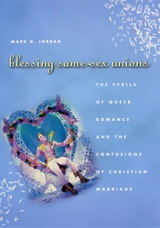 Blessing Same-Sex Unions: The Perils of Queer Romance and the Confusions of Christian Marriage
Mark D. Jordan
University of Chicago Press, 2005 At most church weddings, the person presiding over the ritual is not a priest or a pastor, but the wedding planner, followed by the photographer, the florist, and the caterer. And in this day and age, more wedding theology is supplied by Modern Bride magazine or reality television than by any of the Christian treatises on holy matrimony. Indeed, church weddings have strayed long and far from distinctly Christian aspirations. The costumes and gestures might still be right, but the intentions are hardly religious.
Why then, asks noted gay commentator Mark D. Jordan, are so many churches vehemently opposed to blessing same-sex unions? In this incisive work, Jordan shows how carefully selected ideals of Christian marriage have come to dominate recent debates over same-sex unions. Opponents of gay marriage, he reveals, too often confuse simplified ideals of matrimony with historical facts. They suppose, for instance, that there has been a stable Christian tradition of marriage across millennia, when in reality Christians have quarreled among themselves for centuries about even the most basic elements of marital theology, authorizing experiments like polygamy and divorce.
Jordan also argues that no matter what the courts do, Christian churches will have to decide for themselves whether to bless same-sex unions. No civil compromise can settle the religious questions surrounding gay marriage. And queer Christians, he contends, will have to discover for themselves what they really want out of marriage. If they are not just after legal recognition as a couple or a place at the social table, do they really seek the blessing of God? Or just the garish melodrama of a white wedding? Posing trenchant questions such as these, Blessing Same-Sex Unions will be a must-read for both sides of the debate over gay marriage in America today.
Blessing the Exoskeleton: Poems
Andrew Hemmert
University of Pittsburgh Press, 2022 Blessing the Exoskeleton is a southerner’s book about Michigan. Written over a two-year period in Kalamazoo, Andrew Hemmert’s poems address climate change, labor, love, and his attempts to live joyfully in a deteriorating world. Though the majority of these poems are narrative, they approach their stories in roundabout and slanted ways. A meditation on job seeking begets a story about the author’s father attempting to catch an owl in a fishing net. A fire down the road from the author’s apartment begets a meditation on telemarketing. Personal histories collide with headlines, resulting in poems that convey everyday experience and seek to praise it. Despite the northern cold and the tyranny of the news, Hemmert develops his own theories for navigating his life, finding beauty in an unfamiliar landscape and climate.
Blessing the House
Jim Daniels
University of Pittsburgh Press, 1997 Jim Daniels’ Blessing the House visits the sites of domestic faith - Catholic schools, sex and marriage, childbirth - in an attempt to witness a world worth believing in. In their search for hope, grace, and decency in the small dramas of an individual life, these poems become larger, more overtly political and express a genuine interest in human emotion.
Blessing the World: Ritual and Lay Piety in Medieval Religion
Derek A. Rivard
Catholic University of America Press, 2009 In Blessing the World, Derek A. Rivard studies liturgical blessing and its role in the religious life of Christians during the central and later Middle Ages, with a particular focus on the blessings of the Franco-Roman liturgical tradition from the tenth to late thirteenth centuries.
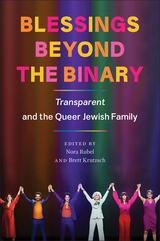 Blessings Beyond the Binary: Transparent and the Queer Jewish Family
Nora Rubel
Rutgers University Press, 2024 Transparent made history as the first television show to feature a transgender character in the main role, as the first streaming series to win the Golden Globe for Best Television Series, and as, in the words of journalist Debra Nussbaum Cohen, “the Jewiest show ever.” No television show in history has depicted the lives of American Jews with as much attention to Jewish rituals, quirks, or culture. And no series has portrayed issues of gender and sexuality alongside Judaism with such nuance and depth, making Transparent a landmark series in the history of television.
Blessings beyond the Binary brings together leading scholars to analyze and offer commentary on what scholar Josh Lambert calls “the most important work of Jewish culture of the century so far.” The book explores the show’s depiction of Jewish life, religion, and history, as well as Transparent’s scandals and criticisms and how it fits into and diverges from today’s transgender and queer politics.
The first book to focus on Transparent, Blessings beyond the Binary offers a rich analysis of the groundbreaking series and its connections to contemporary queer, trans, and Jewish life.
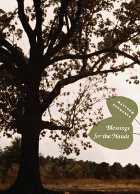 Blessings for the Hands
Matthew Schwartz
University of Chicago Press, 2008 From The Sky Inside the Shaking Tree
What you feel
reveals you.
Watch
for the sustenance
inclined to a source,
enamored of singularity,
quickly here and quickly
gone, shadow from which
the body's courage comes.
Fireflies
apparently stumbling.
I slapped one on my leg.
Its blood glowed.
Blessings for the Hands follows various speakers—often disabled speakers, who never once figure themselves as objects of complaint or self-pity—through the haunted dreamscape of “normalcy.” Indeed, dreams are continuous presences in this unusually subtle and elegant debut collection that juxtaposes physical circumstances with the vast interior life of the imagination. The subjects of Blessings for the Hands are real and imagined confrontations—and reconciliations—between family members, friends, strangers, and animals. Matthew Schwartz’s quasi-autobiographical verse complicates and clarifies the emotions waiting just underneath the patterns and expectations of the speakers’ daylight lives, where anger, joy, corporeality, and mortality all seem to collide. For Schwartz, poetry is a sleight of hand that keeps the reader guessing through nearly imperceptible shifts between present vision and absent reality. Blessings for the Hands is a lyric reckoning of the tension between the life we are given and the life we are determined to lead.
“Blessings for the Hands is emotionally strong and imaginatively wild, distinctive, deeply moving, without an ort of self-pity, and pervaded by ‘compassion down to your fingertips’ (which Chekhov said is ‘the only method’ both to write and to live). This angle of vision is sharp enough to unify much disparate material. The poems are clear and musical and consequently a pleasure to read and reread despite their gravity. I think this may be lasting work.”—Michael Ryan
Blessings for the Table - Birkon L'Shabbat
Rabbi Elyse D. Frishman
Central Conference of American Rabbis, 1997 An essential book for families and groups. This attractive 34-page pamphlet contains prayers and blessings for Kabbalat Shabbat, Birkat HaMazon, and Havdalah, as well as a song section and inserts for the holidays. Adapted from On the Doorposts of Your House by Chaim Stern.
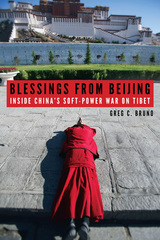 Blessings from Beijing: Inside China's Soft-Power War on Tibet
Greg C. Bruno
University Press of New England, 2018 As we approach the sixtieth anniversary of China’s 1959 invasion of Tibet—and the subsequent creation of the Tibetan exile community—the question of the diaspora’s survival looms large. Beijing’s foreign policy has grown more adventurous, particularly since the post-Olympic expansion of 2008. As the pressure mounts, Tibetan refugee families that have made their homes outside China—in the mountains of Nepal, the jungles of India, or the cold concrete houses high above the Dalai Lama’s monastery in Dharamsala—are migrating once again. Blessings from Beijing untangles the chains that tie Tibetans to China and examines the political, social, and economic pressures that are threatening to destroy Tibet’s refugee communities. Journalist Greg Bruno has spent nearly two decades living and working in Tibetan areas. Bruno journeys to the front lines of this fight: to the high Himalayas of Nepal, where Chinese agents pay off Nepali villagers to inform on Tibetan asylum seekers; to the monasteries of southern India, where pro-China monks wish the Dalai Lama dead; to Asia’s meditation caves, where lost souls ponder the fine line between love and war; and to the streets of New York City, where the next generation of refugees strategizes about how to survive China’s relentless assault. But Bruno’s reporting does not stop at well-worn tales of Chinese meddling and political intervention. It goes beyond them—and within them—to explore how China’s strategy is changing the Tibetan exile community forever.
 Blessings in Disguise: or, the Morality of Evil
Jean Starobinski
Harvard University Press, 1993 In the literature and aesthetic theory of modern times, we have witnessed the revival of the claim that the conventions and artifices of civilization are the source of many ills. Far from establishing harmonious relationships between individuals, they have sometimes legitimized forms of violence and oppression. But while conventions and artifices may be a source of evil, they are also a means by which evils can be reduced or overcome.
One of our greatest living critics, Jean Starobinski pursues this line of reflection by taking us back to the thought of the eighteenth century. Civilization, he argues, has always been entangled with barbarism. As a form of politeness, a refinement of manners, civilization was said to legitimize deceit. But aren’t the conventions of civilized living, however objectionable, a blessing in disguise? It is the task of art, he contends, to make the most of these conventions, to use the very disguises of civilization to counter the barbarism they mask. Tracing this idea through seventeenth- and eighteenth-century French literature, Starobinski charts the historical and intellectual limits of criticism itself.
These reflections are nourished by a series of sensitive and perceptive studies: the use of the word "civilization" in the Age of Enlightenment; the classical doctrine of civility and the art of flattery; fable and mythology in the seventeenth and eighteenth centuries; the relations between exile, satire, and tyranny in Montesquieu; philosophy and style in the writings of Voltaire; and the search for the remedy of the disease in the thought of Rosseau. A development and refinement of themes that have preoccupied Starobinski throughout his career, Blessings in Disguise is criticism at its best, testing its own limits and extending ours.
The Blind
Edited by Alfredo Cramerotti
Intellect Books, 2015 Images of animals are all around us. Yet the visibility offered by wildlife photography can't help but contribute to an image of the animal as fundamentally separate from the human. But how can we get closer to animals without making them aware of us or changing their relationship to their environment?
The Blind might be the answer. Developed for naturalists by the Institute of Critical Zoologists, the Blind is a camouflage cloak that works on the principle that an object vanishes from sight if light rays striking it are not reflected, but are instead forced to flow around as if it were not there. In fifty stunning color photographs, this volumeshows the cloak tested in nature reserves, grasslands, and urban environments. By taking the human out of the picture, The Blind offers an opportunity to explore how we see animals in photography.
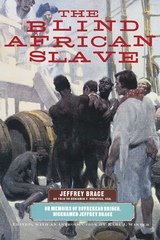 The Blind African Slave: Memoirs of Boyrereau Brinch, Nicknamed Jeffrey Brace
Jeffrey Brace, as told to Benjamin F. Prentiss, Esq.
University of Wisconsin Press, 2005 The Blind African Slave recounts the life of Jeffrey Brace (né Boyrereau Brinch), who was born in West Africa around 1742. Captured by slave traders at the age of sixteen, Brace was transported to Barbados, where he experienced the shock and trauma of slave-breaking and was sold to a New England ship captain. After fighting as an enslaved sailor for two years in the Seven Years War, Brace was taken to New Haven, Connecticut, and sold into slavery. After several years in New England, Brace enlisted in the Continental Army in hopes of winning his manumission. After five years of military service, he was honorably discharged and was freed from slavery. As a free man, he chose in 1784 to move to Vermont, the first state to make slavery illegal. There, he met and married an African woman, bought a farm, and raised a family. Although literate, he was blind when he decided to publish his life story, which he narrated to a white antislavery lawyer, Benjamin Prentiss, who published it in 1810. Upon his death in 1827, Brace was a well-respected abolitionist. In this first new edition since 1810, Kari J. Winter provides a historical introduction, annotations, and original documents that verify and supplement our knowledge of Brace's life and times.
 Blind Date: Sex and Philosophy
Anne Dufourmantelle. Translated by Catherine Porter.
University of Illinois Press, 2007 Bringing sex and philosophy together on a blind date, Anne Dufourmantelle’s provocative study uses this analogy to uncover and examine philosophy’s blind spot. Delightful and startling comparisons spring from the date: both sex and philosophy are dangerous, both are socially subversive, and both are obsessions. Although sex and philosophy have much in common, however, they have scarcely known one another until now. Socrates and Diogenes had little to say about sex, and although it was notoriously explored by the Marquis de Sade, this study explains why philosophy has never been fully sexualized nor sex really philosophized. Blind Date highlights the marked deletion of sexual topics and themes from philosophical works, while also opening doors for their union. Inviting readers to remember that thought does not require repressed desire, Dufourmantelle argues that sex is everywhere, and it affects all kinds of thinking.
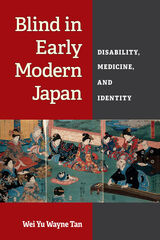 Blind in Early Modern Japan: Disability, Medicine, and Identity
Wei Yu Wayne Tan
University of Michigan Press, 2022 While the loss of sight—whether in early modern Japan or now—may be understood as a disability, blind people in the Tokugawa period (1600–1868) could thrive because of disability. The blind of the era were prominent across a wide range of professions, and through a strong guild structure were able to exert contractual monopolies over certain trades. Blind in Early Modern Japan illustrates the breadth and depth of those occupations, the power and respect that accrued to the guild members, and the lasting legacy of the Tokugawa guilds into the current moment.
The book illustrates why disability must be assessed within a particular society’s social, political, and medical context, and also the importance of bringing medical history into conversation with cultural history. A Euro-American-centric disability studies perspective that focuses on disability and oppression, the author contends, risks overlooking the unique situation in a non-Western society like Japan in which disability was constructed to enhance blind people’s power. He explores what it meant to be blind in Japan at that time, and what it says about current frameworks for understanding disability.
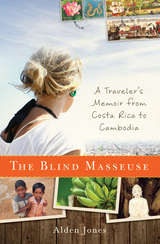 The Blind Masseuse: A Traveler's Memoir from Costa Rica to Cambodia
Alden Jones
University of Wisconsin Press, 2013 Through personal journeys both interior and across the globe, Alden Jones investigates what motivates us to travel abroad in search of the unfamiliar. By way of explorations to Costa Rica, Bolivia, Nicaragua, Cuba, Burma, Cambodia, Egypt, and around the world on a ship, Jones chronicles her experience as a young American traveler while pondering her role as an outsider in the cultures she temporarily inhabits. Her wanderlust fuels a strong, high-adventure story and, much in the vein of classic travel literature, Jones's picaresque tale of personal evolution informs her own transitions, rites of passage, and understandings of her place as a citizen of the world. With sharp insight and stylish prose, Jones asks: Is there a right or wrong way to travel? The Blind Masseuse concludes that there is, but that it's not always black and white.
Gold Winner for Travel Essays, Foreword Books of the Year
Gold Medal for Travel Essays, Independent Publisher Book Awards
Winner, Bisexual Book Awards, Bisexual Biography/Memoir Category
Finalist, Housatonic Book Awards
Longlist of eight, PEN/Diamonstein Spielvogel Award for the Art of the Essay
Finalist, Travel Book or Guide Award, North American Travel Journalists Association
The Blind Masseuse: A Traveler's Memoir from Costa Rica to Cambodia
Alden Jones
University of Wisconsin Press, 2017 Through personal journeys both interior and across the globe, Alden Jones investigates what motivates us to travel abroad in search of the unfamiliar.
By way of explorations to Costa Rica, Bolivia, Nicaragua, Cuba, Burma, Cambodia, Egypt, and around the world on a ship, Jones chronicles her experience as a young American traveler while pondering her role as an outsider in the cultures she temporarily inhabits. Her wanderlust fuels a strong, high-adventure story and, much in the vein of classic travel literature, Jones's picaresque tale of personal evolution informs her own transitions, rites of passage, and understandings of her place as a citizen of the world. With sharp insight and stylish prose, Jones asks: Is there a right or wrong way to travel? The Blind Masseuse concludes that there is, but that it's not always black and white.
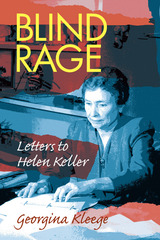 Blind Rage: Letters to Helen Keller
Georgina Kleege
Gallaudet University Press, 2006 As a young blind girl, Georgina Kleege repeatedly heard the refrain, “Why can’t you be more like Helen Keller?” Kleege’s resentment culminates in her book Blind Rage: Letters to Helen Keller, an ingenious examination of the life of this renowned international figure using 21st-century sensibilities. Kleege’s absorption with Keller originated as an angry response to the ideal of a secular saint, which no real blind or deaf person could ever emulate. However, her investigation into the genuine person revealed that a much more complex set of characters and circumstances shaped Keller’s life.
Blind Rage employs an adroit form of creative nonfiction to review the critical junctures in Keller’s life. The simple facts about Helen Keller are well-known: how Anne Sullivan taught her deaf-blind pupil to communicate and learn; her impressive career as a Radcliffe graduate and author; her countless public appearances in various venues, from cinema to vaudeville, to campaigns for the American Foundation for the Blind. But Kleege delves below the surface to question the perfection of this image. Through the device of her letters, she challenges Keller to reveal her actual emotions, the real nature of her long relationship with Sullivan, with Sullivan’s husband, and her brief engagement to Peter Fagan. Kleege’s imaginative dramatization, distinguished by her depiction of Keller’s command of abstract sensations, gradually shifts in perspective from anger to admiration. Blind Rage criticizes the Helen Keller myth for prolonging an unrealistic model for blind people, yet it appreciates the individual who found a practical way to live despite the restrictions of her myth.
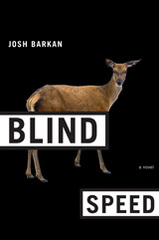 Blind Speed: A Novel
Josh Barkan
Northwestern University Press, 2008 Finalist for the Paterson Fiction Prize 2009 Not since Don DeLillo and George Saunders has a writer caught the humor and irreverent seriousness of our time like Barkan has through his protagonist Paul Berger, a flawed hero whose so-called fate drives him toward enlightenment just as surely as it propels him to destruction. Berger is stunned when he receives an ominous palm reading from a savvy guru at a health retreat in Iowa, of all places. And now it seems the prophecy is coming true. His fiancée, who is about to leave him, is shot at a historic reenactment of the Revolutionary War in Concord. One of his brothers, an astronaut, dies on 9/11 in the Pentagon. And his more famous brother, a lawyer and politician, kidnaps him in a media campaign to win an election. But is Paul’s life really controlled by fate? Or is the prophecy a lie he has latched onto ever since his band went under, leaving him almost famous yet unknown—a teacher at a community college, struggling to keep his job? Blind Speed is a wildly entertaining exploration of intersecting lives in which what happens is never solely by chance or choice. Barkan has built a uniquely American satirical novel, a thoroughly twisted journey of discovery that pops and fires from its first shot in Concord to its last rifle blast, which echoes across the heartland. With global warming, 9/11, government and corporate deceit, and ecoterrorism, the novel dives into epic ideas, capturing America in all its dangerous myths.
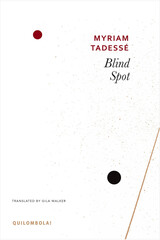 Blind Spot
Myriam Tadessé
Seagull Books, 2021 Set in the entertainment world in France, this searing memoir explores the realities of being a mixed or biracial French citizen.
In Blind Spot, Myriam Tadessé exposes the difficulty, even the impossibility, for France to truly understand and celebrate the lived realities of mixed or biracial French citizens. What the French word métis—which translates to “half-breed” or “mixed-race”—hides is how central the notion of race actually is in a society that claims to repudiate it. The French film and theater world, in which Tadessé has made her career, appears unable to confront the individuality of the performers. They are required to correspond to categories—often based on race—that don’t allow for biracial identities. This classification not only contradicts France’s asserted ideals but also views as anomalies those who defy ethno-racial assumptions.
Drawing on her personal experiences as a biracial Ethiopian-French woman and her family history, Tadessé explores the realities of life for mixed-race individuals in France through her searing and honest memoir.
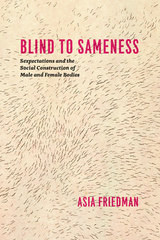 Blind to Sameness: Sexpectations and the Social Construction of Male and Female Bodies
Asia Friedman
University of Chicago Press, 2013 What is the role of the senses in how we understand the world? Cognitive sociology has long addressed the way we perceive or imagine boundaries in our ordinary lives, but Asia Friedman pushes this question further still. How, she asks, did we come to blind ourselves to sex sameness? Drawing on more than sixty interviews with two decidedly different populations—the blind and the transgendered— Blind to Sameness answers provocative questions about the relationships between sex differences, biology, and visual perception. Both groups speak from unique perspectives that magnify the social construction of dominant visual conceptions of sex, allowing Friedman to examine the visual construction of the sexed body and highlighting the processes of social perception underlying our everyday experience of male and female bodies. The result is a notable contribution to the sociologies of gender, culture, and cognition that will revolutionize the way we think about sex.
The Blind Writer: Stories and a Novella
Sameer Pandya
University of Hawaii Press, 2015 Together, the five stories and novella in this collection follow the lives of first- and second-generation Indian Americans living in contemporary California. The characters share a similar sensibility: a sense that immigration is a distant memory, yet an experience that continues to shape the decisions they make in subtle and surprising ways as they go about the complicated business of everyday living. The collection is anchored by the title novella about a love triangle between an aging, blind writer, his younger beautiful wife, and a young man desperate to start a writing life. Over several months, the three will get to know one another and move toward a moment that will change the lives of each of them forever.
Blinders, Blunders, and Wars: What America and China Can Learn
David C. Gompert
RAND Corporation, 2014 The history of wars caused by misjudgments, from Napoleon’s invasion of Russia to America’s invasion of Iraq, reveals that leaders relied on cognitive models that were seriously at odds with objective reality. Blinders, Blunders, and Wars analyzes eight historical examples of strategic blunders regarding war and peace and four examples of decisions that turned out well, and then applies those lessons to the current Sino-American case.
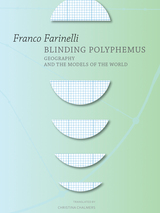 Blinding Polyphemus: Geography and the Models of the World
Franco Farinelli
Seagull Books, 2016 Today, we believe that the map is a copy of the Earth, without realizing that the opposite is true: in our culture the Earth has assumed the form of a map. In Blinding Polyphemus, Franco Farinelli elucidates the philosophical correlation between cultural evolution and shifting cartographies of modern society, giving readers an interdisciplinary study that attempts to understand and redefine the fundamental structures of cartography, architecture, and the notion of “space.”
Following the lessons of nineteenth-century critical German geography, this is a manual of geography without any map. To indicate where things are means already responding, in implicit and unreflective ways, to prior questions about their nature. Blinding Polyphemus not only takes account of the present state of the Earth and of human geography, it redefines the principal models we possess for the description of the world: the map, above all, as well as the landscape, subject, place, city, and space.
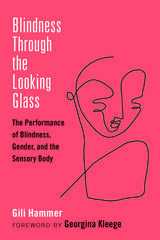 Blindness Through the Looking Glass: The Performance of Blindness, Gender, and the Sensory Body
Gili Hammer
University of Michigan Press, 2019 Modern Western culture is saturated with images, imprinting visual standards of concepts such as beauty and femininity onto our collective consciousness. Blindness Through the Looking Glass examines how gender and femininity are performed and experienced in everyday life by women who do not rely on sight as their dominant mode of perception, identifying the multiple senses involved in the formation of gender identity within social interactions. Challenging visuality as the dominant mode to understand gender, social performance, and visual culture, the book offers an ethnographic investigation of blindness (and sight) as a human condition, putting both blindness and vision “on display” by discussing people’s auditory, tactile, and olfactory experiences as well as vision and sight, and by exploring ways that individuals perform blindness and “sightedness” in their everyday lives. Based on in-depth interviews with 40 blind women in Israel and anthropological fieldwork, the book investigates the social construction and daily experience of blindness in a range of domains. Uniquely, the book brings together blind symbolism with the everyday experiences of blind and sighted individuals, joining in mutual conversation the fields of disability studies, visual culture, anthropology of the senses, and gender studies.
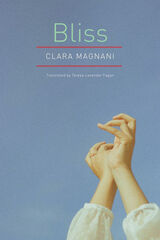 Bliss
Clara Magnani
Seagull Books, 2021 An engrossing novel about love and grief that introduces an important francophone author to English-speaking readers.
Rome, 2014, late summer. While he is reading on his sun-drenched terrace, Giangiacomo’s heart stops. A quick, painless death—something he had always hoped for, his daughter, Elvira, remembers. A few days later, Elvira comes across an unfinished manuscript in her father’s flat. In it, she discovers a love story between Giangiacomo—Gigi, to his loved ones—and a Belgian journalist, Clara, which had been going on for over four years. Gigi’s manuscript tells of how their “mature love,” an expression that became code between Gigi and Clara, blossomed unexpectedly and of the happiness of their meetings, the abandon of their bodies, their laughter, the films they watched and rewatched together. As she struggles to cope with the loss of Gigi, Clara writes her own version of their story. Her “journal of absence” is first addressed to Gigi, then, gradually, to Elvira. She confides in the young woman on the threshold of adult life, with discretion and tenderness, describing the fullness of the hidden love she shared with her father.
The Blithedale Romance
Nathaniel Hawthorne
Harvard University Press, 2010 One of Nathaniel Hawthorne’s great romances, The Blithedale Romance draws upon the author’s experiences at Brook Farm, the short-lived utopian community where Hawthorne spent much of 1841. Blithedale (“Happy Valley”), another would-be modern Arcadia, is the stage for Hawthorne’s grimly comic tragedy (Henry James famously called the novel “the lightest, the brightest, the liveliest” of Hawthorne’s “unhumorous fictions”). In his introduction, Robert S. Levine considers biographical and historical contexts and offers a fresh appreciation of the novel’s ironic first-person narrator.The John Harvard Library edition reproduces the authoritative text of The Blithedale Romance in The Centenary Edition of the Works of Nathaniel Hawthorne.
 The Blitz Companion: Aerial Warfare, Civilians and the City since 1911
Mark Clapson
University of Westminster Press, 2019 The Blitz Companion offers a unique overview of a century of aerial warfare, its impact on cities and the people who lived in them. It tells the story of aerial warfare from the earliest bombing raids and in World War 1 through to the London Blitz and Allied bombings of Europe and Japan. These are compared with more recent American air campaigns over Cambodia and Vietnam in the 1960s and 1970s, the NATO bombings during the Balkan Wars of the 1990s, and subsequent bombings in the aftermath of 9/11. Beginning with the premonitions and predictions of air warfare and its terrible consequences, the book focuses on air raids precautions, evacuation and preparations for total war, and resilience, both of citizens and of cities. The legacies of air raids, from reconstruction to commemoration, are also discussed. While a key theme of the book is the futility of many air campaigns, care is taken to situate them in their historical context. The Blitz Companion also includes a guide to documentary and visual resources for students and general readers. Uniquely accessible, comparative and broad in scope this book draws key conclusions about civilian experience in the twentieth century and what these might mean for military engagement and civil reconstruction processes once conflicts have been resolved.
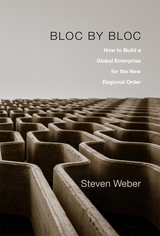 Bloc by Bloc: How to Build a Global Enterprise for the New Regional Order
Steven Weber
Harvard University Press, 2019 At a time when globalization is taking a step backward, what’s the best way to organize a global enterprise? The key, explains political economist Steven Weber, is to prepare for a world increasingly made up of competing regions defined by their own rules and standards.
Globalization has taken a hit as trade wars and resistance to mass migrations dominate headlines. Are we returning to the old world of stand-alone nations? Political economist Steven Weber argues that we are heading toward something new. Global connectedness will not dissolve but will be defined by “regional” blocs, demarcated more by the rules and standards they follow than by territory. For leaders of firms and NGOs with global ambitions, navigating this transformation is the strategic challenge of the decade.
Not long ago, we thought the world was flattening out, offering a level playing field to organizations striving for worldwide reach. As global economic governance expanded, firms shifted operations to wherever was most efficient—designing in one country and buying, manufacturing, and selling in others. Today, the world looks bumpier, with rising protectionism, national struggles over data control, and tensions over who should set worldwide standards. Expect emerging regional blocs to be dominated by the major rule-makers: the US, China, and possibly the EU. Firms and NGOs will need to remake themselves by building complete, semi-independent organizations in each region. Every nation will choose which rule-maker it wants to align with, and it may not be the one next door. This new world has the potential to be more prosperous, Weber argues, but friction between the dynamics of geography and technology will make it more risky.
Pioneering research, creative thinking, and colorful storytelling from the frontlines of the global economy combine to make this a must-read for leaders and analysts facing tomorrow’s world.
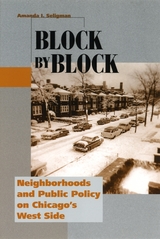 Block by Block: Neighborhoods and Public Policy on Chicago's West Side
Amanda I. Seligman
University of Chicago Press, 2005 In the decades following World War II, cities across the United States saw an influx of African American families into otherwise homogeneously white areas. This racial transformation of urban neighborhoods led many whites to migrate to the suburbs, producing the phenomenon commonly known as white flight. In Block by Block, Amanda I. Seligman draws on the surprisingly understudied West Side communities of Chicago to shed new light on this story of postwar urban America.
Seligman's study reveals that the responses of white West Siders to racial changes occurring in their neighborhoods were both multifaceted and extensive. She shows that, despite rehabilitation efforts, deterioration in these areas began long before the color of their inhabitants changed from white to black. And ultimately, the riots that erupted on Chicago's West Side and across the country in the mid-1960s stemmed not only from the tribulations specific to blacks in urban centers but also from the legacy of accumulated neglect after decades of white occupancy. Seligman's careful and evenhanded account will be essential to understanding that the "flight" of whites to the suburbs was the eventual result of a series of responses to transformations in Chicago's physical and social landscape, occurring one block at a time.
Blockade Runners of the Confederacy
Hamilton Cochran
University of Alabama Press, 2004 A readable, exciting chronicle of the men and ships that ran federal naval blockades during the Civil War
Within four weeks of the fall of Fort Sumter, President Abraham Lincoln had declared a blockade of over four thousand miles of Confederate coastline, from Cape Henry in Virginia to the Mexican border. In response, professional runners, lured by both profits and patriotism, built faster, sleeker, low-profile ships and piloted them through the ever-thickening Northern cordon. The tonnage they imported, including items ranging from straight pins to marine engines, sustained the South throughout the conflict. This exciting chronicle of the men and ships that ran federal naval blockades during the Civil War also provides an overall assessment of the blockades conception, effectiveness, and impact on the Southern populace.
A Blockaded Family: Life in Southern Alabama During the Civil War
Parthenia Hague
University of Alabama Press, 2005 Recounts how a frightened and war-weary household dealt with privations during the blockade imposed on the South by the federal navy Parthenia Hague experienced the Civil War while employed as a schoolteacher on a plantation near Eufaula, Alabama. This book recounts how a frightened and war-weary household dealt with privations during the blockade imposed on the South by the federal navy. The memoir of Parthenia Hague is a detailed look at the ingenious industry and self-sufficiency employed by anxious citizens as the northern army closed in.
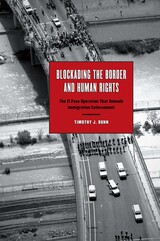 Blockading the Border and Human Rights: The El Paso Operation that Remade Immigration Enforcement
By Timothy J. Dunn
University of Texas Press, 2009 To understand border enforcement and the shape it has taken, it is imperative to examine a groundbreaking Border Patrol operation begun in 1993 in El Paso, Texas, "Operation Blockade." The El Paso Border Patrol designed and implemented this radical new strategy, posting 400 agents directly on the banks of the Rio Grande in highly visible positions to deter unauthorized border crossings into the urban areas of El Paso from neighboring Ciudad Juárez—a marked departure from the traditional strategy of apprehending unauthorized crossers after entry. This approach, of "prevention through deterrence," became the foundation of the 1994 and 2004 National Border Patrol Strategies for the Southern Border. Politically popular overall, it has rendered unauthorized border crossing far less visible in many key urban areas. However, the real effectiveness of the strategy is debatable, at best. Its implementation has also led to a sharp rise in the number of deaths of unauthorized border crossers. Here, Dunn examines the paradigm-changing Operation Blockade and related border enforcement efforts in the El Paso region in great detail, as well as the local social and political situation that spawned the approach and has shaped it since. Dunn particularly spotlights the human rights abuses and enforcement excesses inflicted on local Mexican Americans and Mexican immigrants as well as the challenges to those abuses. Throughout the book, Dunn filters his research and fieldwork through two competing lenses, human rights versus the rights of national sovereignty and citizenship.
 Blockchain
Sandra Hirsh and Susan Alman
American Library Association, 2019 This book in the Library Futures Series examines blockchain technology, a concept with far-reaching implications for the future of the information professions. Blockchain uses a distributed database (multiple devices not connected to a common processor) that organizes data into records (blocks) that have cryptographic validation. The data are timestamped and linked to previous records so that they can only be changed by those who own the encryption keys to write to the files. In this book, editors Hirsh and Alman offer a primer of what librarians and information professionals need to understand about blockchain technology. Several speculative visions for how blockchain could support the core work of libraries are included to help librarians understand the possibilities for improved operations and services. Featuring essays from a range of information professionals who have interest and experience in blockchain technologies, this book presents valuable ideas for exploration relevant to everyone interested in the future of librarianship.
Blockchain and Machine Learning for e-Healthcare Systems
Balusamy Balamurugan
The Institution of Engineering and Technology, 2021 Blockchain and machine learning technologies can mitigate healthcare issues such as slow access to medical data, poor system interoperability, lack of patient agency, and data quality and quantity for medical research. Blockchain technology facilitates and secures the storage of information in such a way that doctors can see a patient's entire medical history, but researchers see only statistical data instead of any personal information. Machine learning can make use of this data to notice patterns and give accurate predictions, providing more support for the patients and also in research related fields where there is a need for accurate data to predict credible results.
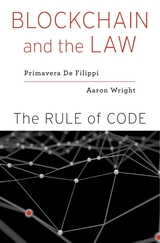 Blockchain and the Law: The Rule of Code
Primavera De Filippi and Aaron Wright
Harvard University Press, 2018 “Blockchains will matter crucially; this book, beautifully and clearly written for a wide audience, powerfully demonstrates how.”
—Lawrence Lessig
“Attempts to do for blockchain what the likes of Lawrence Lessig and Tim Wu did for the Internet and cyberspace—explain how a new technology will upend the current legal and social order… Blockchain and the Law is not just a theoretical guide. It’s also a moral one.”
—Fortune
Bitcoin has been hailed as an Internet marvel and decried as the preferred transaction vehicle for criminals. It has left nearly everyone without a computer science degree confused: how do you “mine” money from ones and zeros?
The answer lies in a technology called blockchain. A general-purpose tool for creating secure, decentralized, peer-to-peer applications, blockchain technology has been compared to the Internet in both form and impact. Blockchains are being used to create “smart contracts,” to expedite payments, to make financial instruments, to organize the exchange of data and information, and to facilitate interactions between humans and machines. But by cutting out the middlemen, they run the risk of undermining governmental authorities’ ability to supervise activities in banking, commerce, and the law. As this essential book makes clear, the technology cannot be harnessed productively without new rules and new approaches to legal thinking.
“If you…don’t ‘get’ crypto, this is the book-length treatment for you.”
—Tyler Cowen, Marginal Revolution
“De Filippi and Wright stress that because blockchain is essentially autonomous, it is inflexible, which leaves it vulnerable, once it has been set in motion, to the sort of unforeseen consequences that laws and regulations are best able to address.”
—James Ryerson, New York Times Book Review
Blockchain for 5G Healthcare Applications: Security and privacy solutions
Sudeep Tanwar
The Institution of Engineering and Technology, 2022 A secured system for Healthcare 4.0 is vital to all stakeholders, including patients and caregivers. Using the new Blockchain system of trusted ledgers would help guarantee authenticity in the multi-access system that is Healthcare 4.0. This is the first comprehensive book that explores how to achieve secure systems for Healthcare 4.0 using Blockchain, with emphasis on the key challenges of privacy and security.
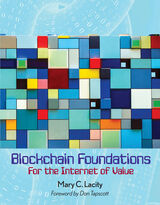 Blockchain Foundations: For the Internet of Value
Mary C. Lacity
Epic Books, 2020 While there are many books on blockchains, this guide focuses on blockchain applications for business. The target audience is business students, professionals, and managers who want to learn about the overall blockchain landscape — the investments, the size of markets, major players and the global reach — as well as the potential business value of blockchain applications and the challenges that must be overcome to achieve that value. We present use cases and derive action principles for building enterprise blockchain capabilities. Readers will learn enough about the underlying technologies to speak intelligently to technology experts in the space, as the guide also covers the blockchain protocols, code bases and provides a glossary of terms. We use this guide as the textbook for our undergraduate and graduate Blockchain Fundamentals course at the University of Arkansas. Other professors interested in adopting this guide for instructional purposes are welcome to contact the author for supporting instructional materials.
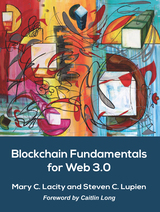 Blockchain Fundamentals for Web 3.0: -
Mary C. Lacity
Epic Books, 2022 Our book explains the movement to establish online trust through the decentralization of value, identity, and data ownership. This movement is part of ‘Web 3.0’, the idea that individuals rather than institutions will control and benefit from online social and economic activities. Blockchain technologies are the digital infrastructure for Web 3.0. While there are many books on blockchains, crypto, and digital assets, we focus on blockchain applications for Web 3.0. Our target audience is students, professionals, and managers who want to learn about the overall Web 3.0 landscape—the investments, the size of markets, major players, and the global reach—as well as the economic and social value of applications.
We present applications that use Web 3.0 technologies to unlock value in DeFi, NFTs, supply chains, media, identity, credentials, metaverses, and more. Readers will learn about the underlying technologies, the maturity of Web 3.0 today, and the future of the space from thought-leaders. This textbook is used by undergraduate and graduate Blockchain Fundamentals courses at the University of Arkansas, the University of Wyoming, and other universities around the world. Professors interested in adopting this book for instructional purposes are welcome to contact the authors for supporting instructional materials.
Blockchain, Smart Contracts and Distributed Ledger Technologies in the Built Environment: Key concepts, technologies, and applications
Mohamad Kassem
The Institution of Engineering and Technology, 2025 The built environment, encompassing the spaces we inhabit, the infrastructure that connects us, and the systems that sustain our societies, is foundational to human progress. It shapes how we live, work and interact, serving as a fundamental for social and economic prosperity. Yet, despite its importance, the sector faces enduring challenges: inefficiencies, insufficient collaboration, significant environmental impact, and a slow pace of transformative innovation, particularly in areas such as value creation, business model evolution, and major sector-wide transformations.
Blockchain Technology for Secure Social Media Computing
Robin Singh Bhadoria
The Institution of Engineering and Technology, 2023 Blockchain is a digital ledger of transactions duplicated and distributed across an entire network of computer systems on the blockchain which makes it more difficult to hack or tamper with. The popularity of blockchain has been increasing with the growth of social media and the internet of things (IoT). Social media are interactive digitally mediated technologies that facilitate the creation or sharing and exchange of information, ideas, opinions and interests via virtual communities and social network platforms. However, unmonitored social accounts can be the target of hackers who post fraudulent messages or virus-infected links that spread to contacts and followers, and "employee weakness" is responsible for 20% of cyberattacks in companies. So, it has become essential to secure both personal and professional social media networks, accounts and data.
Blockchain Technology for Smart Grids: Implementation, management and security
H.L. Gururaj
The Institution of Engineering and Technology, 2022 Smart grids with distributed clean energy generation, storage and prosumers are the future of energy systems. They need two-way digital communication between multiple customers and suppliers of energy, to produce, buy and sell electricity to the grid at small scales. These arrangements need a system that maintains, checks, and registers information about transactions.
Blockchain Technology in e-Healthcare Management
Suyel Namasudra
The Institution of Engineering and Technology, 2022 The healthcare arena has seen a shift in recent years, with more healthcare provisions being delivered or managed via electronic means. Healthcare providers can now provide patients with diagnosis, treatment, monitoring, or a prescription without ever sharing the same physical space. With so much more patient data now stored and accessed electronically, the security of this information is ever more critical to the delivery of effective and efficient healthcare services. As blockchains are resistant to modification of their data, blockchain technology therefore provides traceable and reliable security to e-Healthcare systems and services.
Blockchains for Network Security: Principles, technologies and applications
Haojun Huang
The Institution of Engineering and Technology, 2021 Blockchain technology is a powerful, cost-effective method for network security. Essentially, it is a decentralized ledger for storing all committed transactions in trustless environments by integrating several core technologies such as cryptographic hash, digital signature and distributed consensus mechanisms.
The Blond Box
Toby Olson
University of Alabama Press, 2003 El Malabarista, pianist and juggler for a troupe of sexual performance artists, is found dead in the dusty wilderness, his fingers crushed. Beginning like a murder mystery, The Blond Box then defies all the usual expectations of a murder mystery plot, by juxtaposing "real" events in two different decades with a draft version of a hack sci-fi novella. This mixed narrative serves as a meta-fictional commentary on the efforts of a retired sex-theater artist, a hairstylist/pulp writer, a doctoral student, and a host of other characters to, not only solve the murder, but uncover its motivation, which seems to be linked to El Malabarista's knowledge of the whereabouts of a certain boxed treasure. By turns lyrical and scatological, puerile and cerebral, The Blond Box is at once a daring formal experiment and a good yarn.
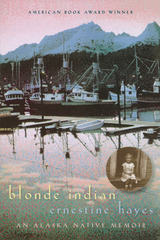 Blonde Indian: An Alaska Native Memoir
Ernestine Hayes
University of Arizona Press, 2006 In the spring, the bear returns to the forest, the glacier returns to its source, and the salmon returns to the fresh water where it was spawned. Drawing on the special relationship that the Native people of southeastern Alaska have always had with nature, Blonde Indian is a story about returning.
Told in eloquent layers that blend Native stories and metaphor with social and spiritual journeys, this enchanting memoir traces the author’s life from her difficult childhood growing up in the Tlingit community, through her adulthood, during which she lived for some time in Seattle and San Francisco, and eventually to her return home. Neither fully Native American nor Euro-American, Hayes encounters a unique sense of alienation from both her Native community and the dominant culture. We witness her struggles alongside other Tlingit men and women—many of whom never left their Native community but wrestle with their own challenges, including unemployment, prejudice, alcoholism, and poverty.
The author’s personal journey, the symbolic stories of contemporary Natives, and the tales and legends that have circulated among the Tlingit people for centuries are all woven together, making Blonde Indian much more than the story of one woman’s life. Filled with anecdotes, descriptions, and histories that are unique to the Tlingit community, this book is a document of cultural heritage, a tribute to the Alaskan landscape, and a moving testament to how going back—in nature and in life—allows movement forward.
|
|
